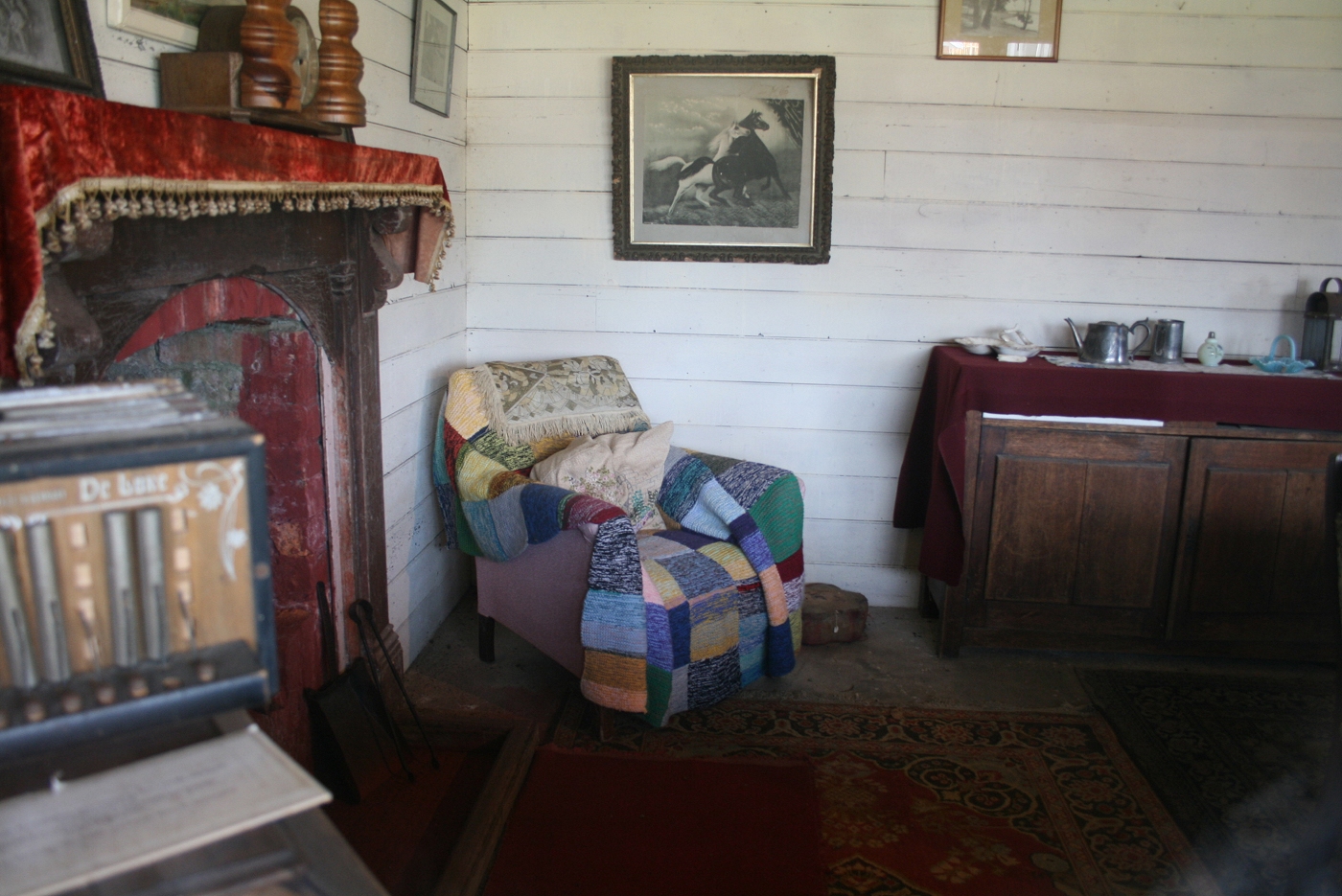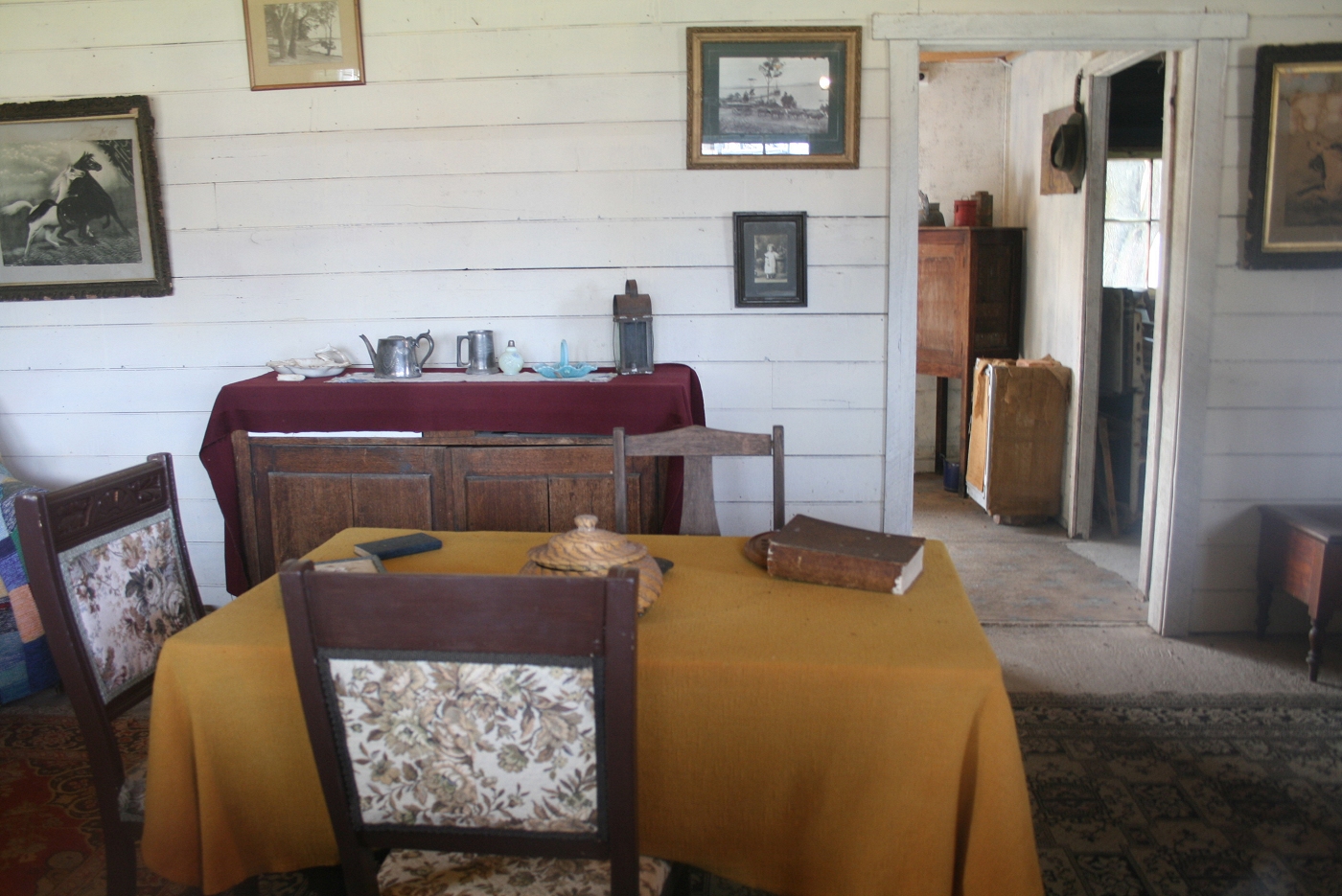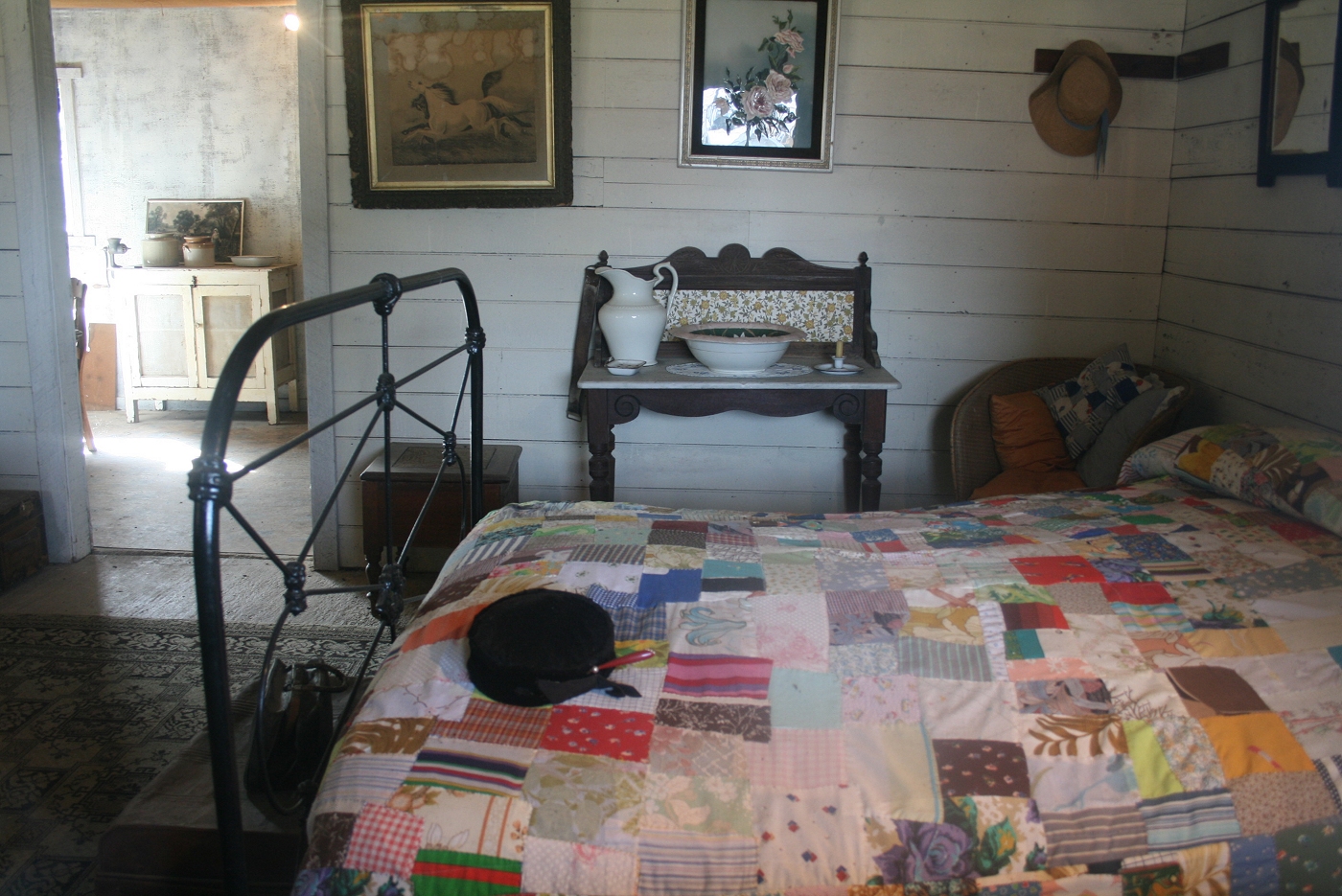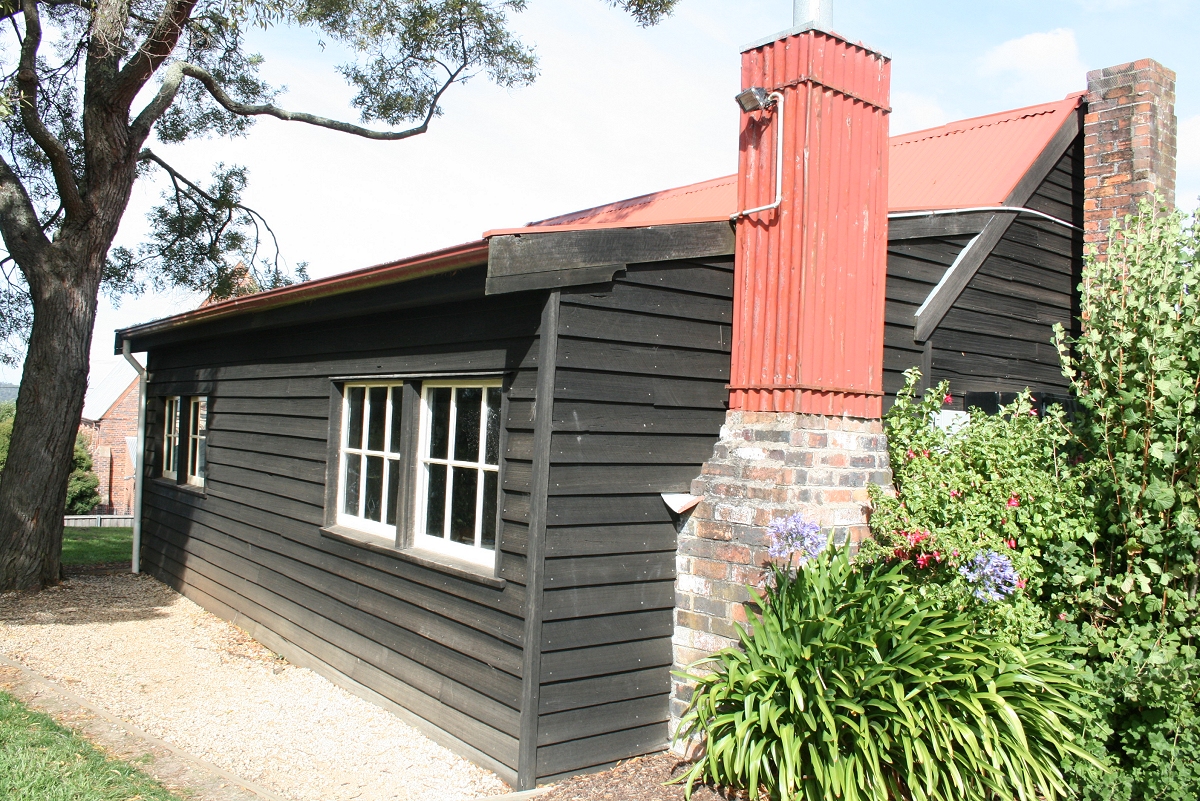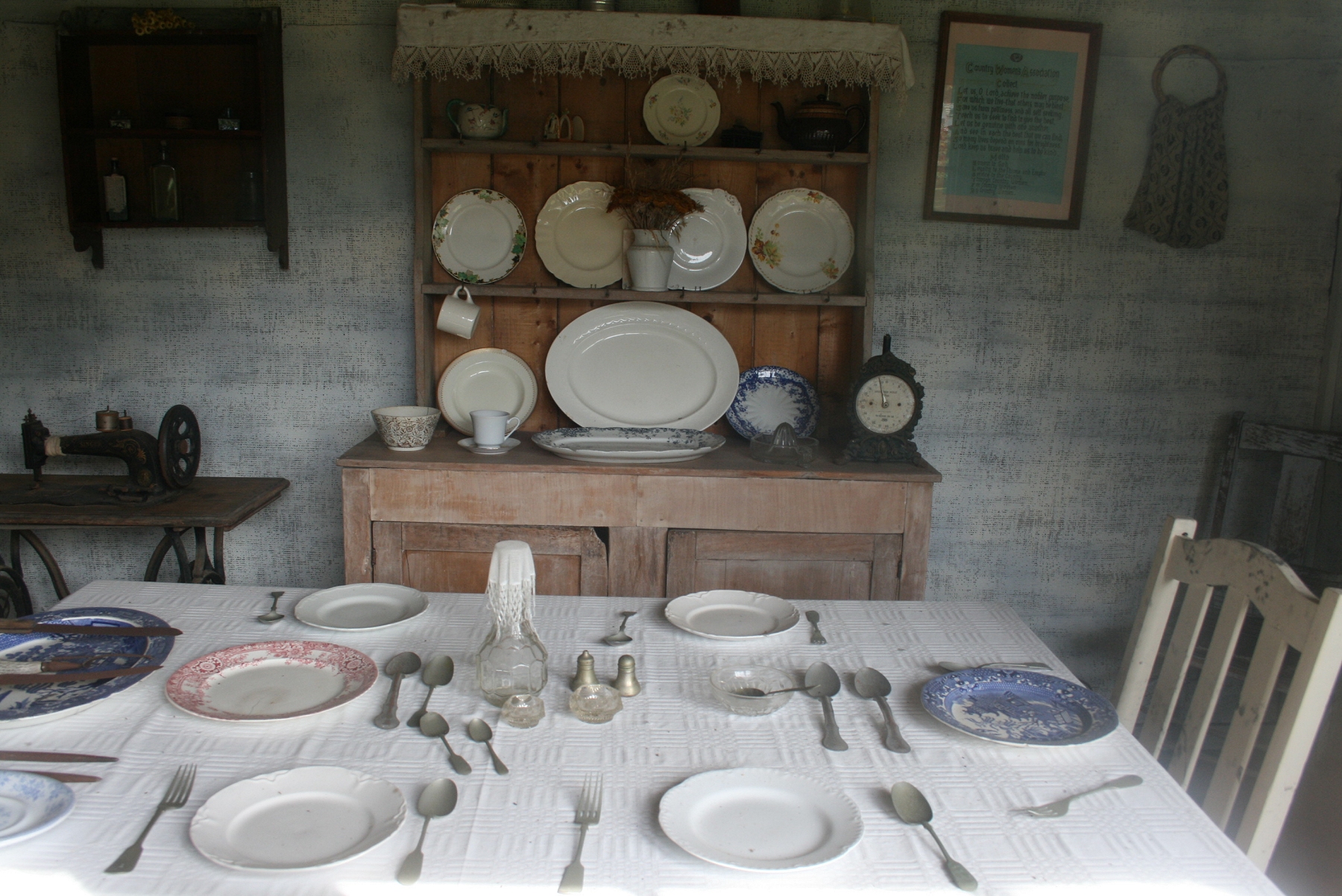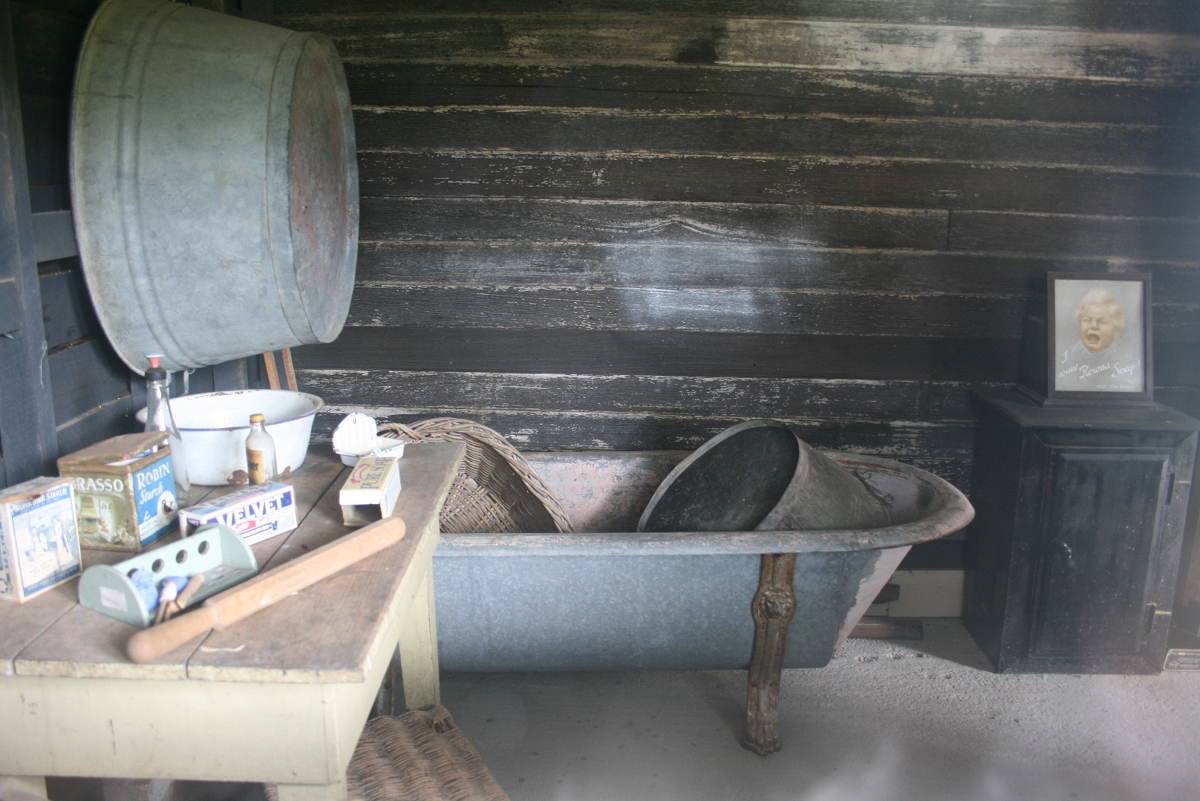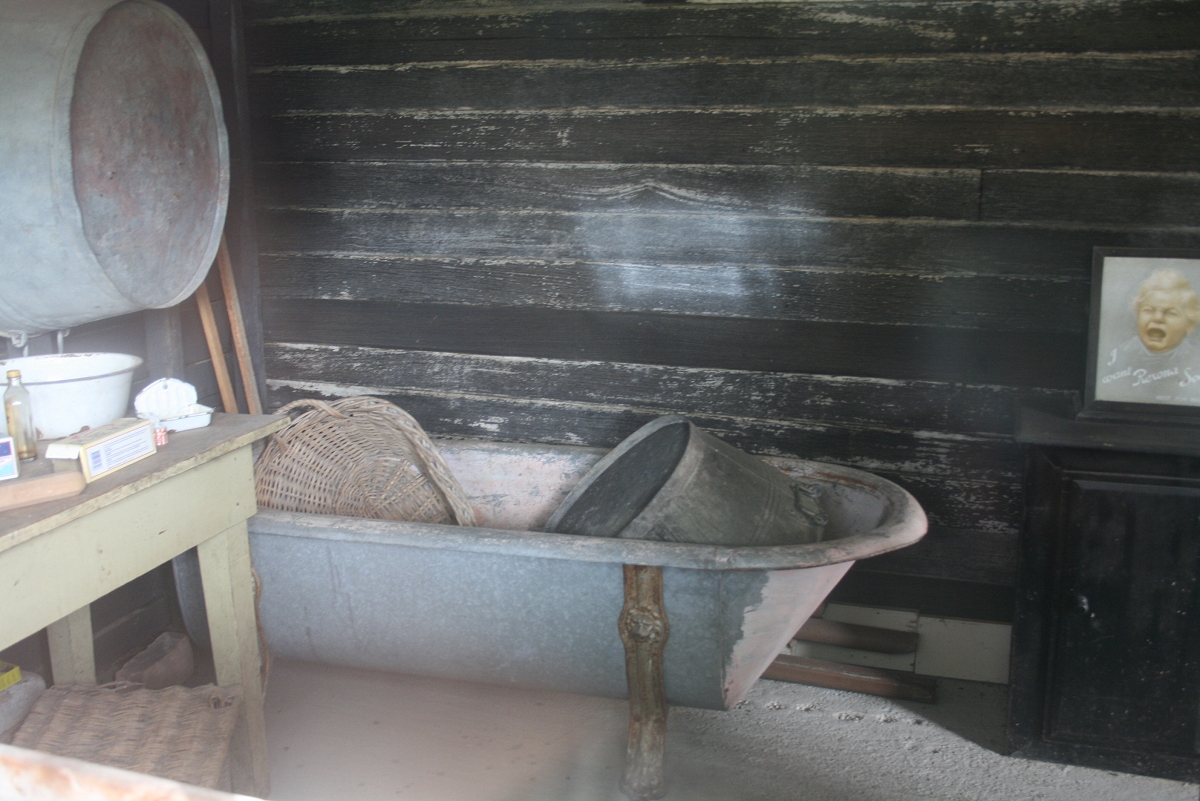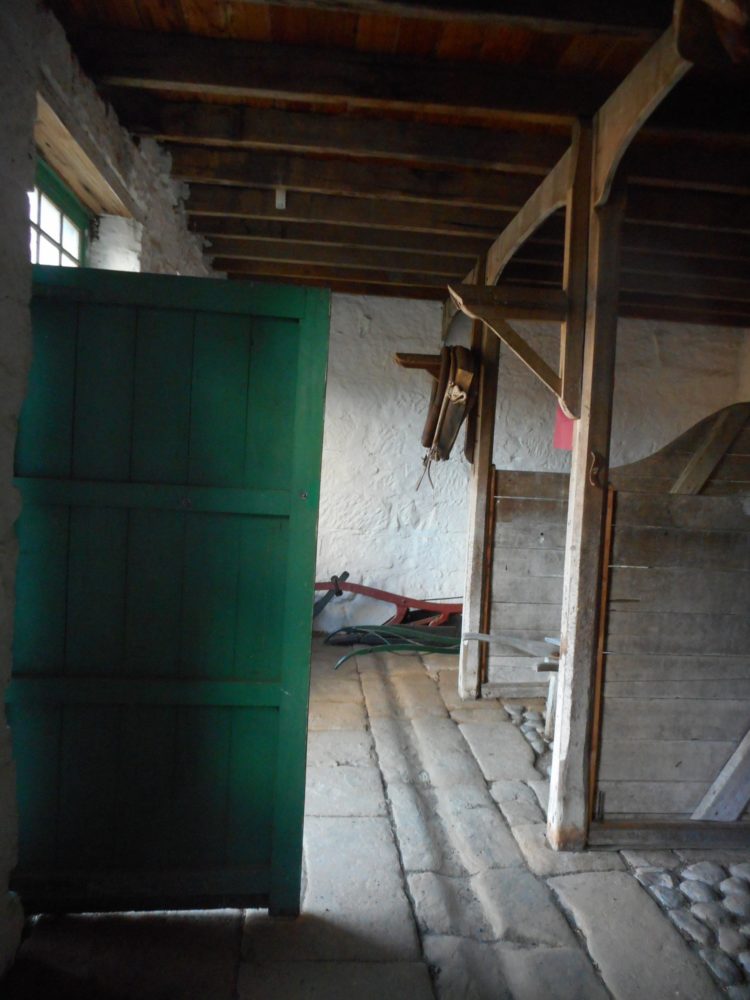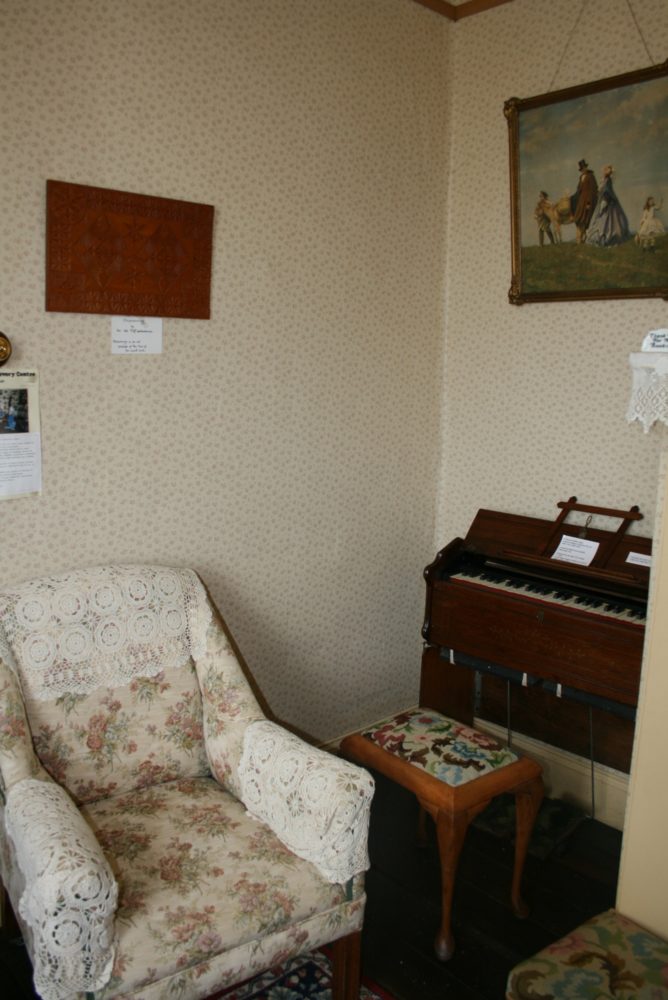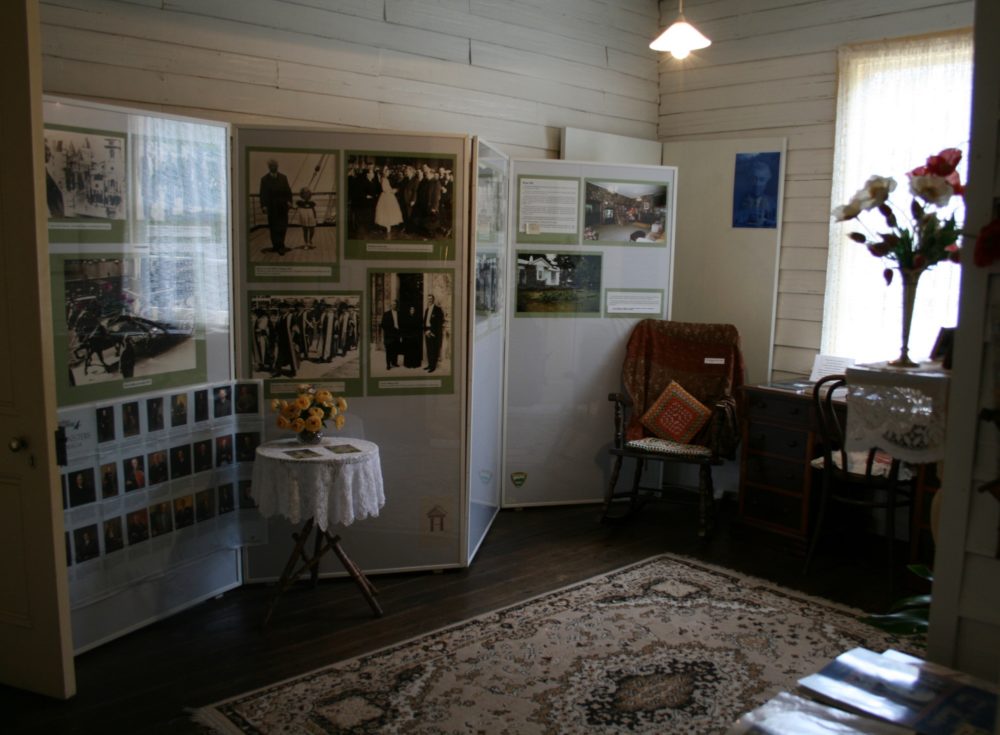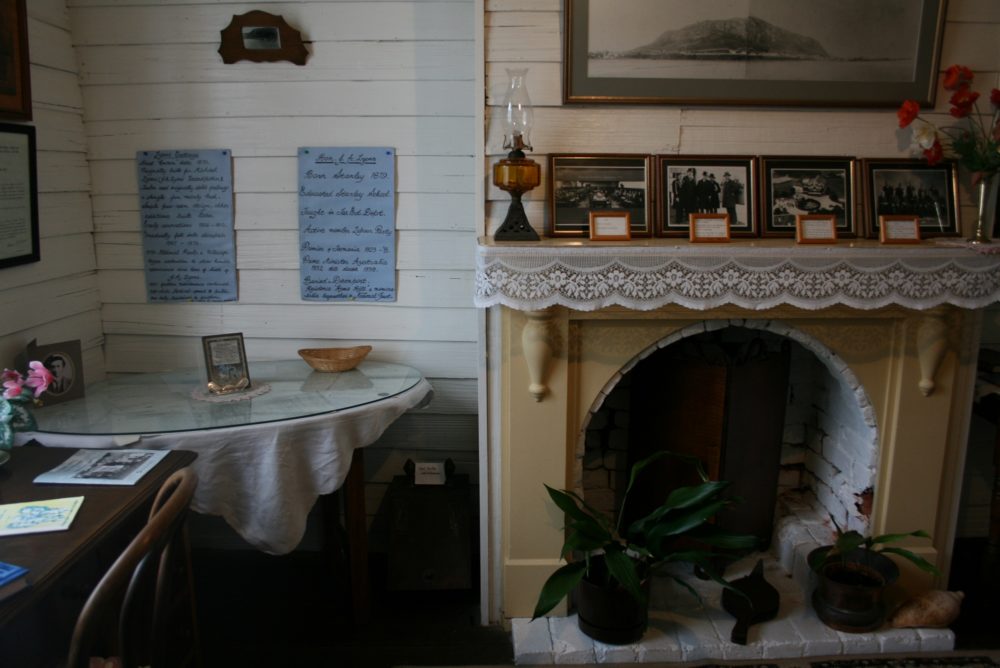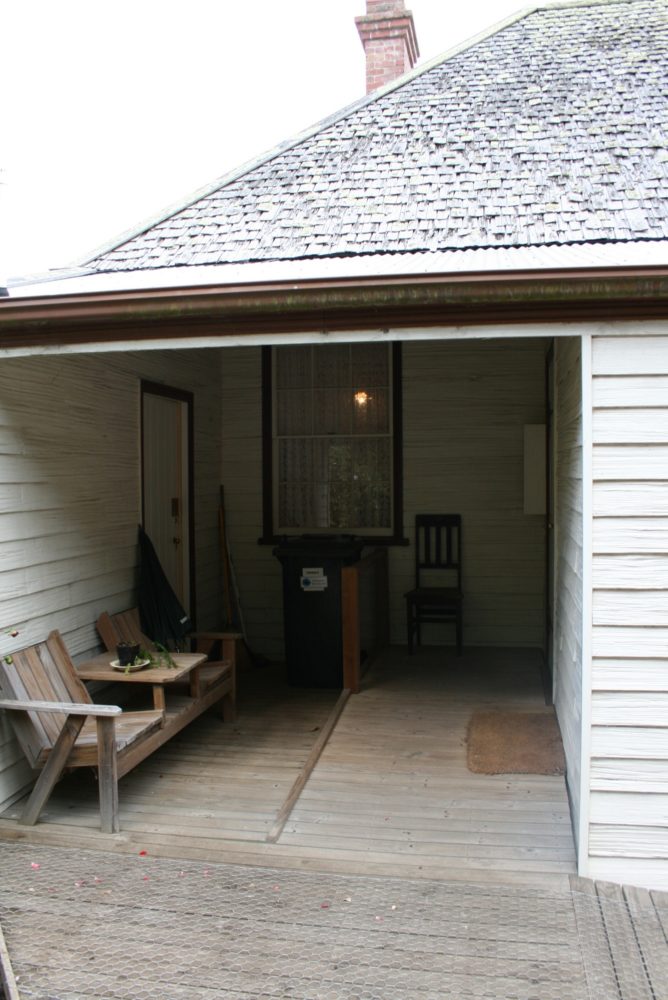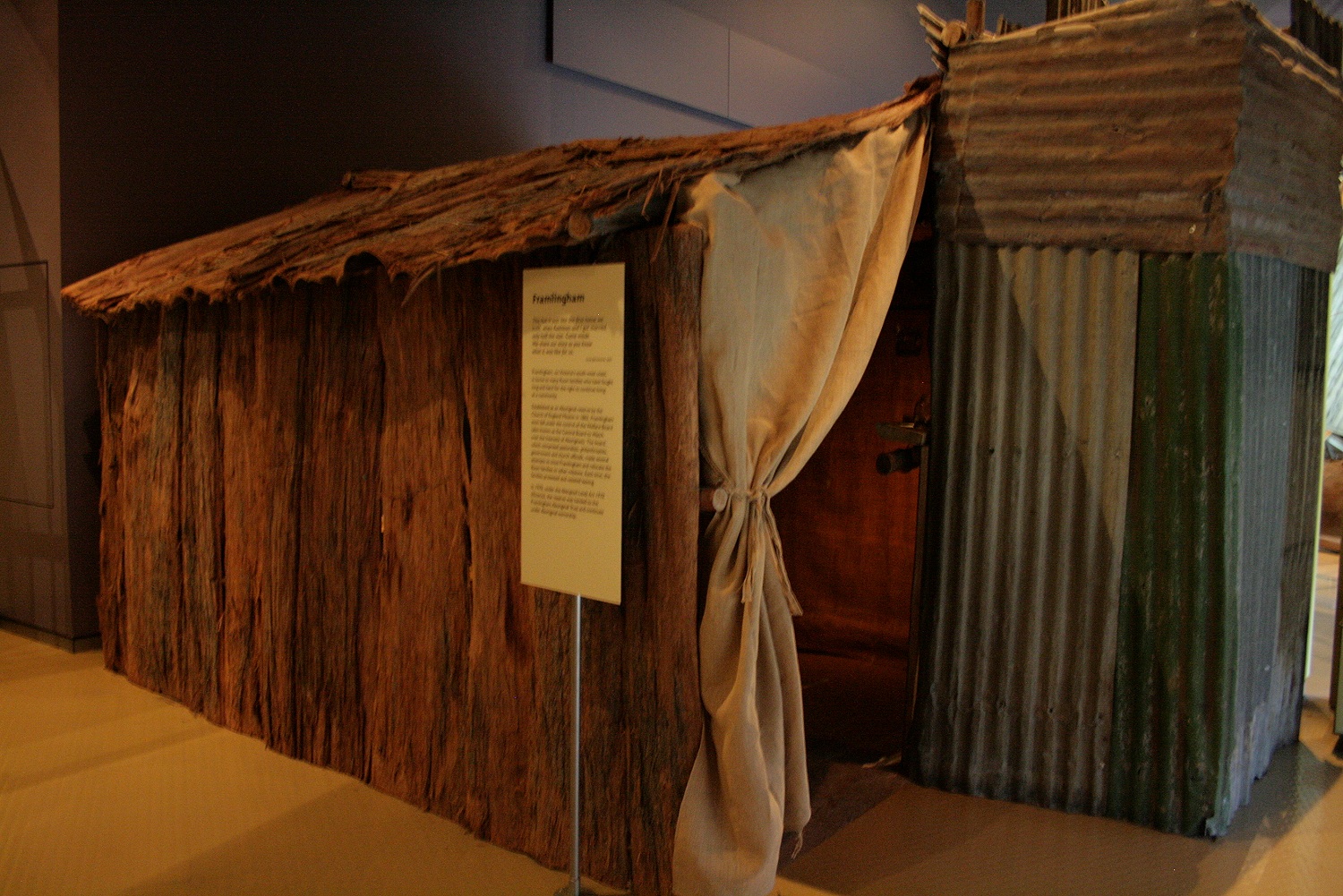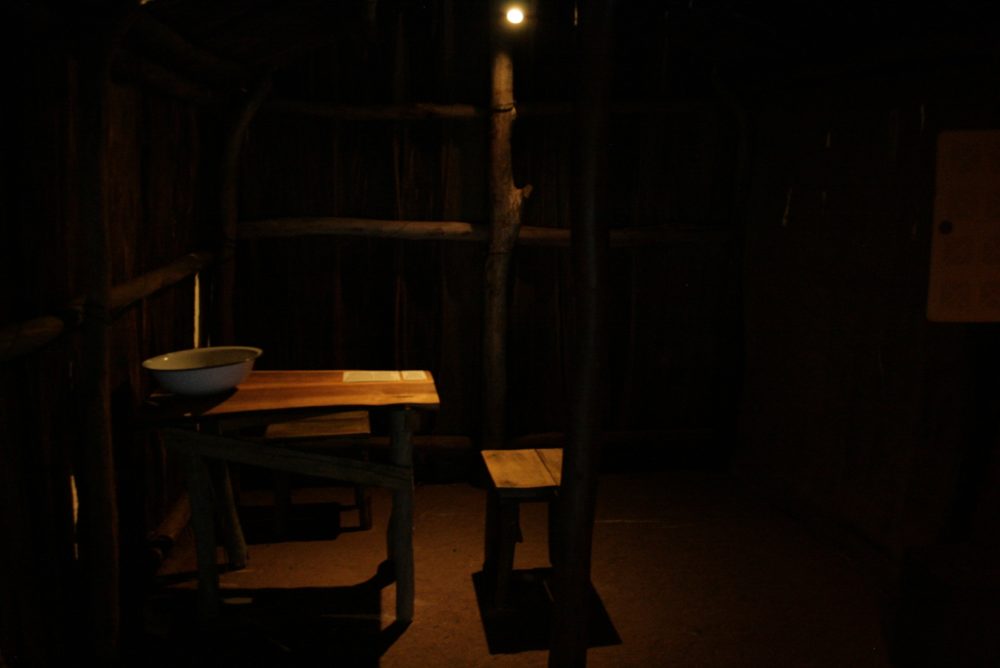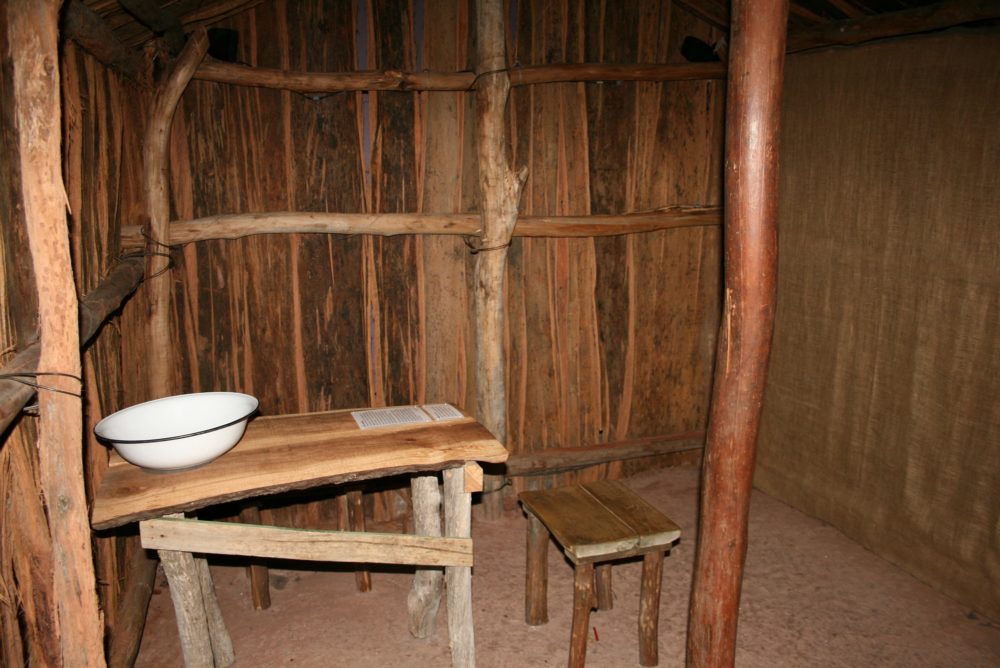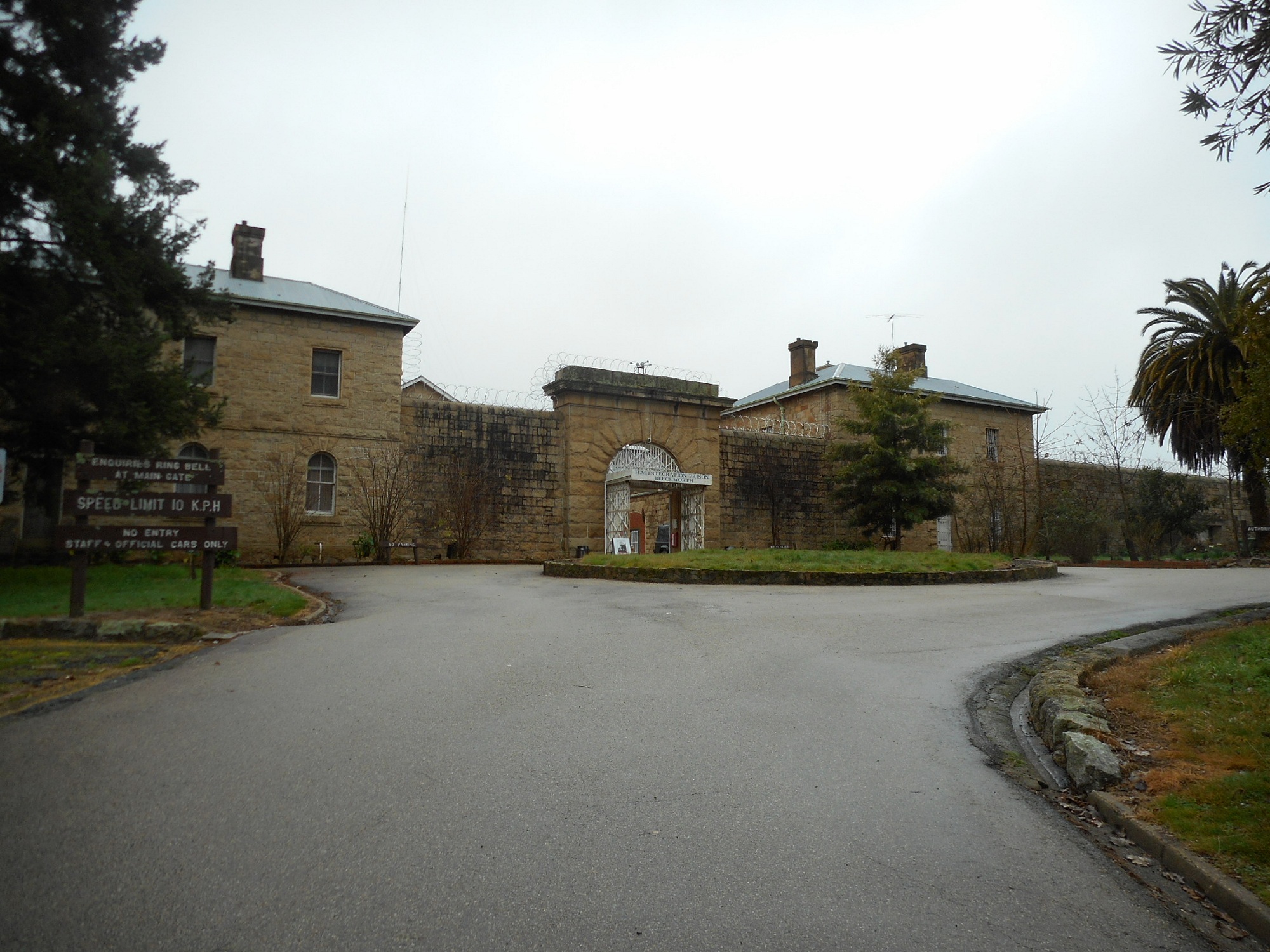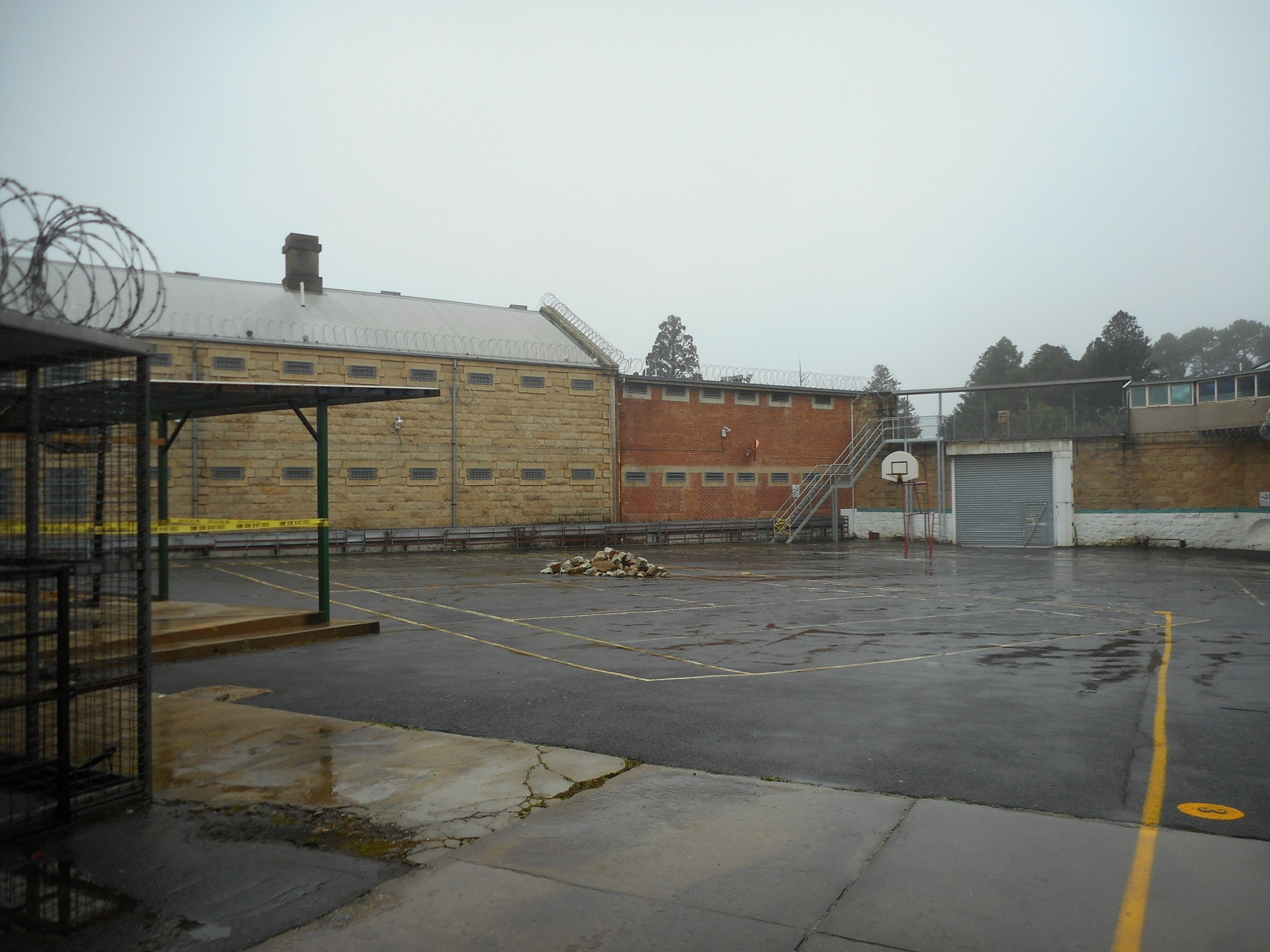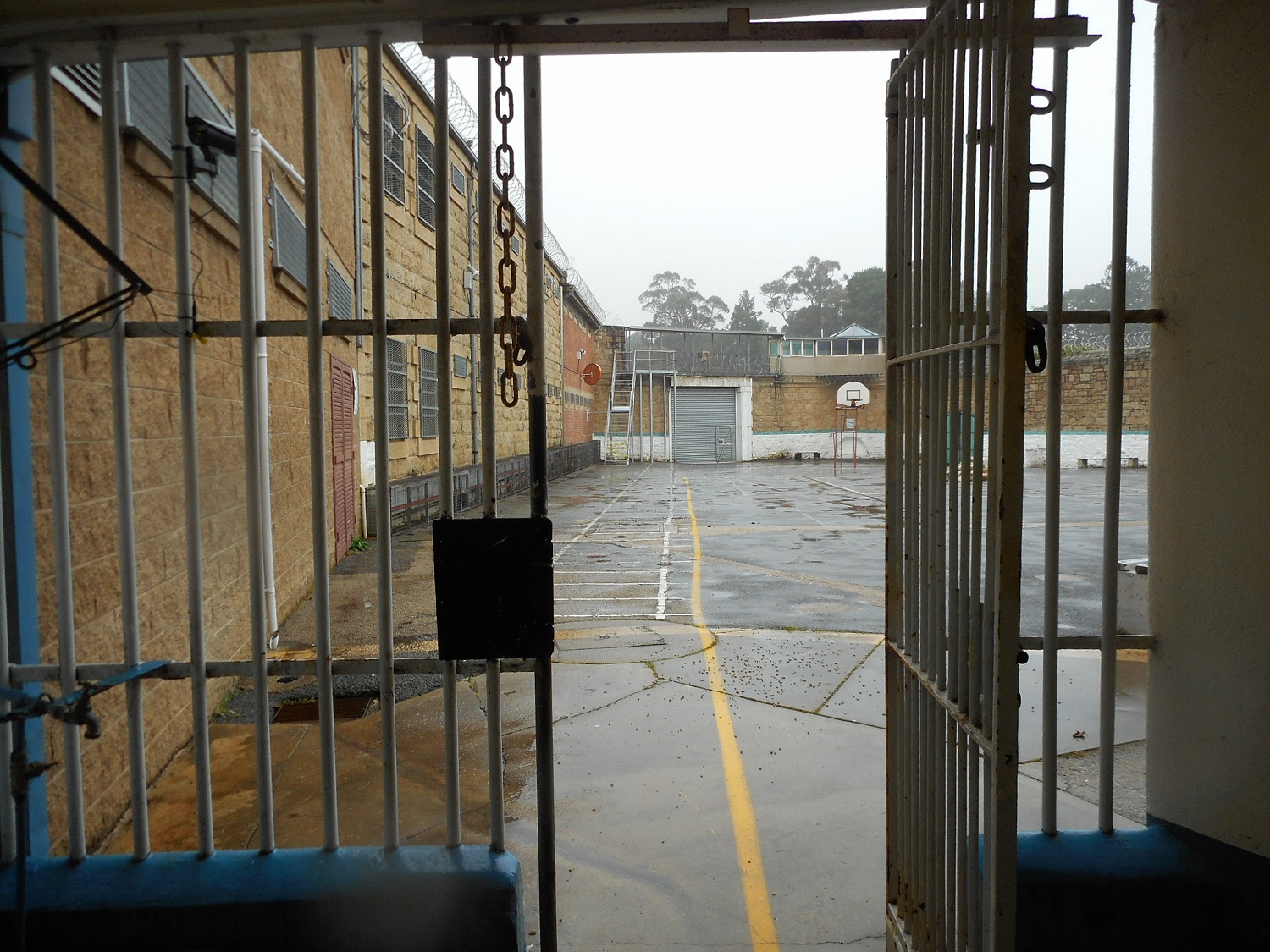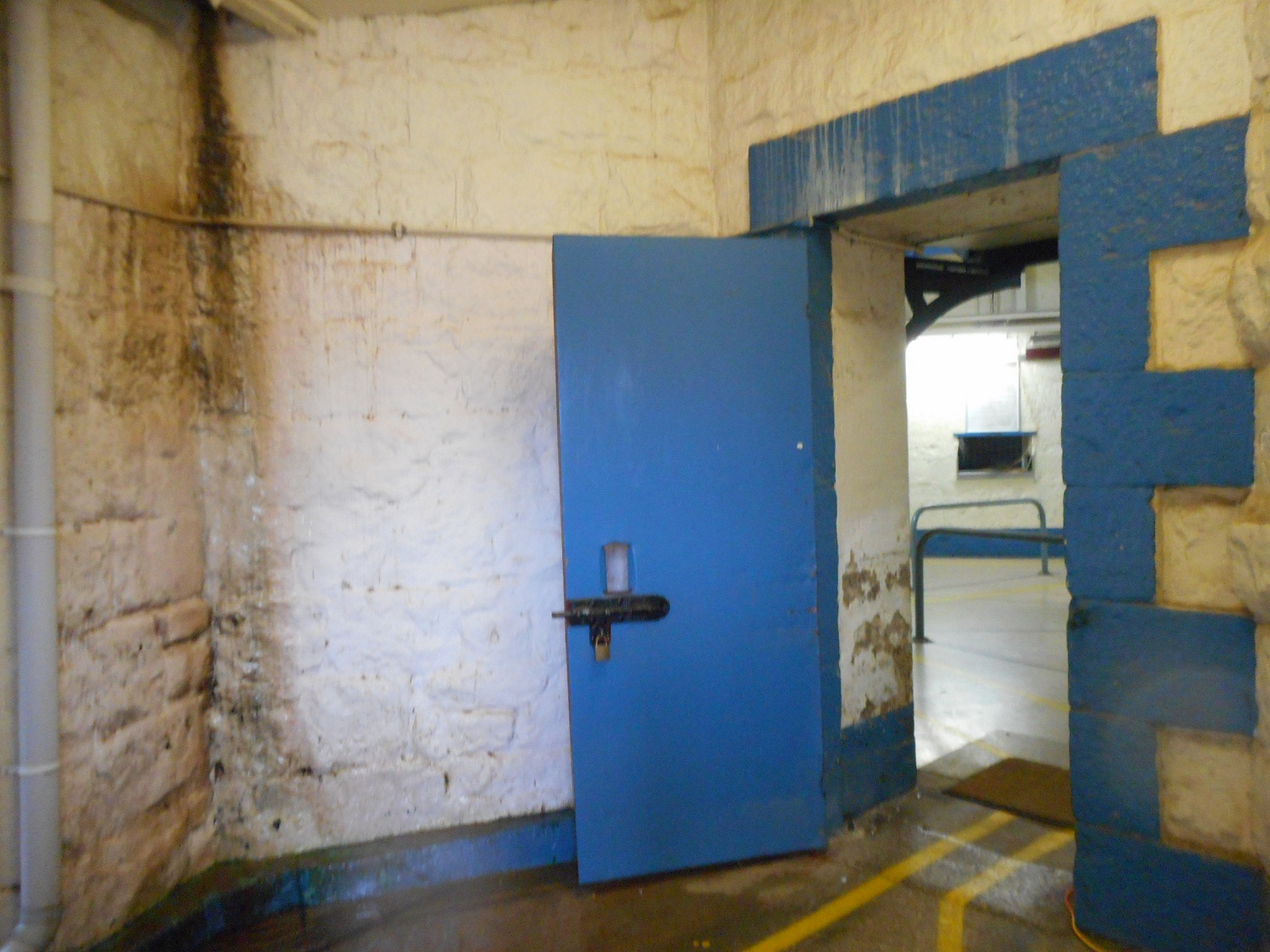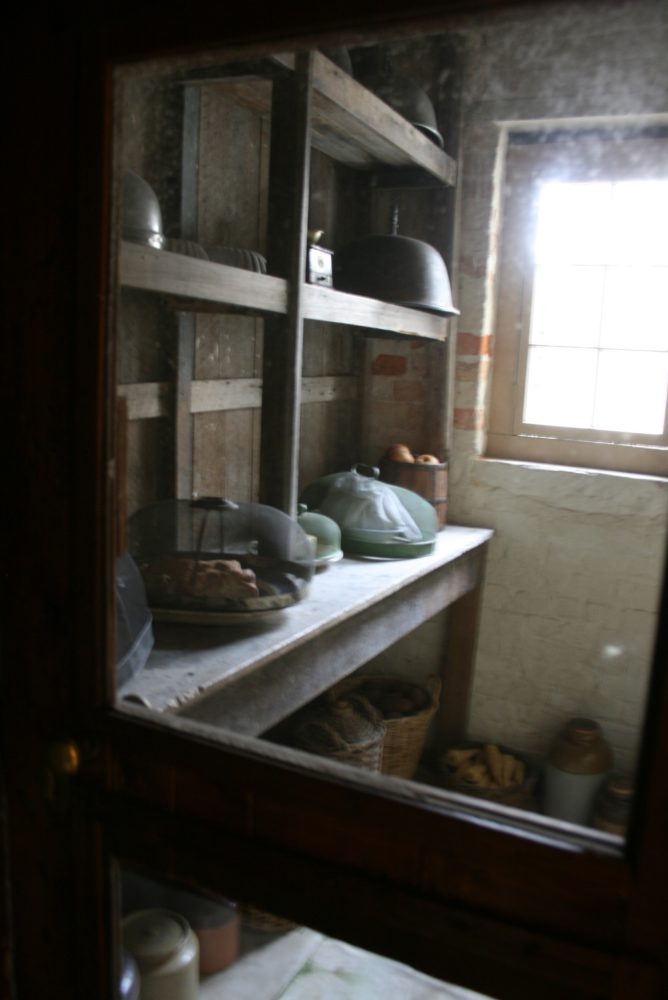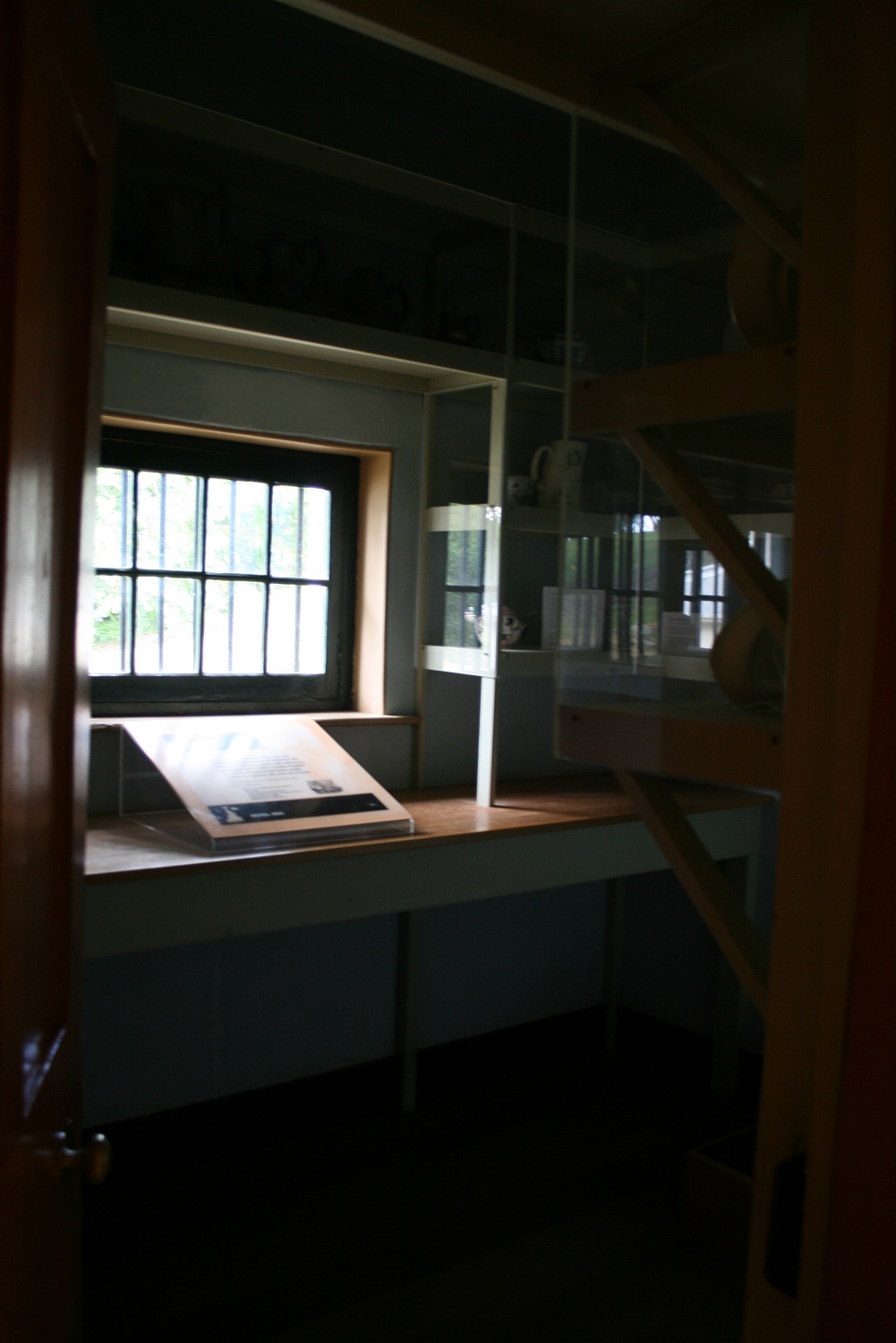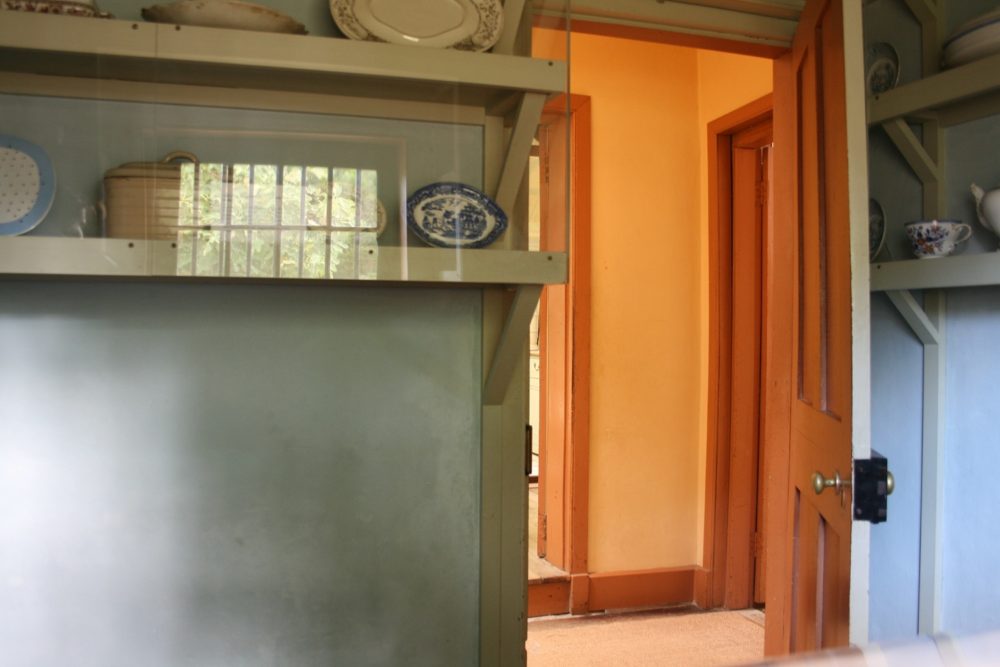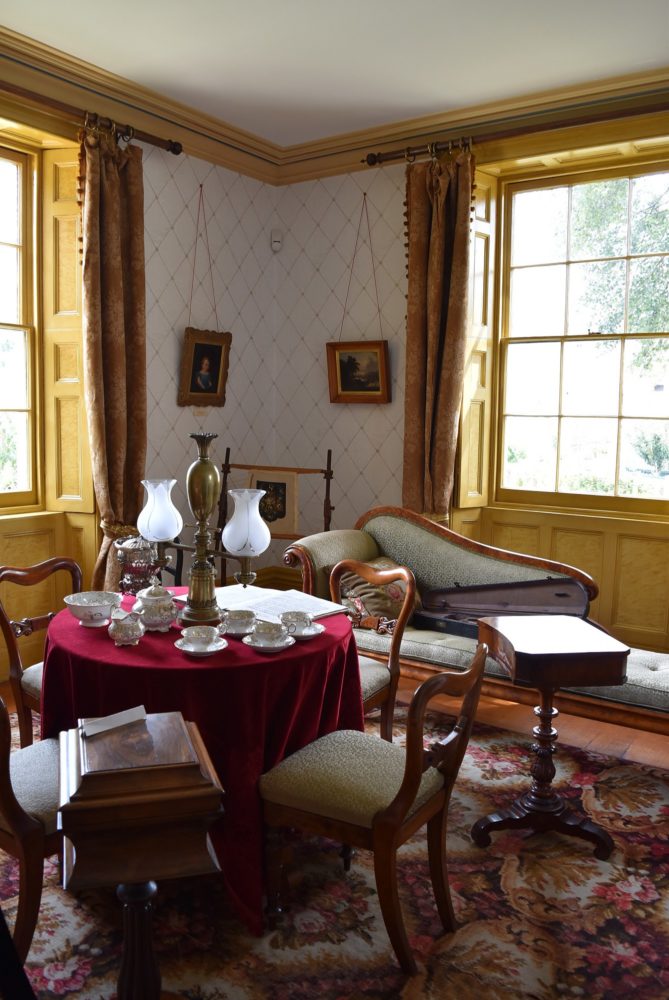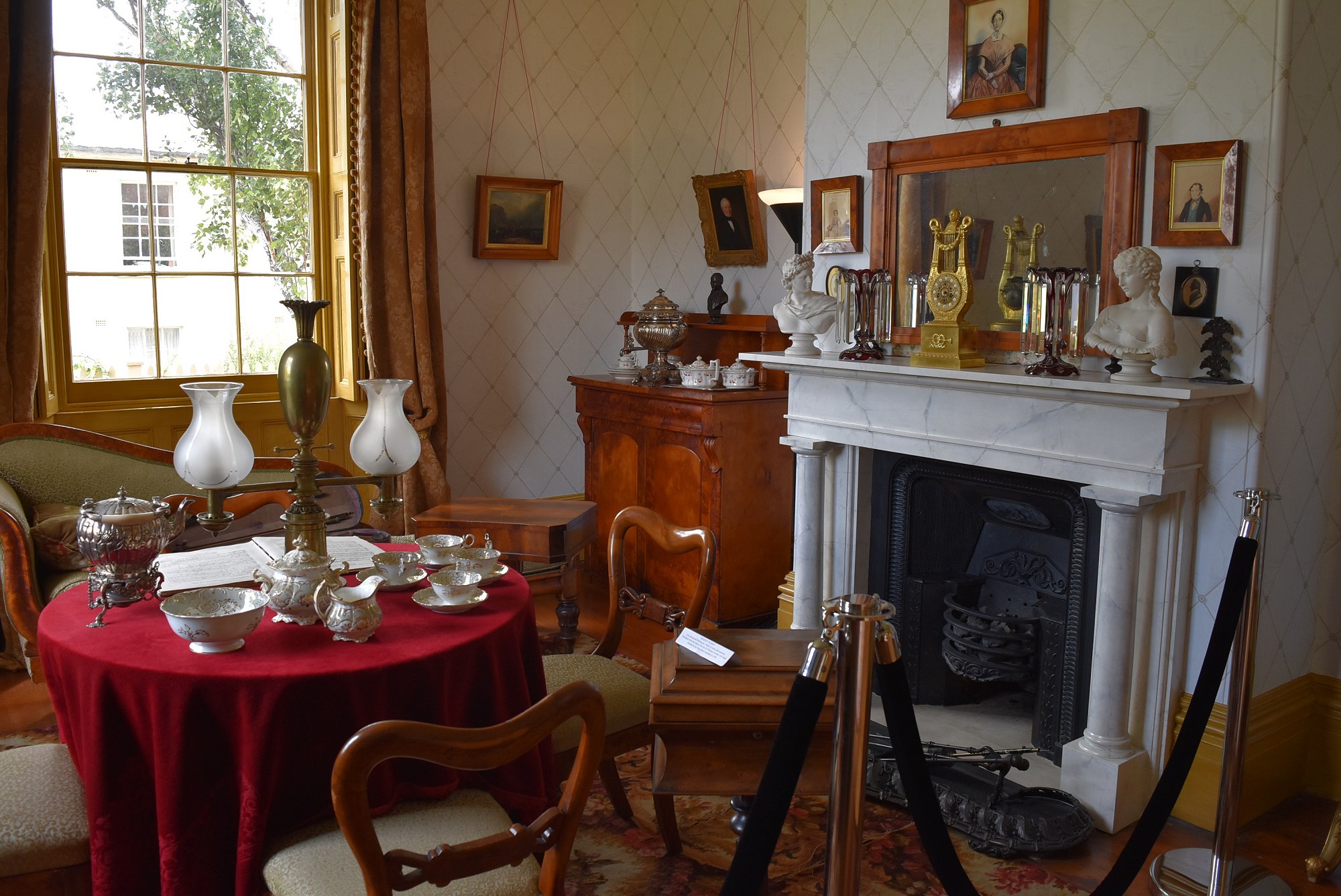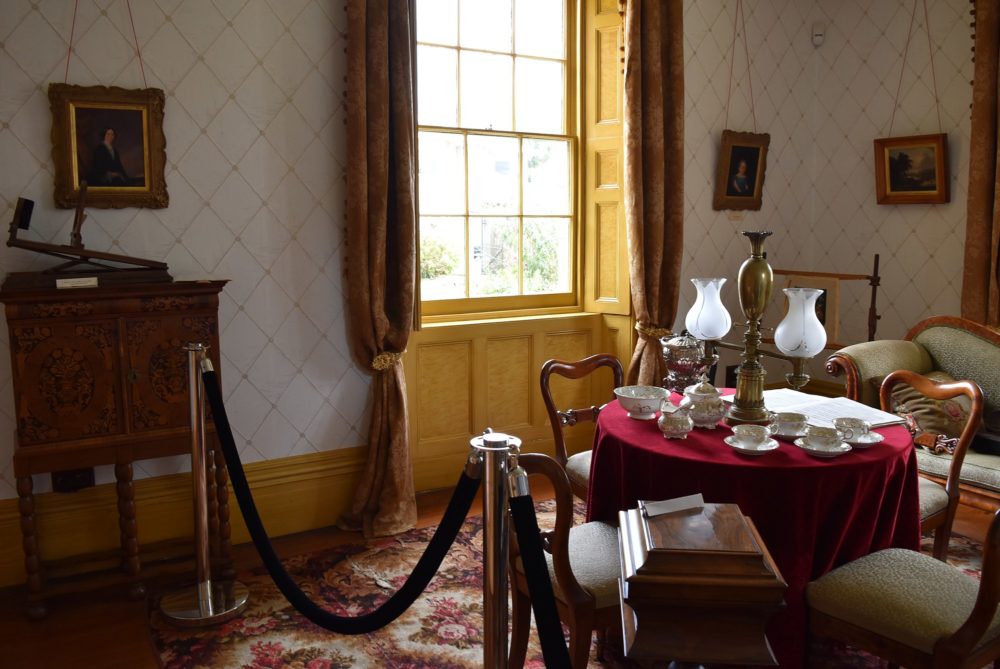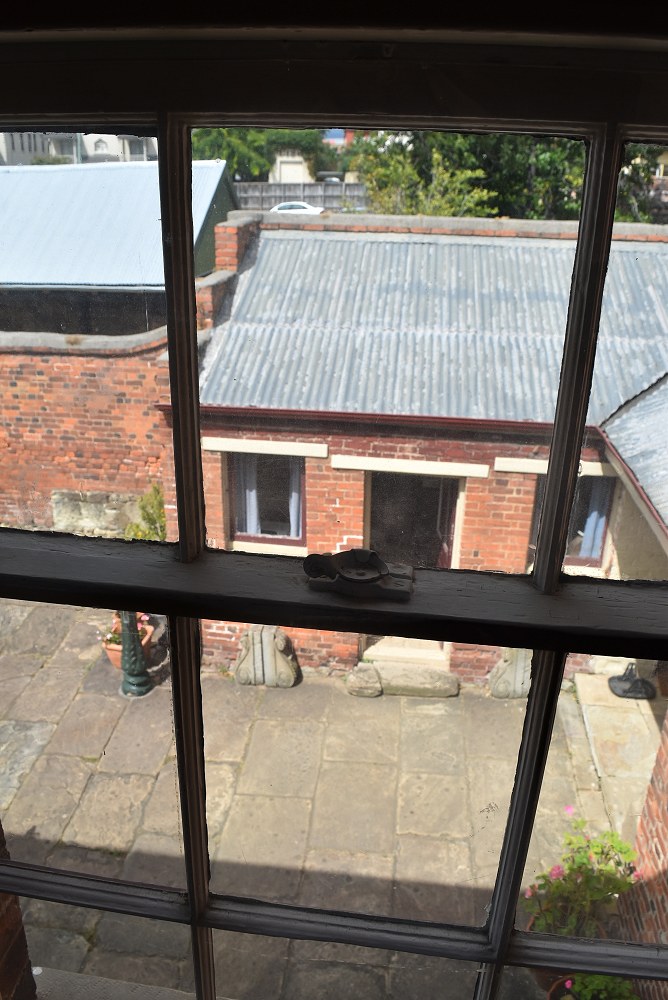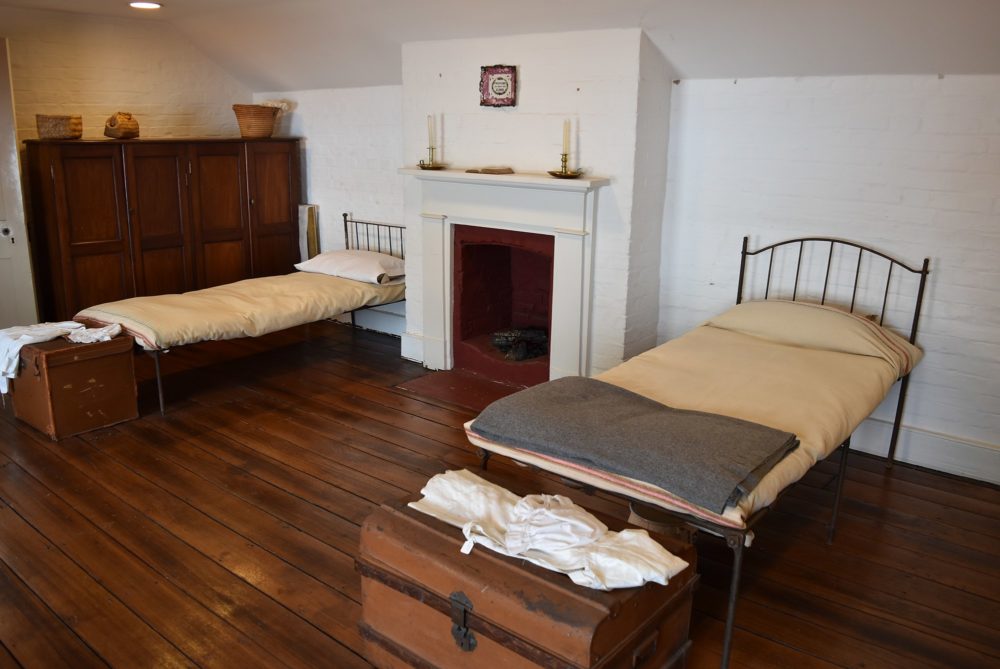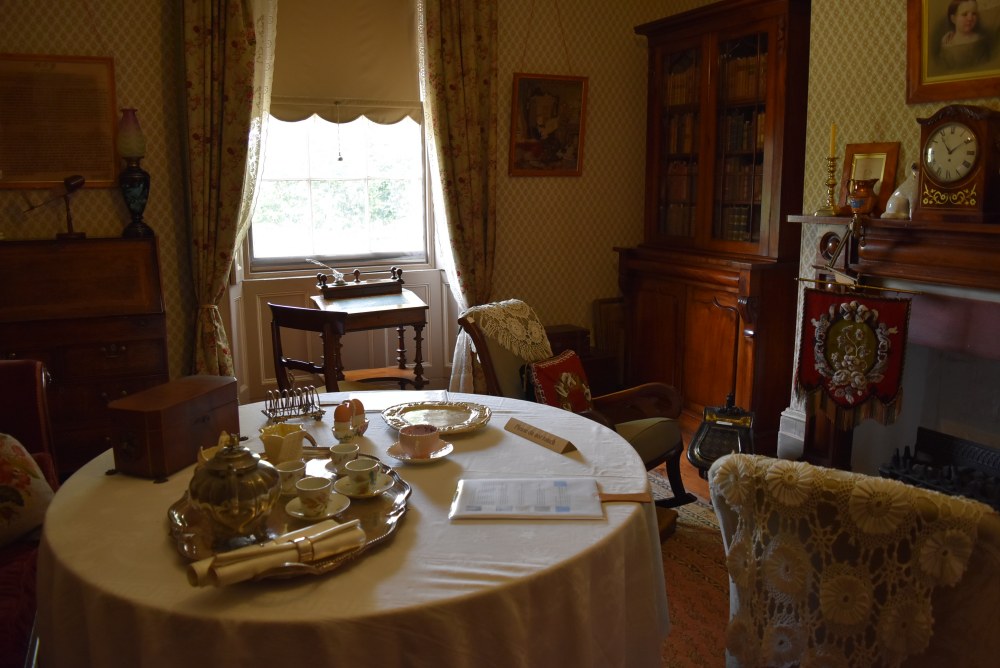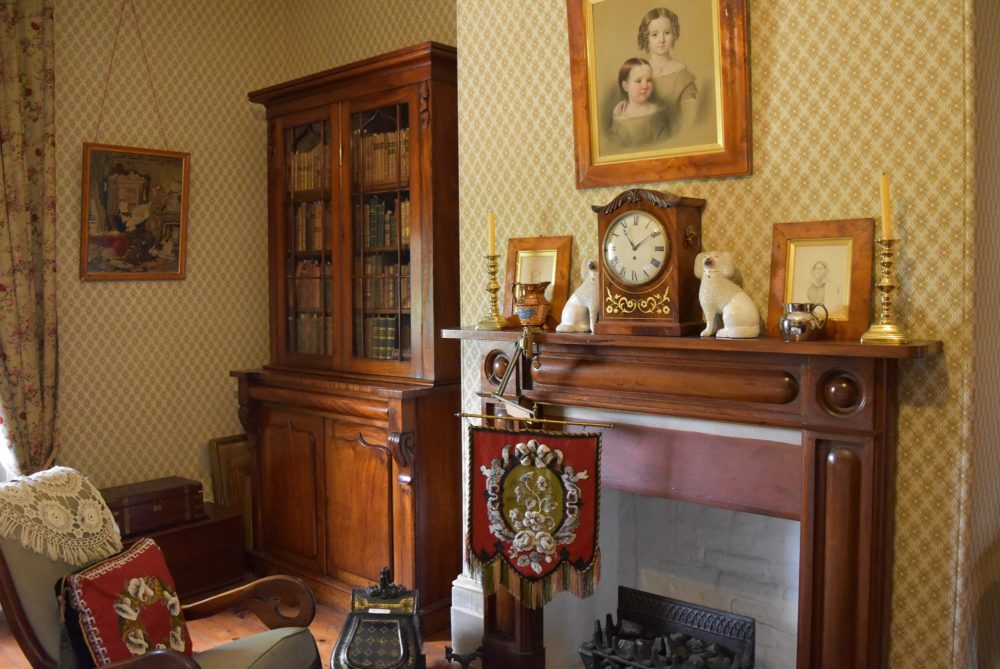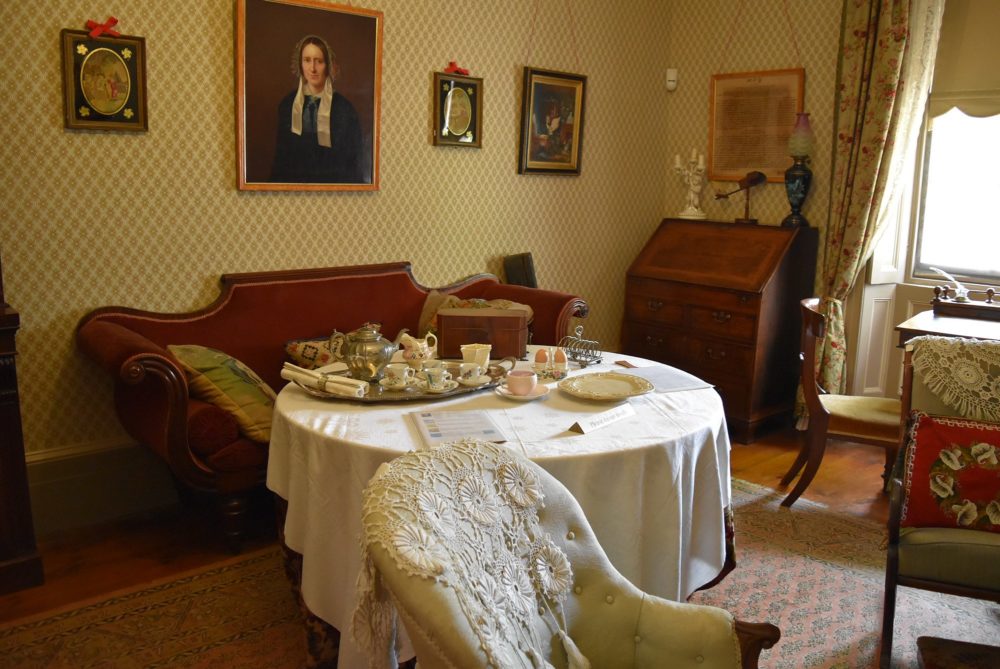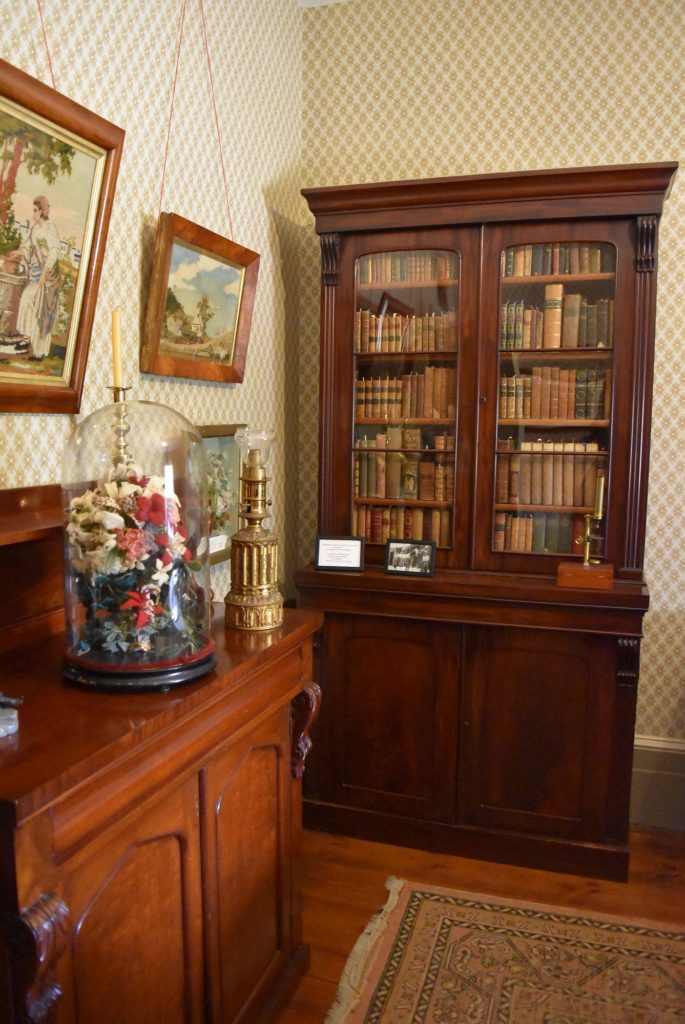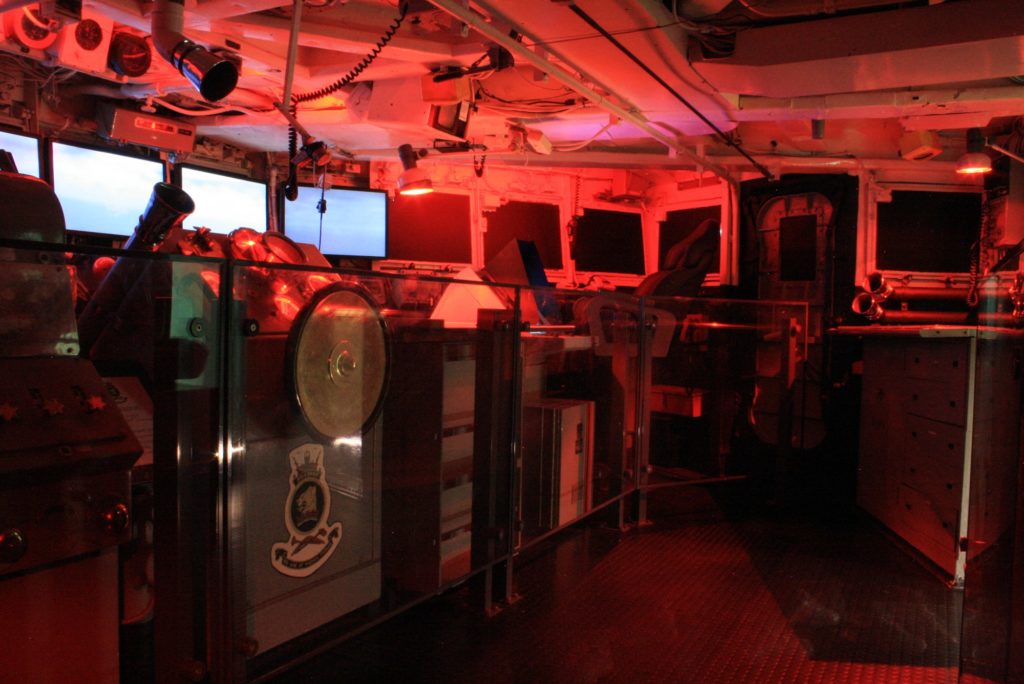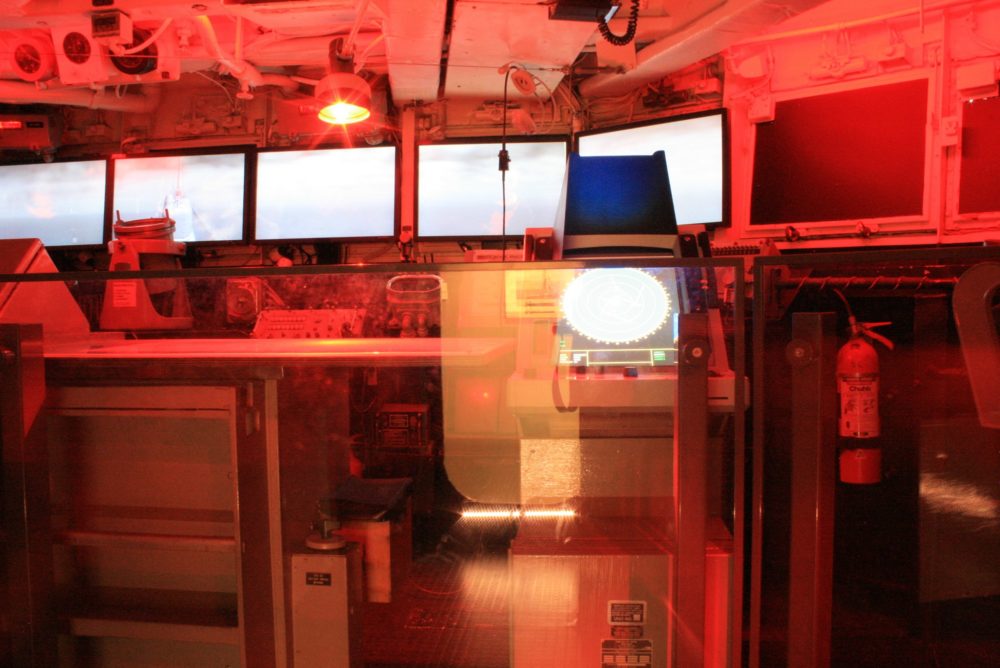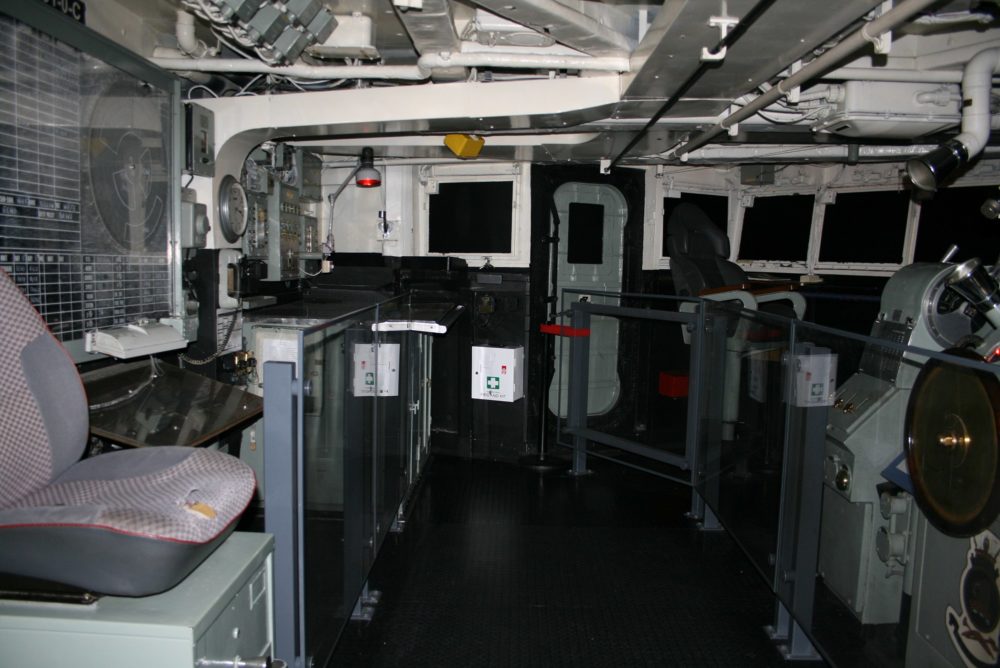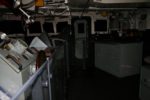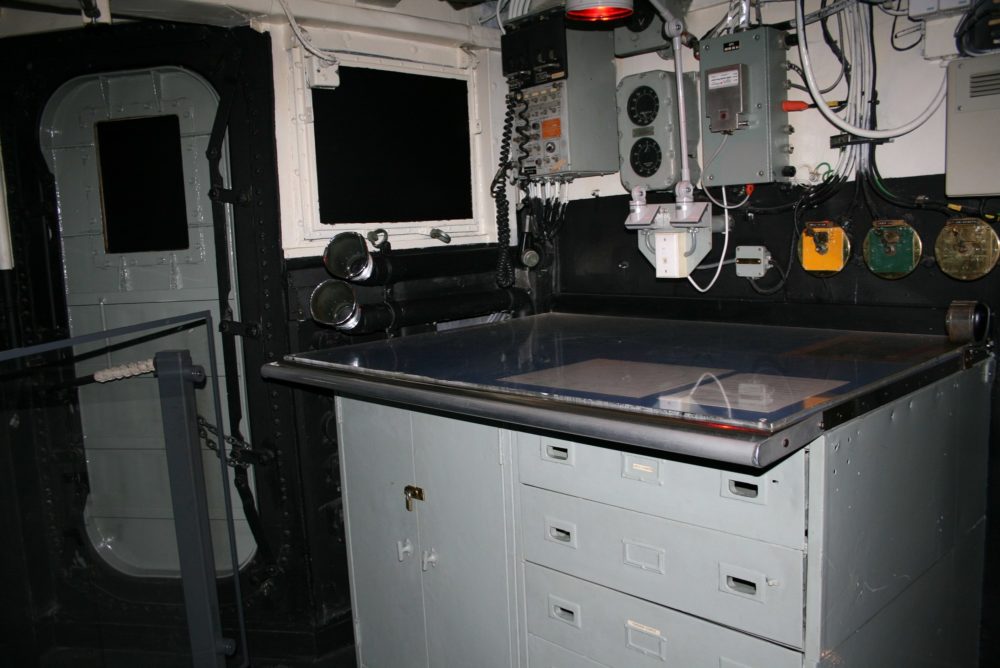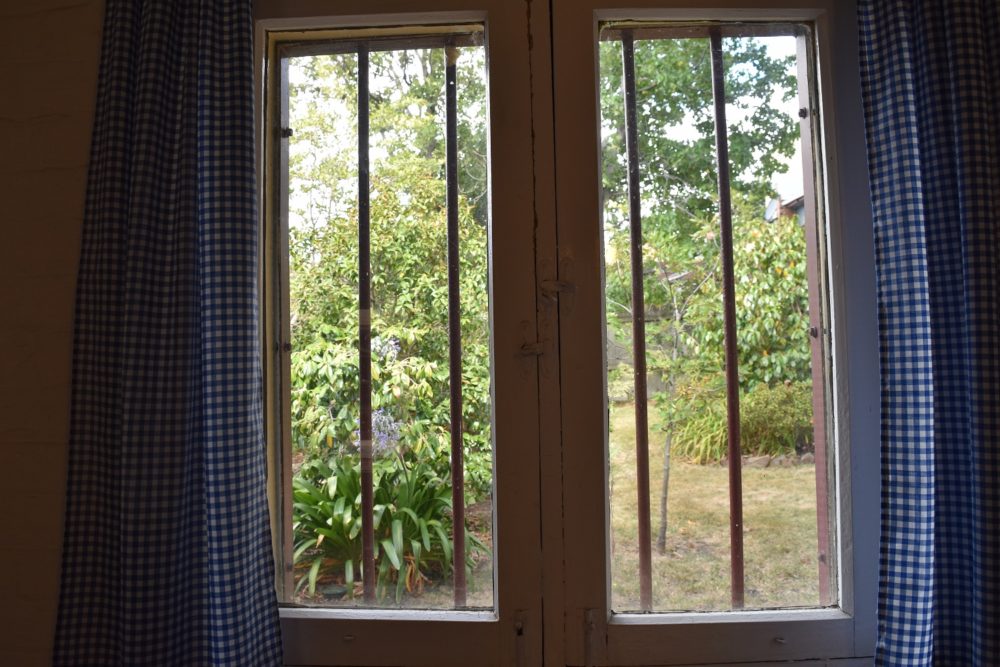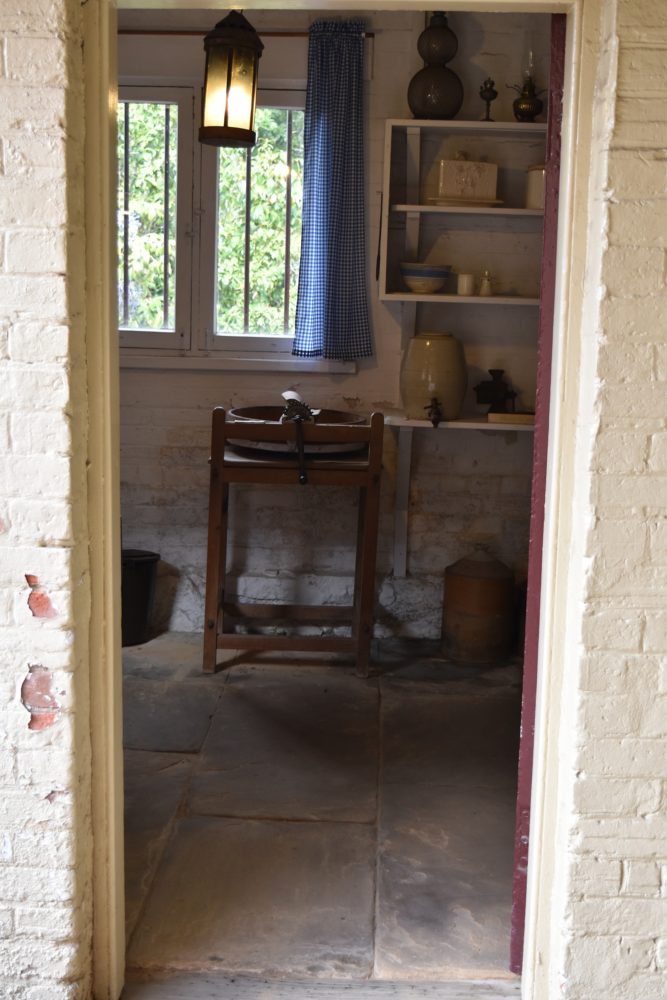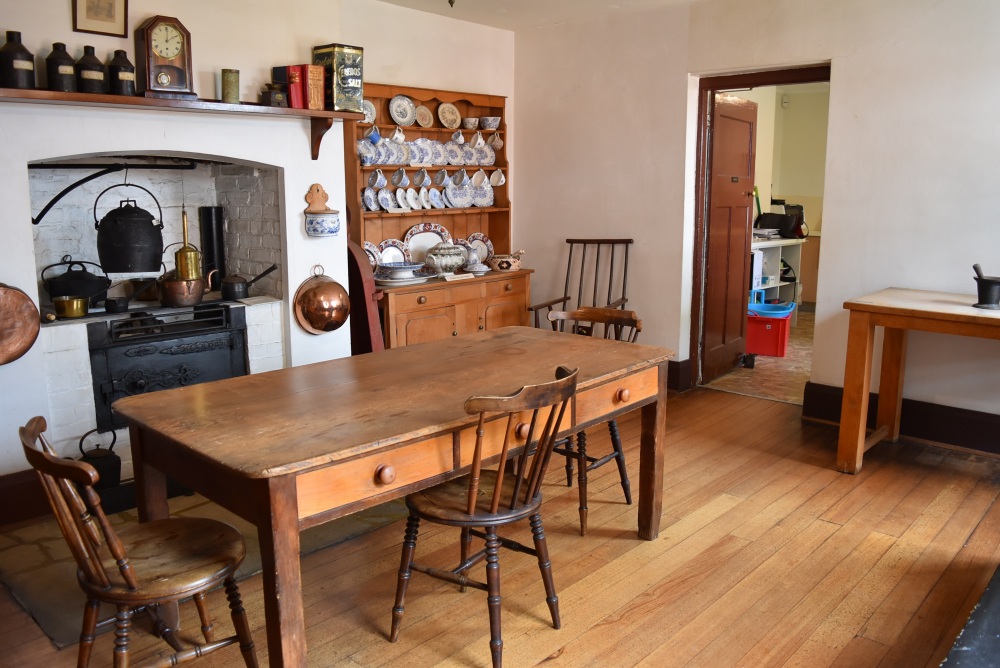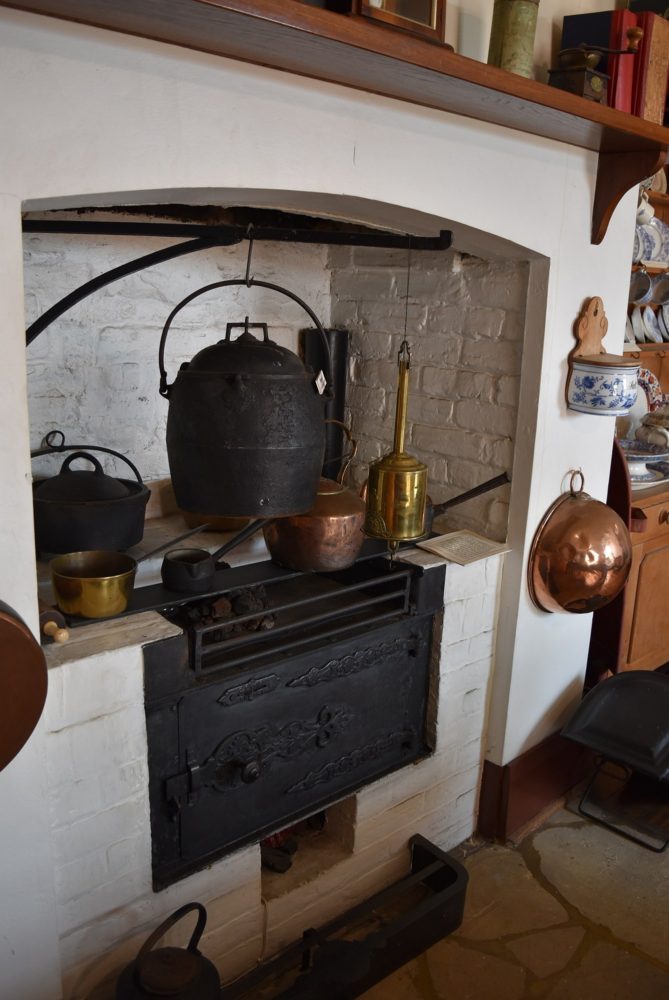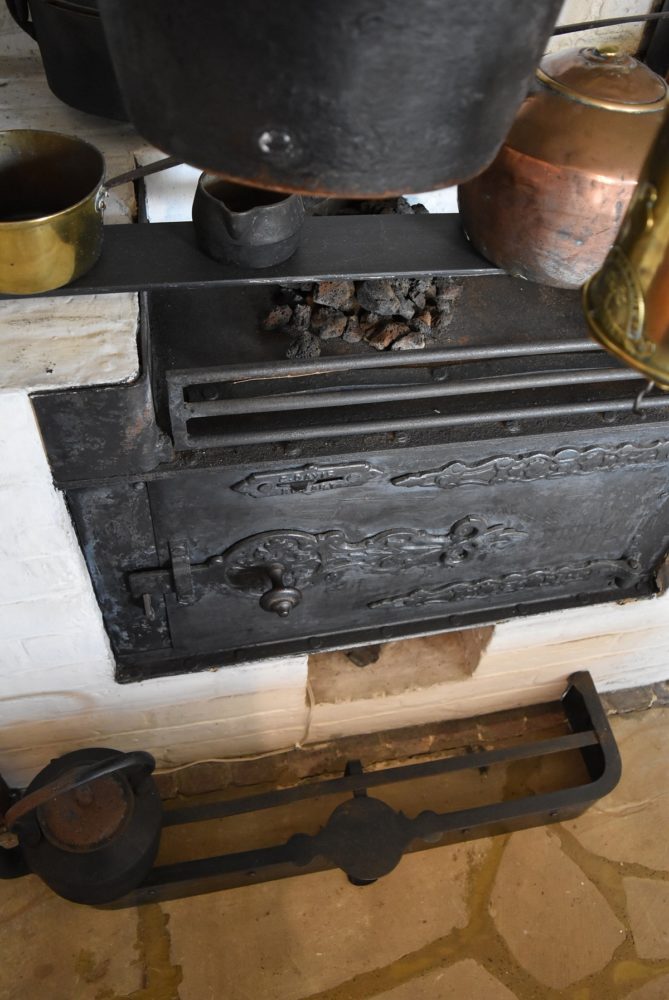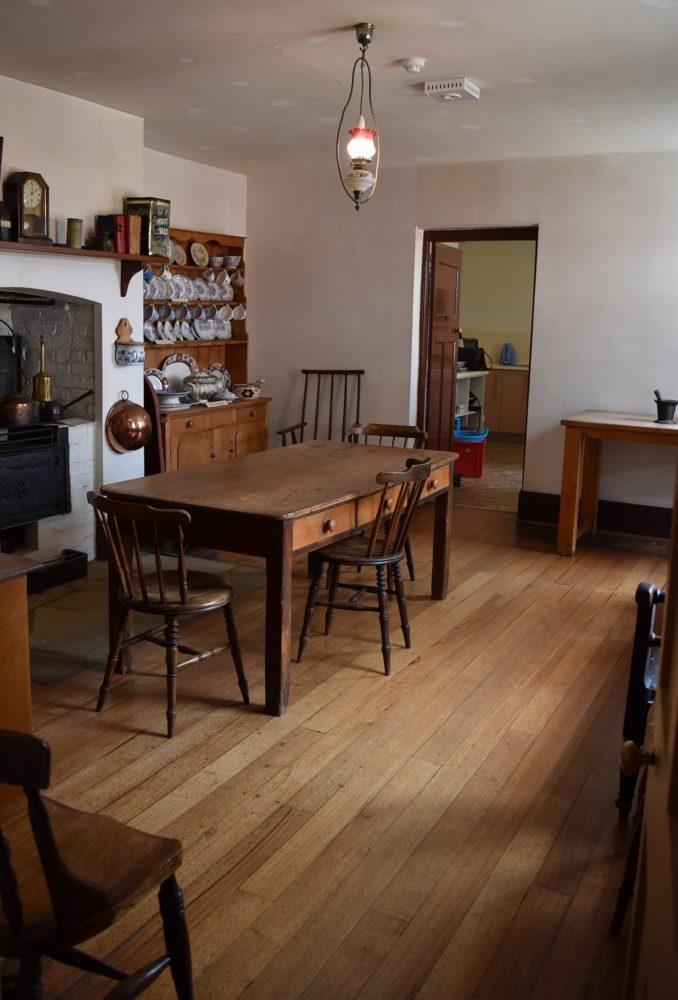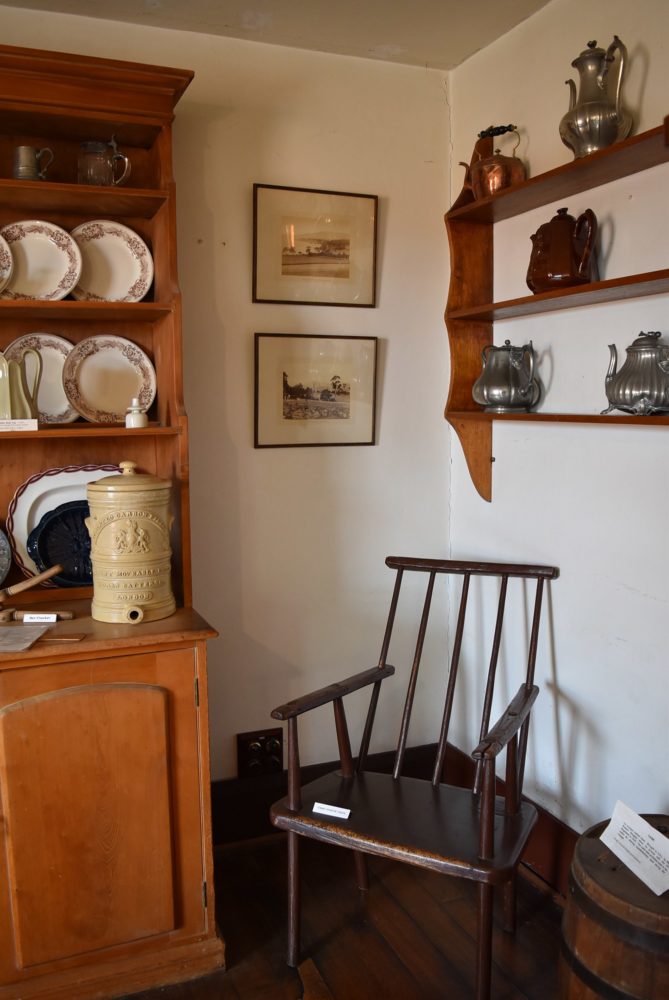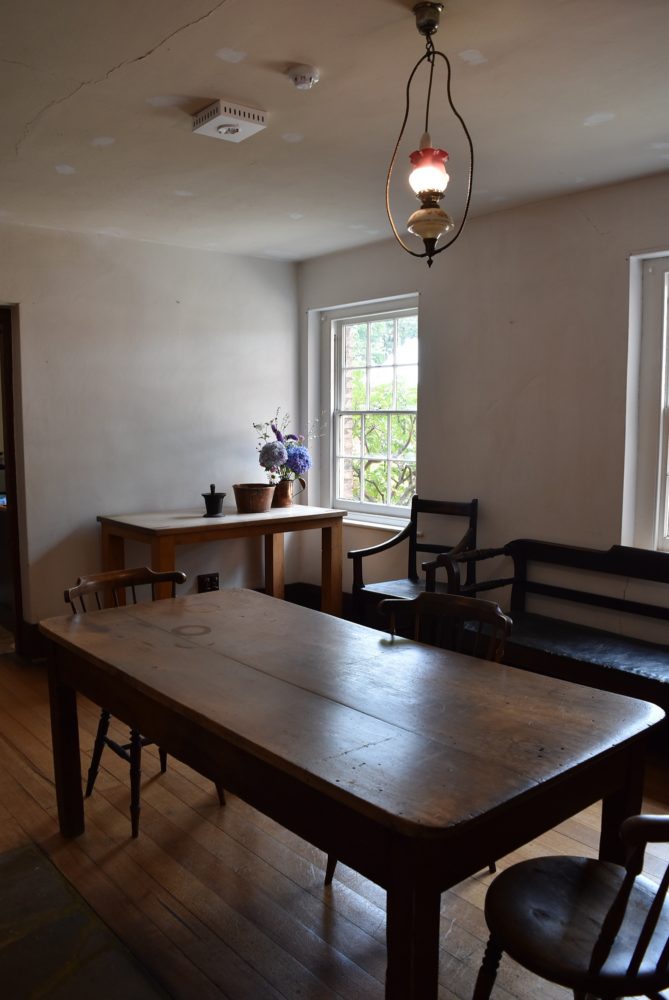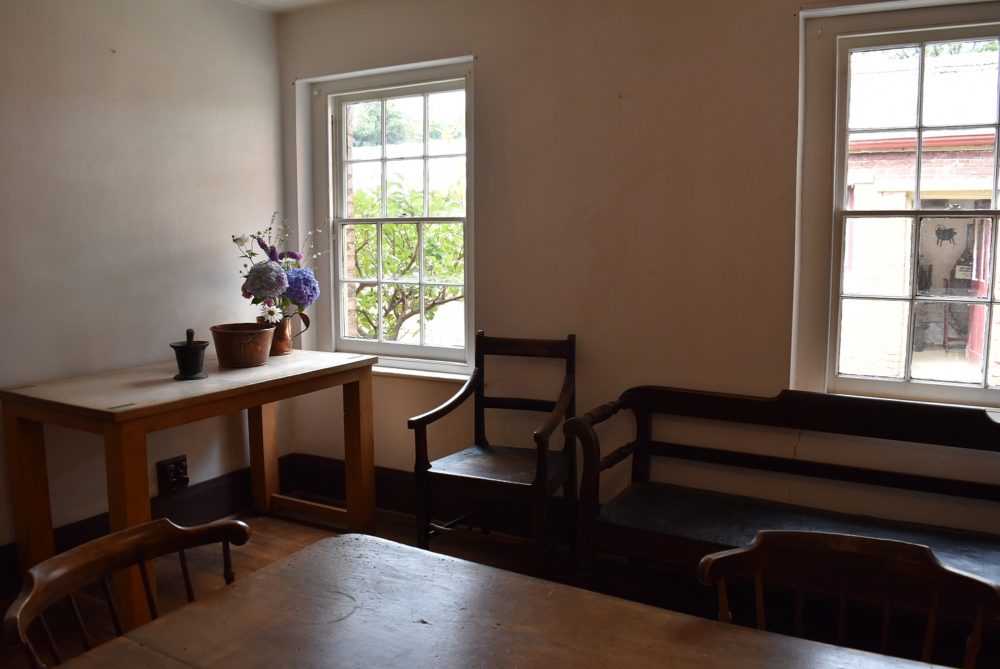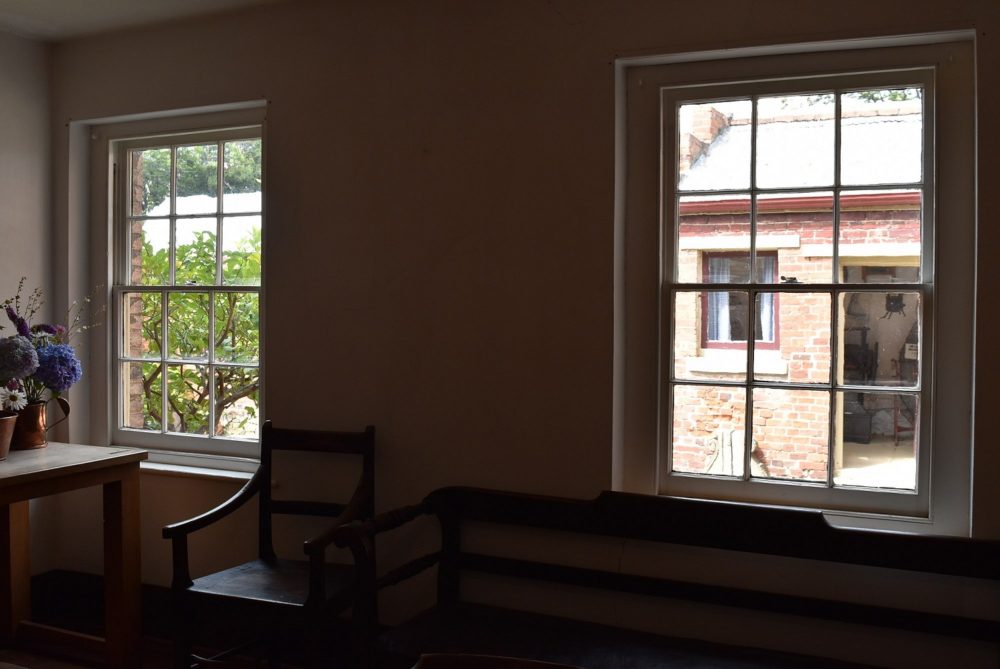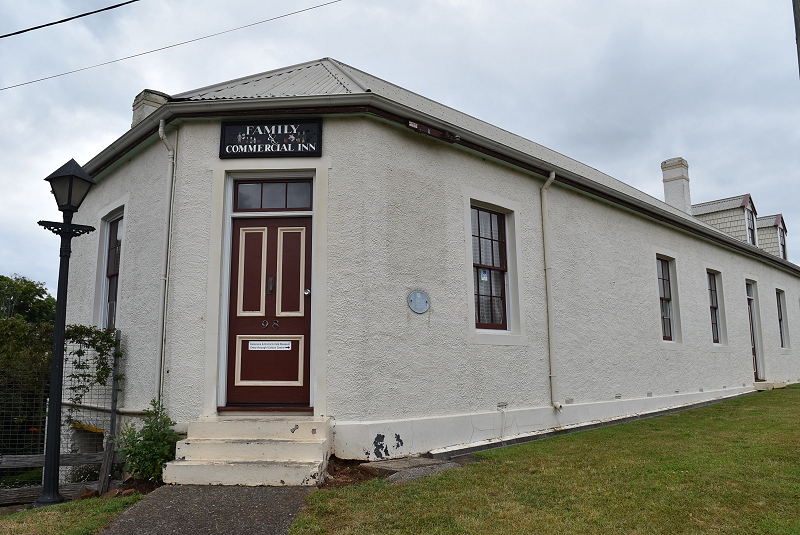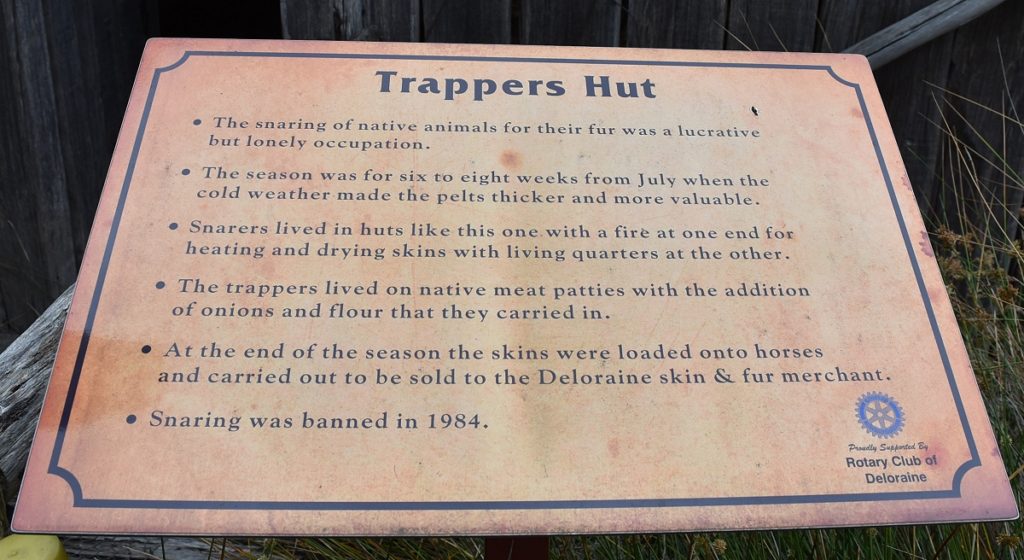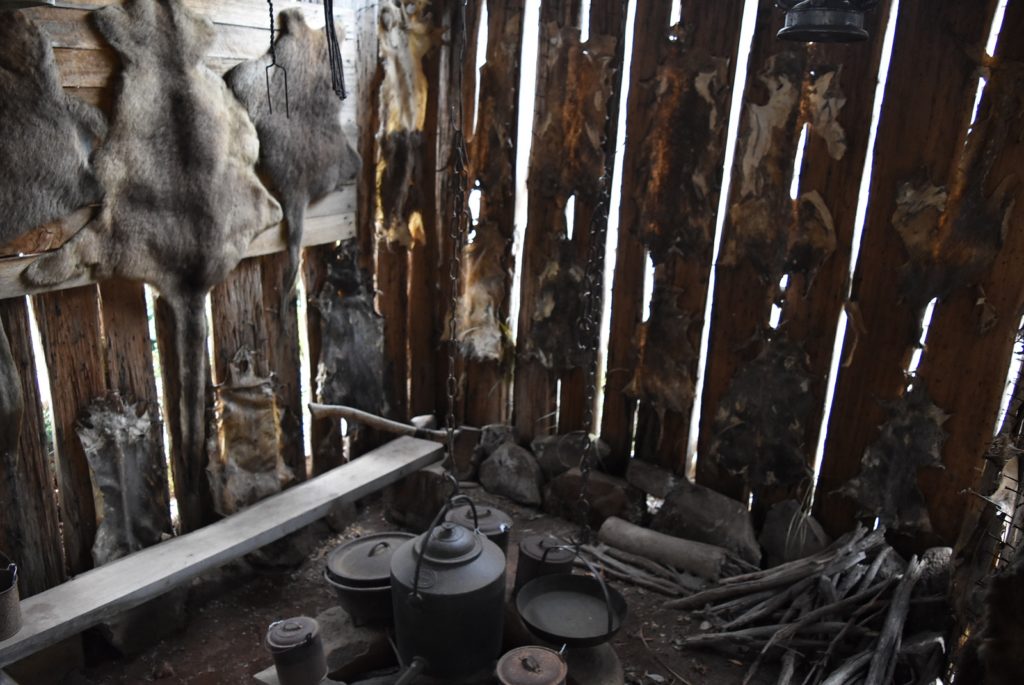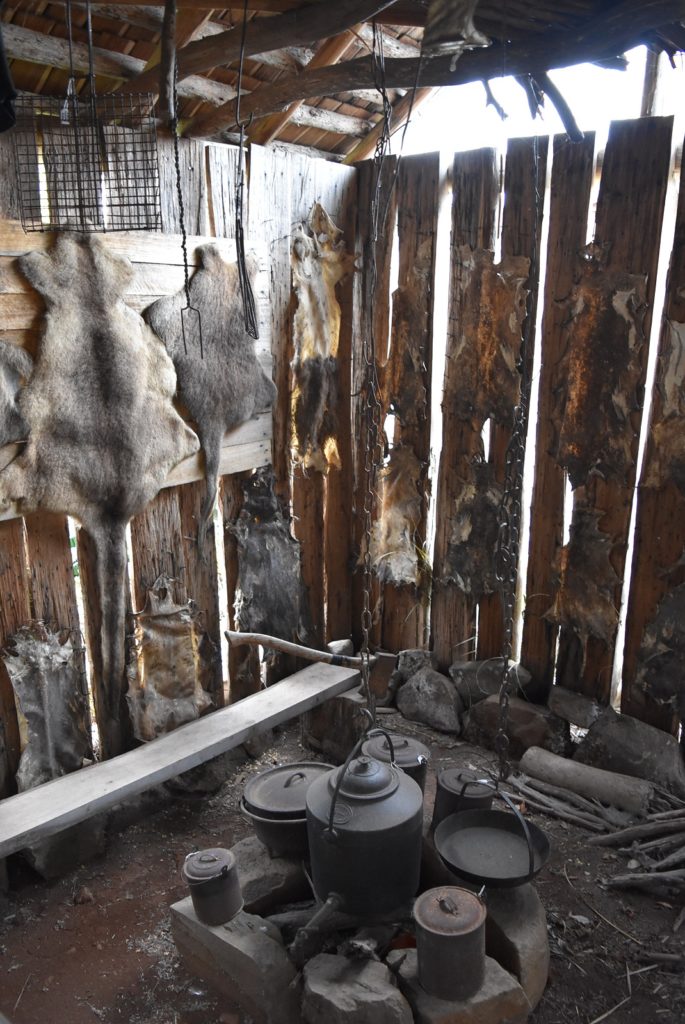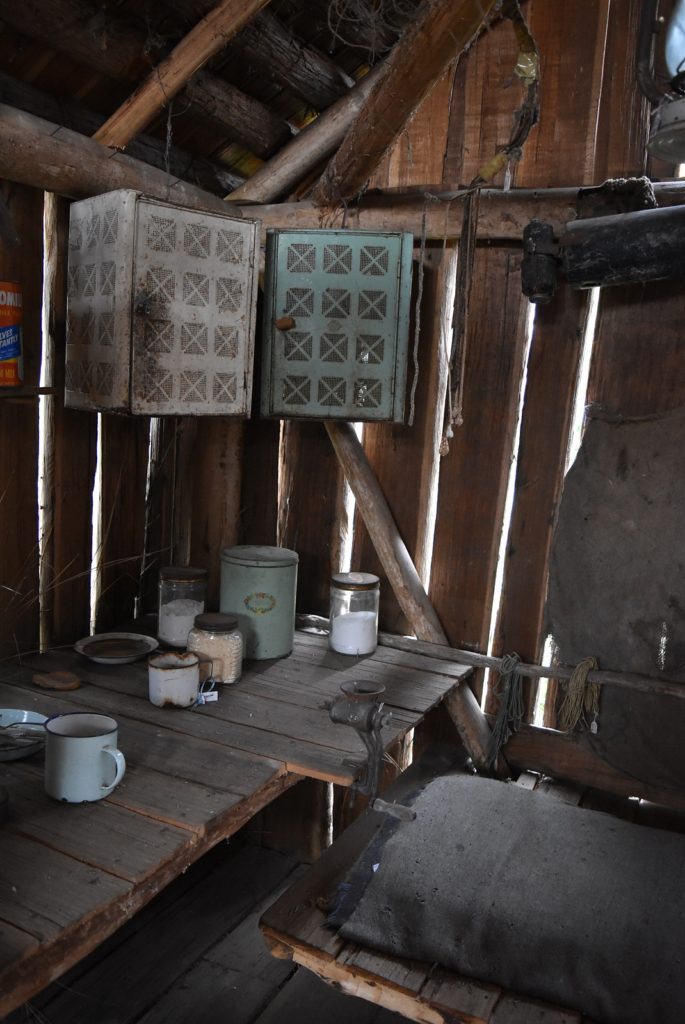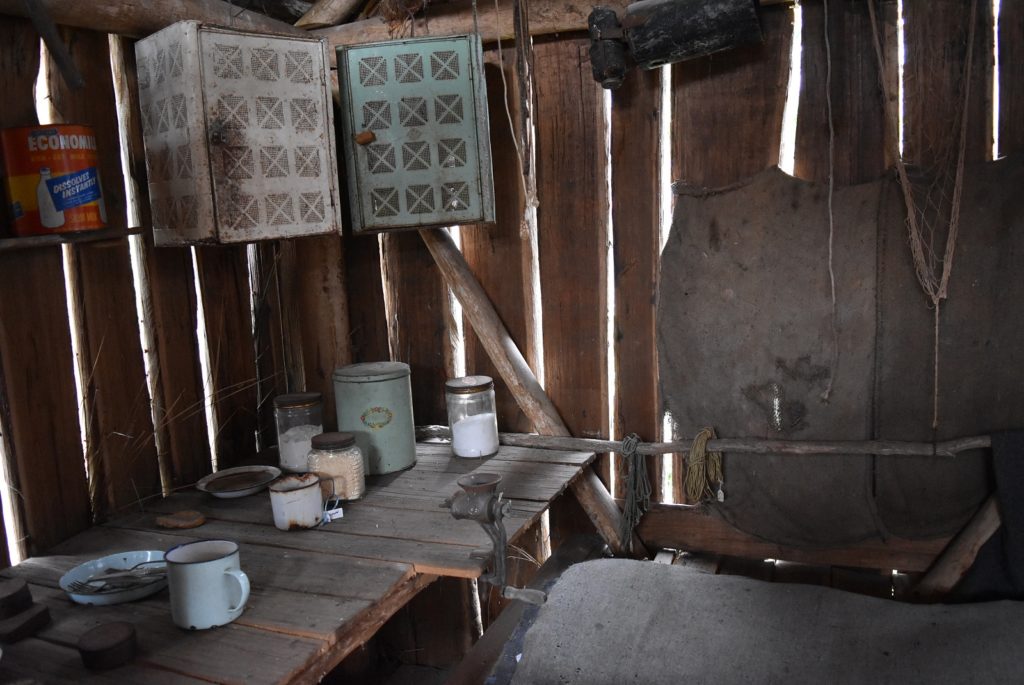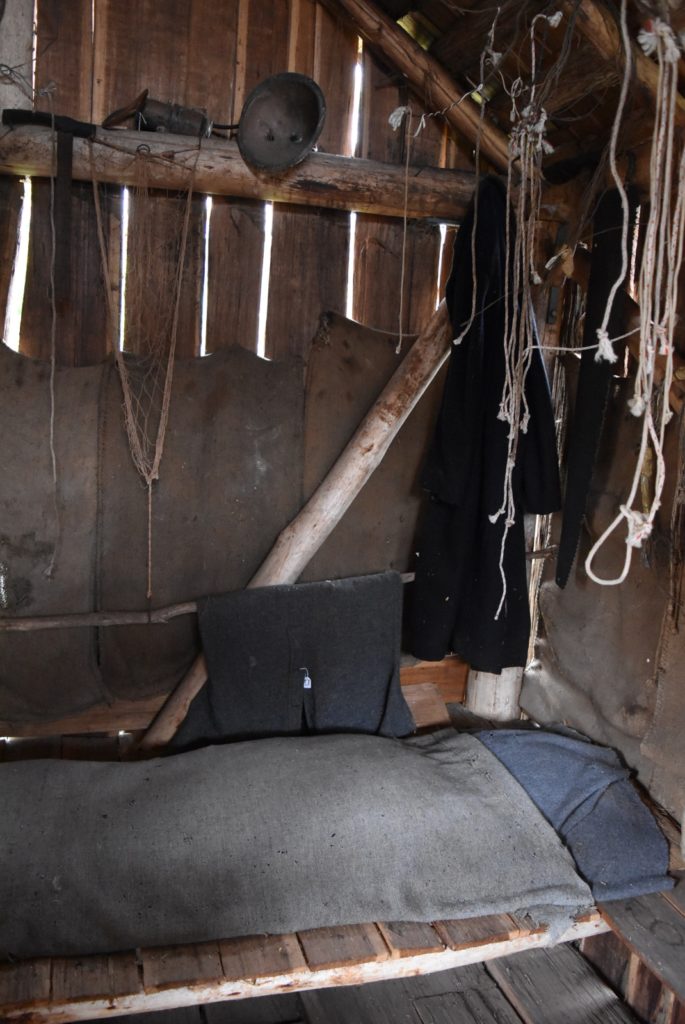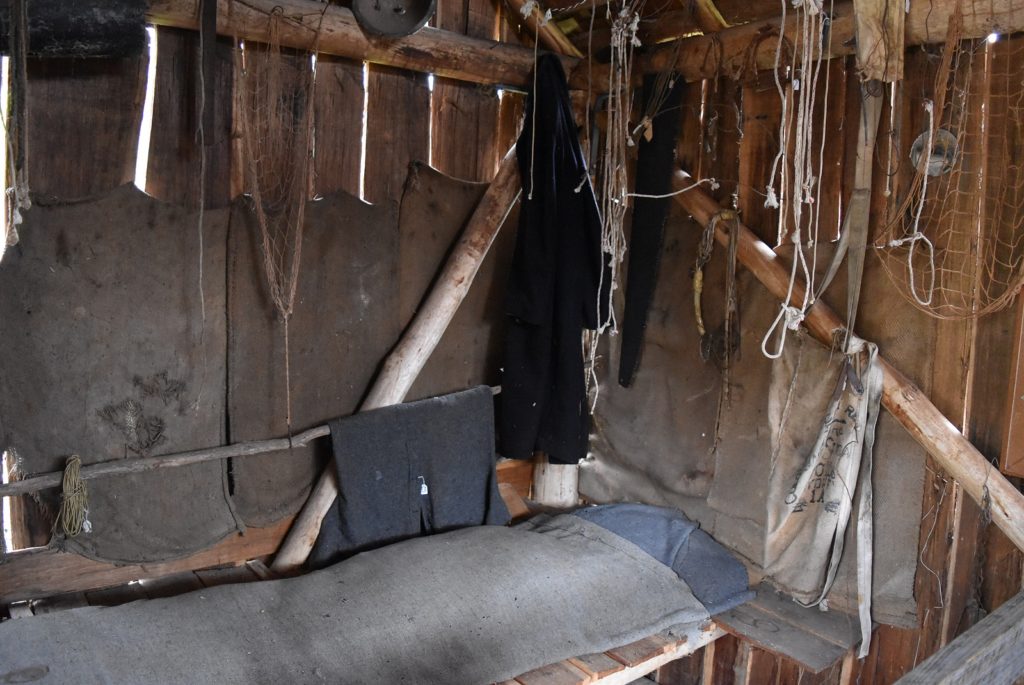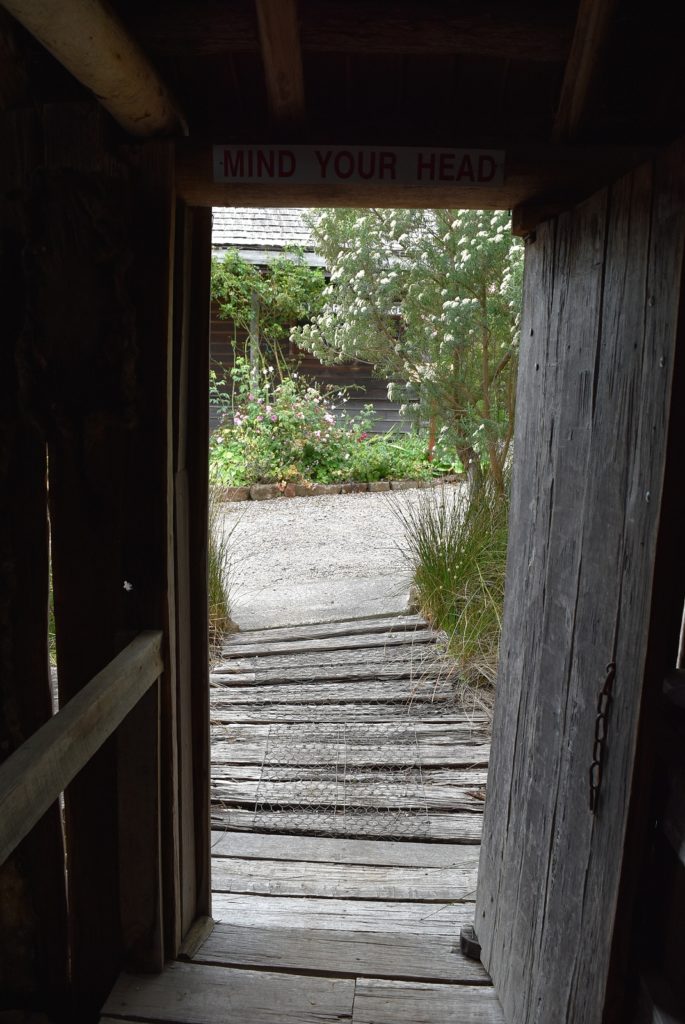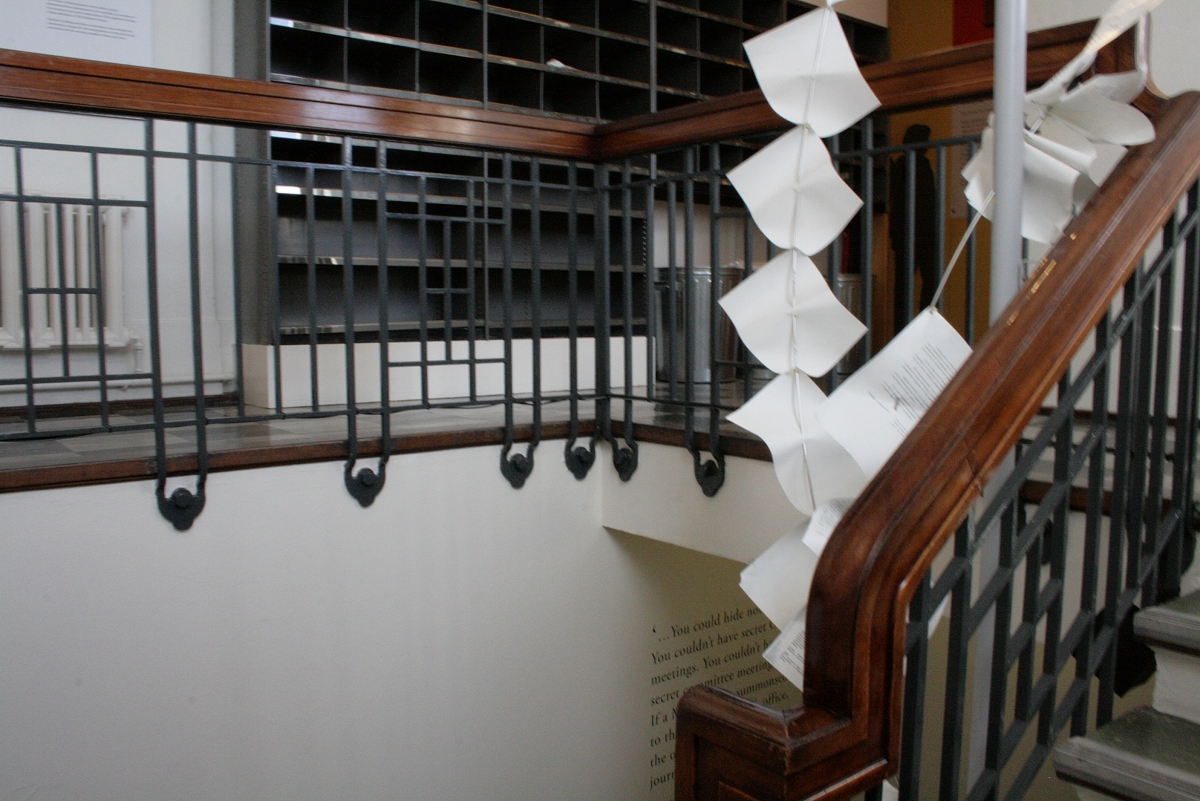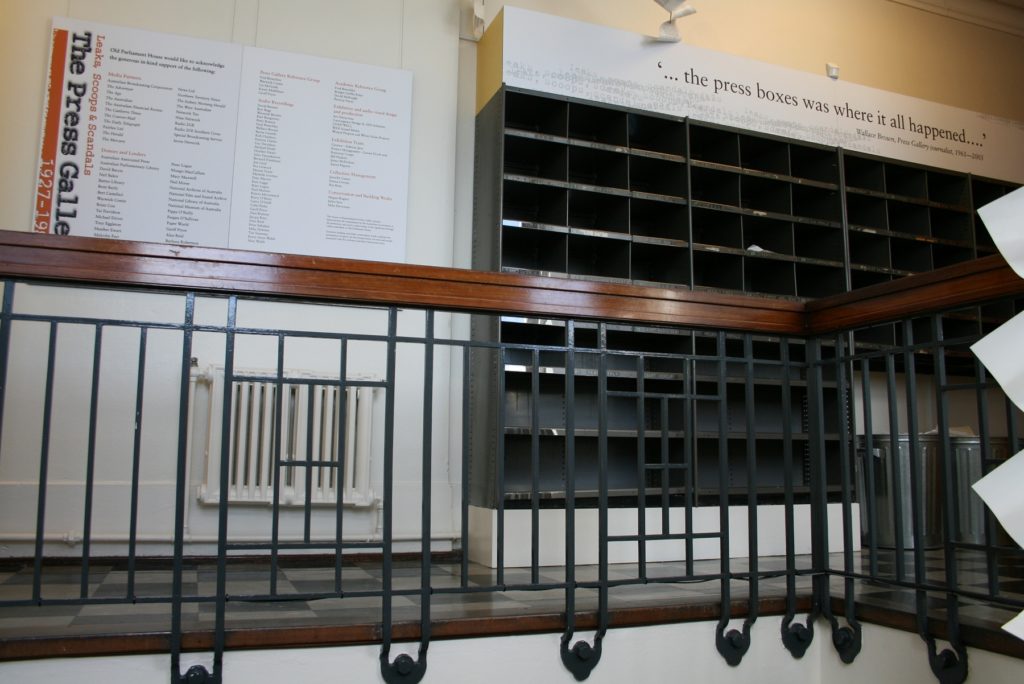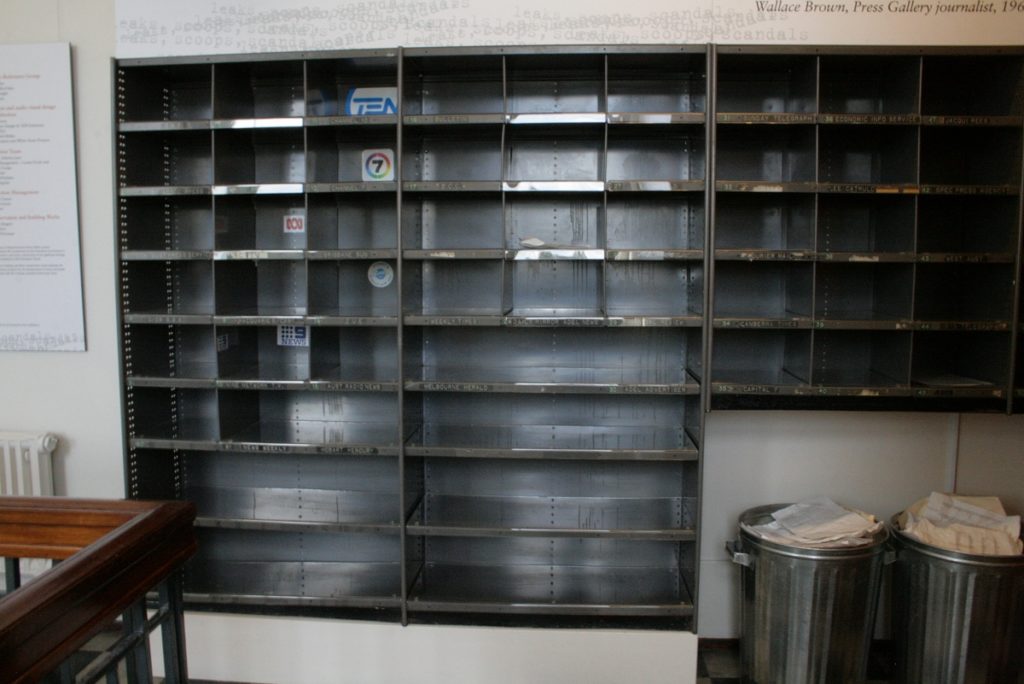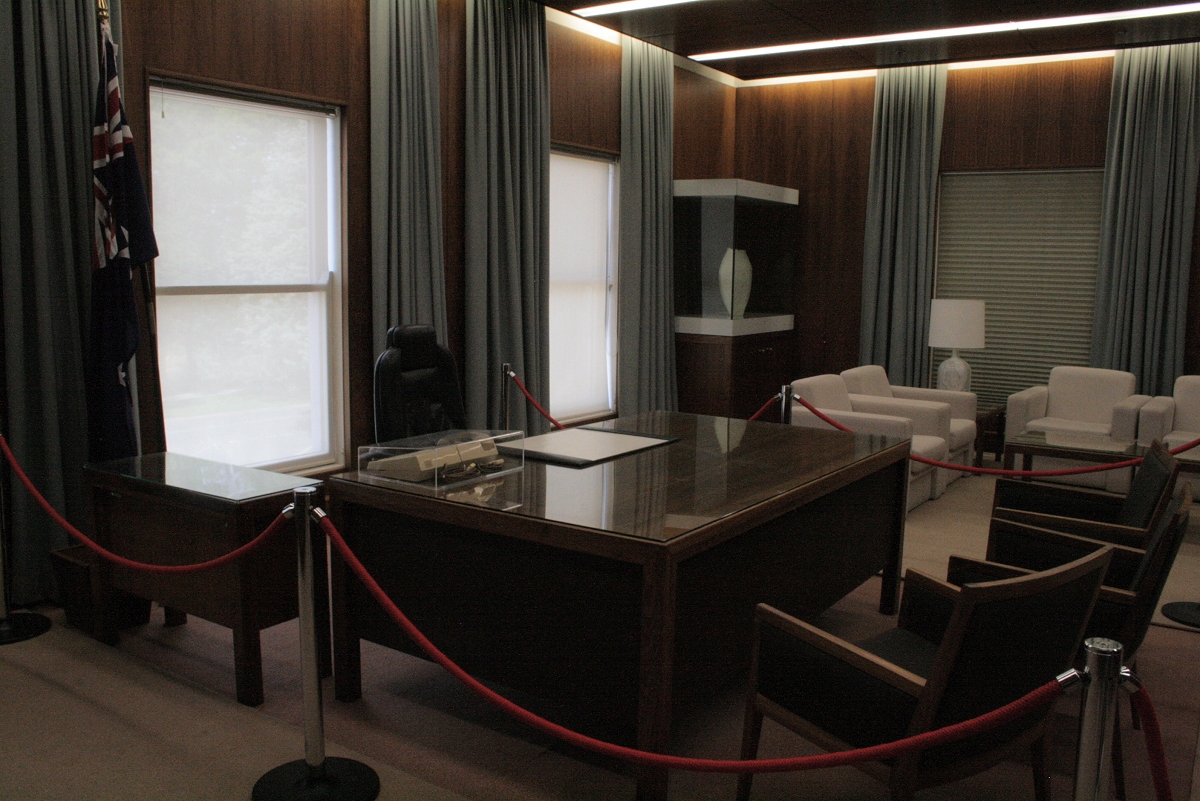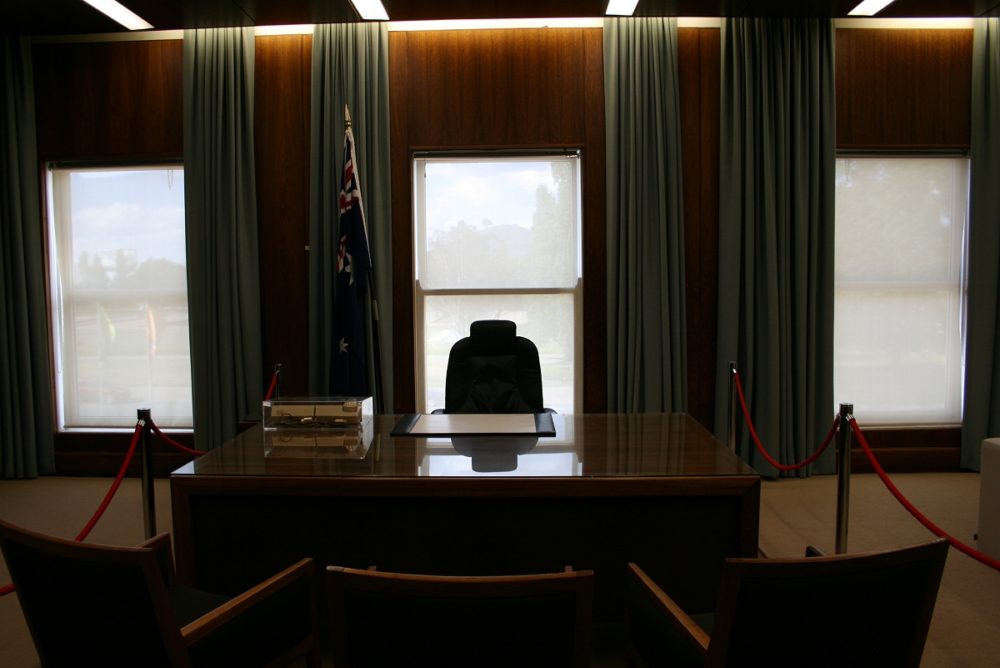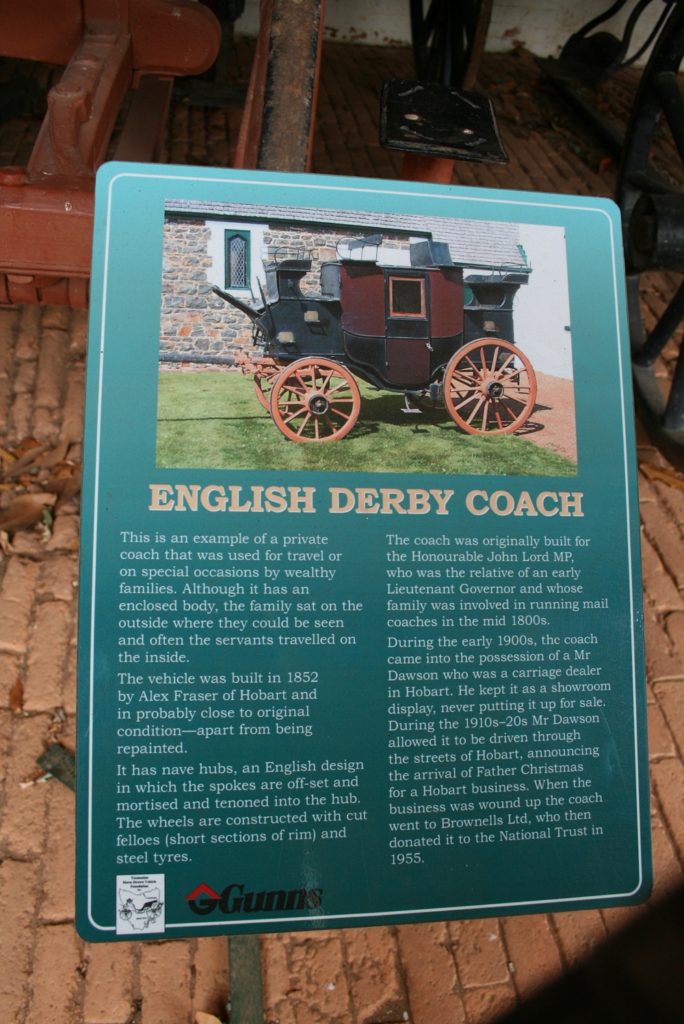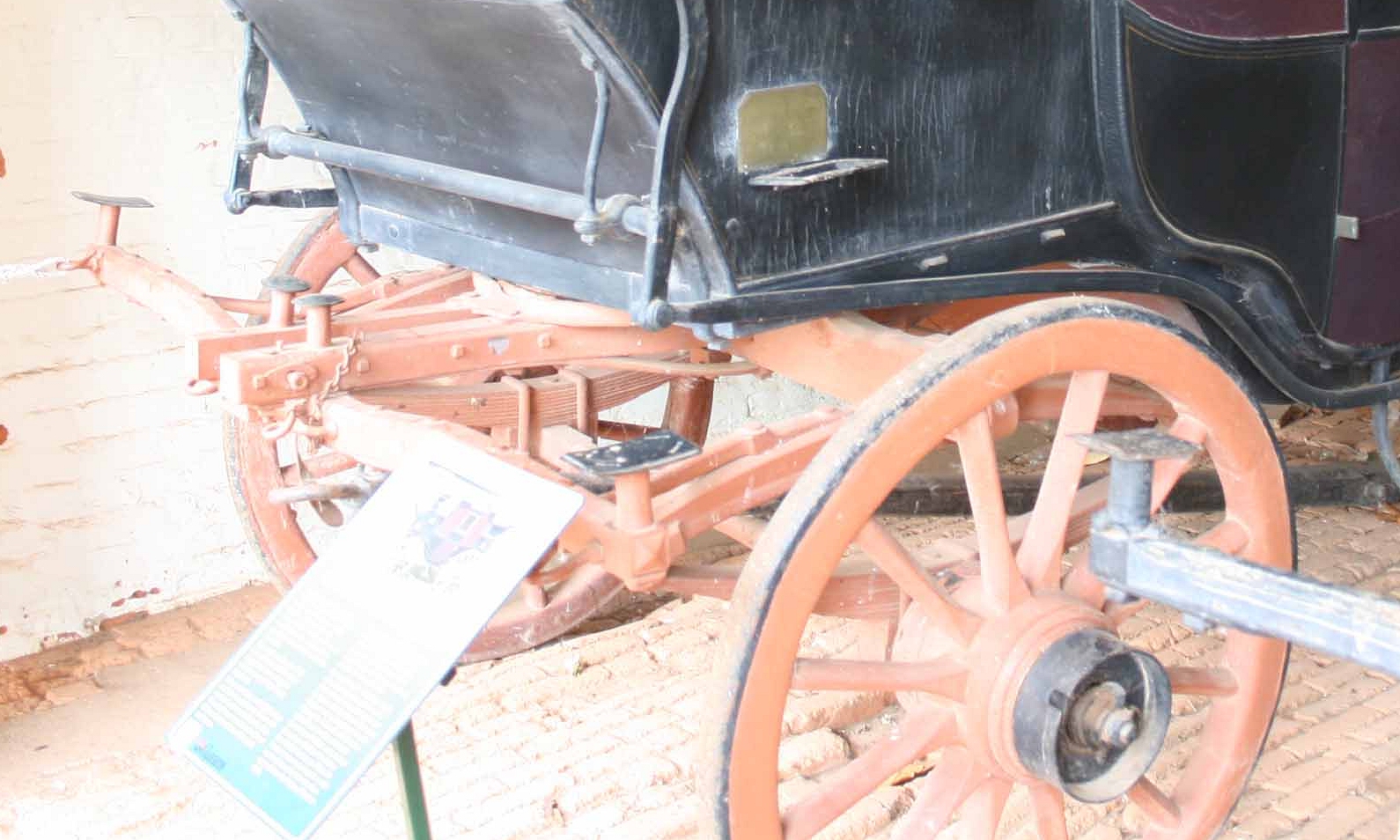Stables in the Callington Mill complex, Oatlands. Main post here. Late in the day, so the light is poor. Better photos here, but I'm leaving these ones as they might show other details.
interiors
Lyons Cottage
Lyons Cottage, Stanley. Birthplace of former priminister Joseph Lyons "demonstrates the characteristics of a single storey, weatherboard Victorian Georgian dwelling" (from the link P&WS site). Constructed prior to 1870. More about the history of the house (and Lyons) in the P&WS site.
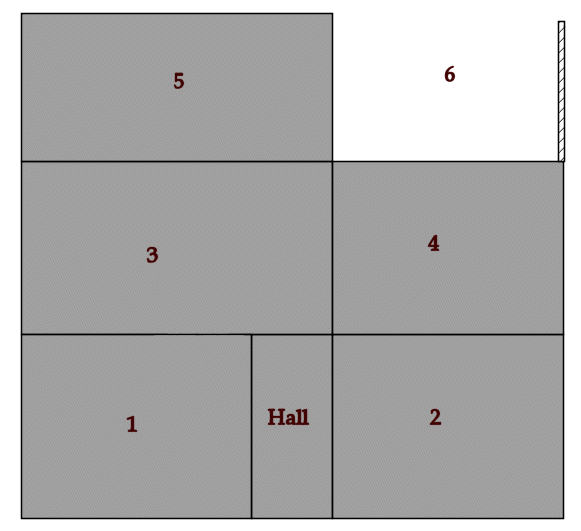
A guide to which rooms the photos are from. (Not to scale, obviously.)

Room 1: Bedroom

Room 2: across hall from bedroom.
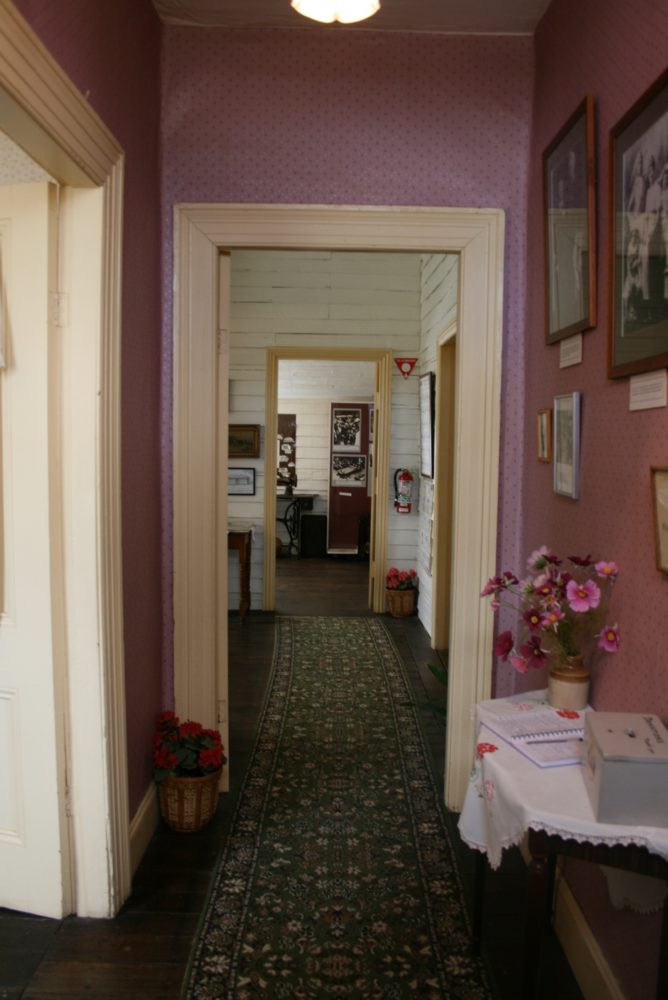
Hall, looking through the main living room (#3) to the kitchen (#5). The doorway to the left at the front is the bedroom (#1).
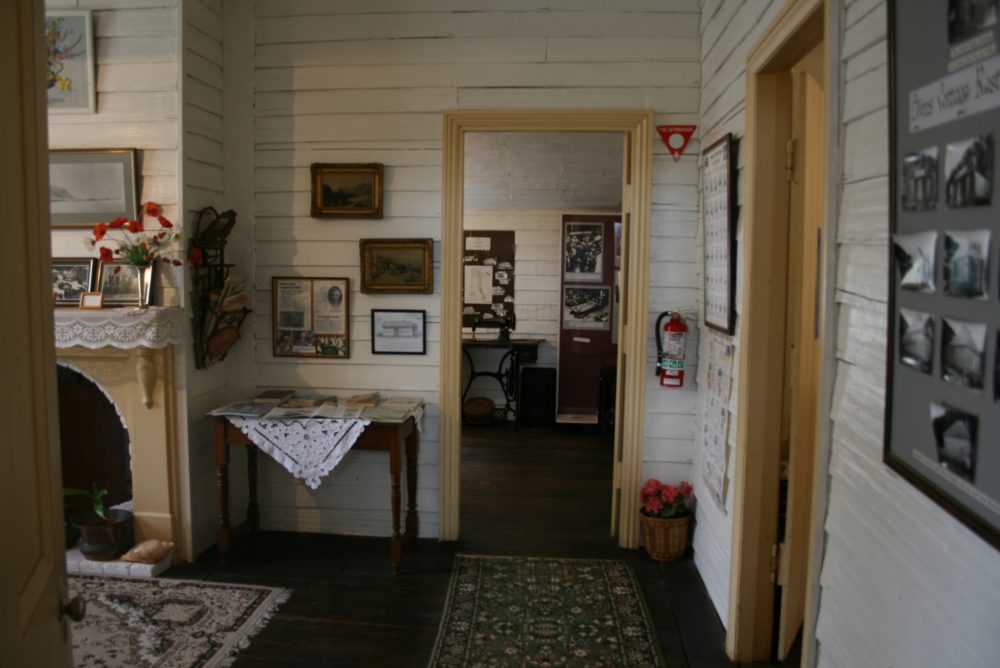
Entrance to main living room (#3), looking through to kitchen with door to 4 on the right.

Room 4, set up as a study. I would think it'd be a second bedroom.
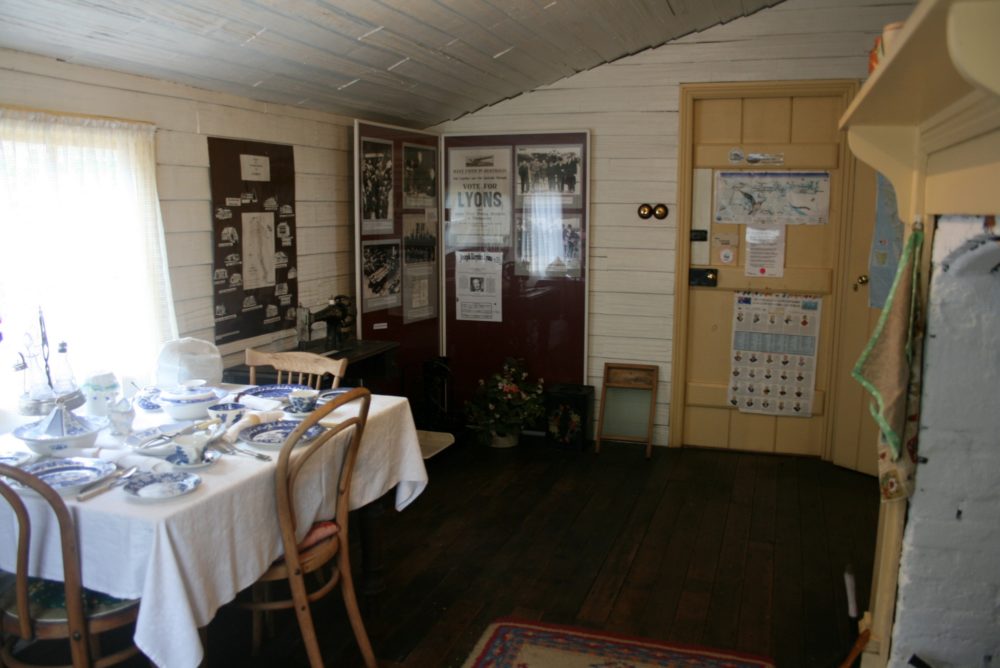
Kichen, with door to outside (#6)
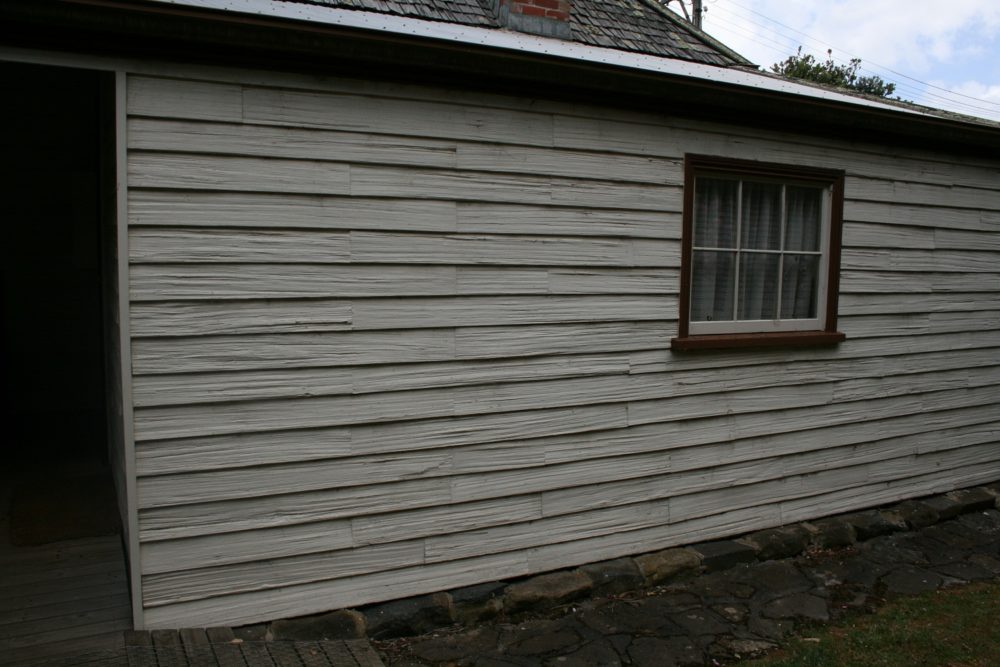
The external walls are split timber, which it's believe the original walls were. At some point (early twentieth century) they were replaced with newer weatherboards. When the cottage was restored in the 1970s, these were in turn removed and the split-timber walls & shingle roof reinstated. This is shown in the photo of photos below.
Bark Mission Hut
At the National Museum of Australia.
Mission hut 2000
built in the style of huts from the 1920s to 1950s, by Herbie Harradine, Lionel Chatfield and Joe Chatfield, under the supervision of Uncle Bill Edwards.
Text on outside panel:
Framlingham
"This hut is just like the first home we built, when Kathleen and I got married, only half the size. Come inside. We share our story so you know what it was like for us."
(Uncle Bill Edwards, 2007)
Framlingham, on Victoria's south-west coat, is home to many Koori families who have fought long and hard for the right to continue living as a community.
Established as an Aboriginal reserve by the Church of England Mission in 1856, Framlingham soon fell under the control of the Welfare Board (also known as the Central Board to Watch over the Interests of Aborigines). The board, which comprised pastoralists, philanthropists, government and church officials, made several attempts to close Framlingham and relocated the Koori families to other missions. Each time, the families protected and resisted leaving.
In 1907, under the Aboriginal Lands Act 1970 (Victoria), the reserve was handed over to the Framlingham Aboriginal Trust and continues under Aboriginal ownership.
Beechworth Gaol
Operated as a gaol from 1860s to about 1920, and then various related purposes until 2004. There's more history on the Wikipedia page and there's a website for the redevelopment project.
I've had to split this over multiple posts, but there's a link at the end of each post that goes to the next one so just continue on.
Inside.
Right wing.
Left wing and outside.
On the way out.
Arriving.
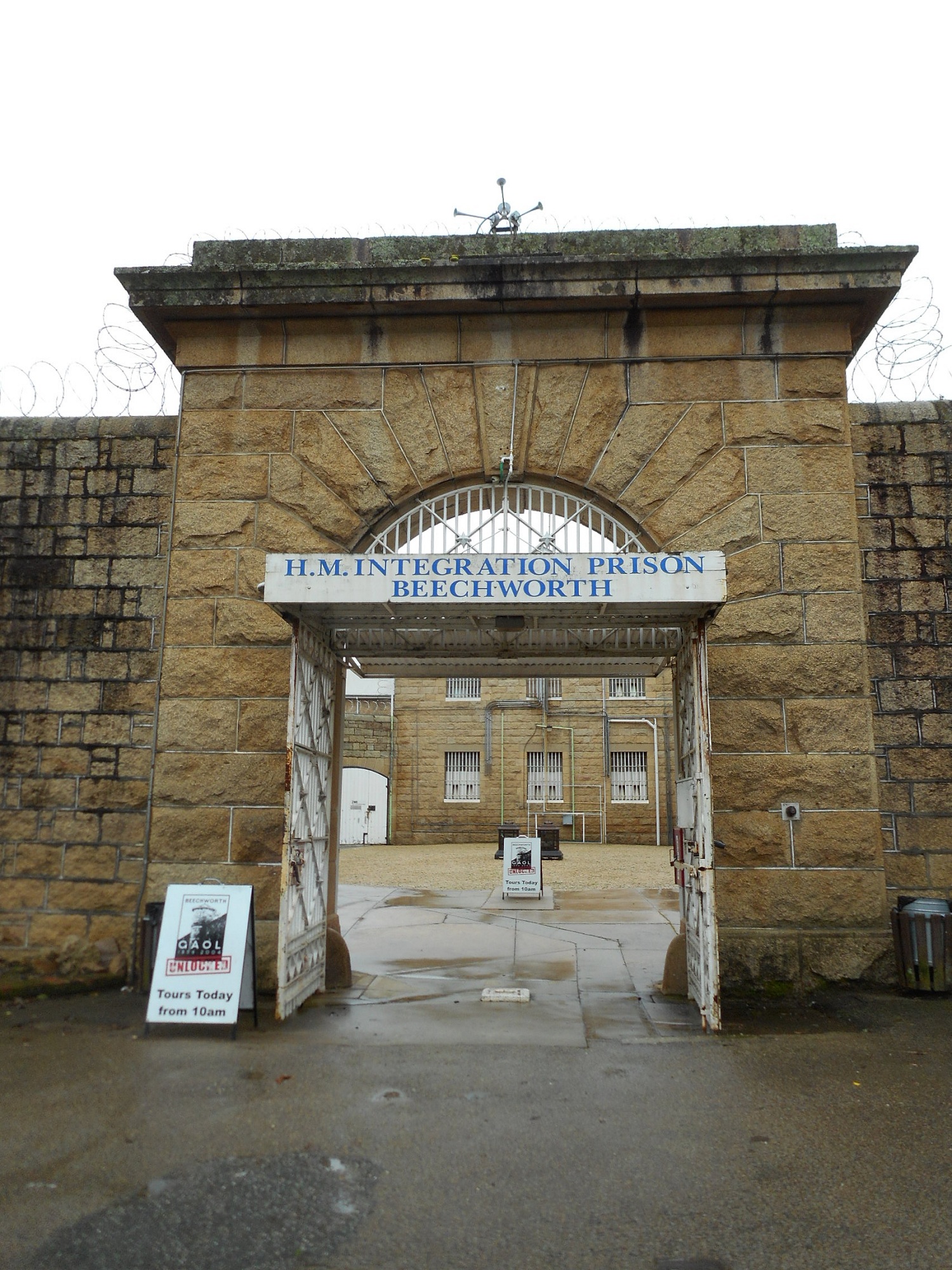
Somewhere between its closure and now, the site was open for self-guided tours, which is what these photos are from. While I have a lot of photos, I don't many words to go with them. So we'll see how it goes.

The main building is a Y-shape. You can see it in the main photon the About page. The cell-blocks form the arms of the Y and this building straight ahead is the leg.
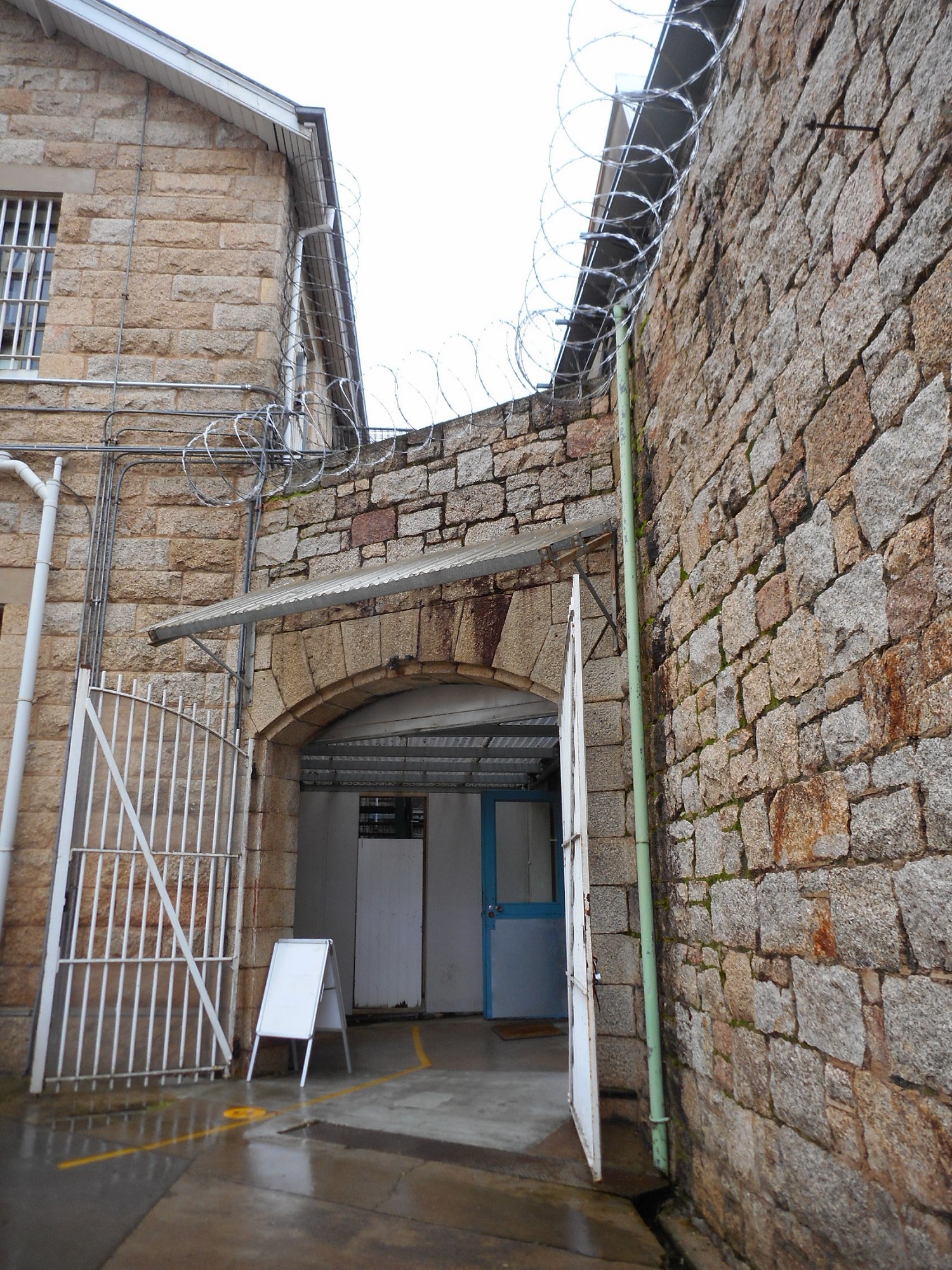
Entrance into gift shop/ticket counter.
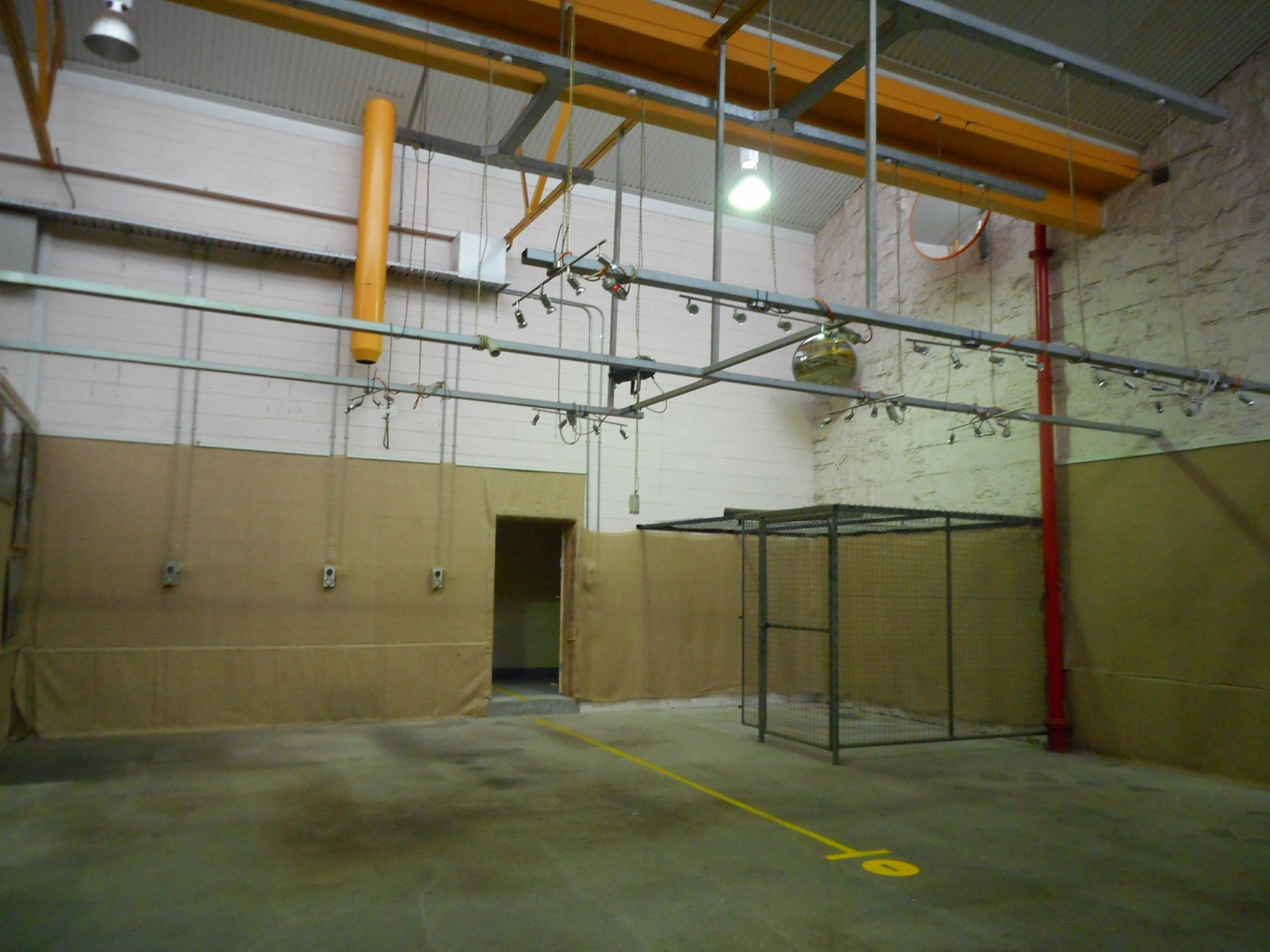
Leaving the gift shop, there's this room and then a hall and corridor that the camera found too dark and I can't remember what they were for, so we'll skip them and head outside to the exercise yard.
The bright yellow line is the guide line for the tour. So that's where it starts.
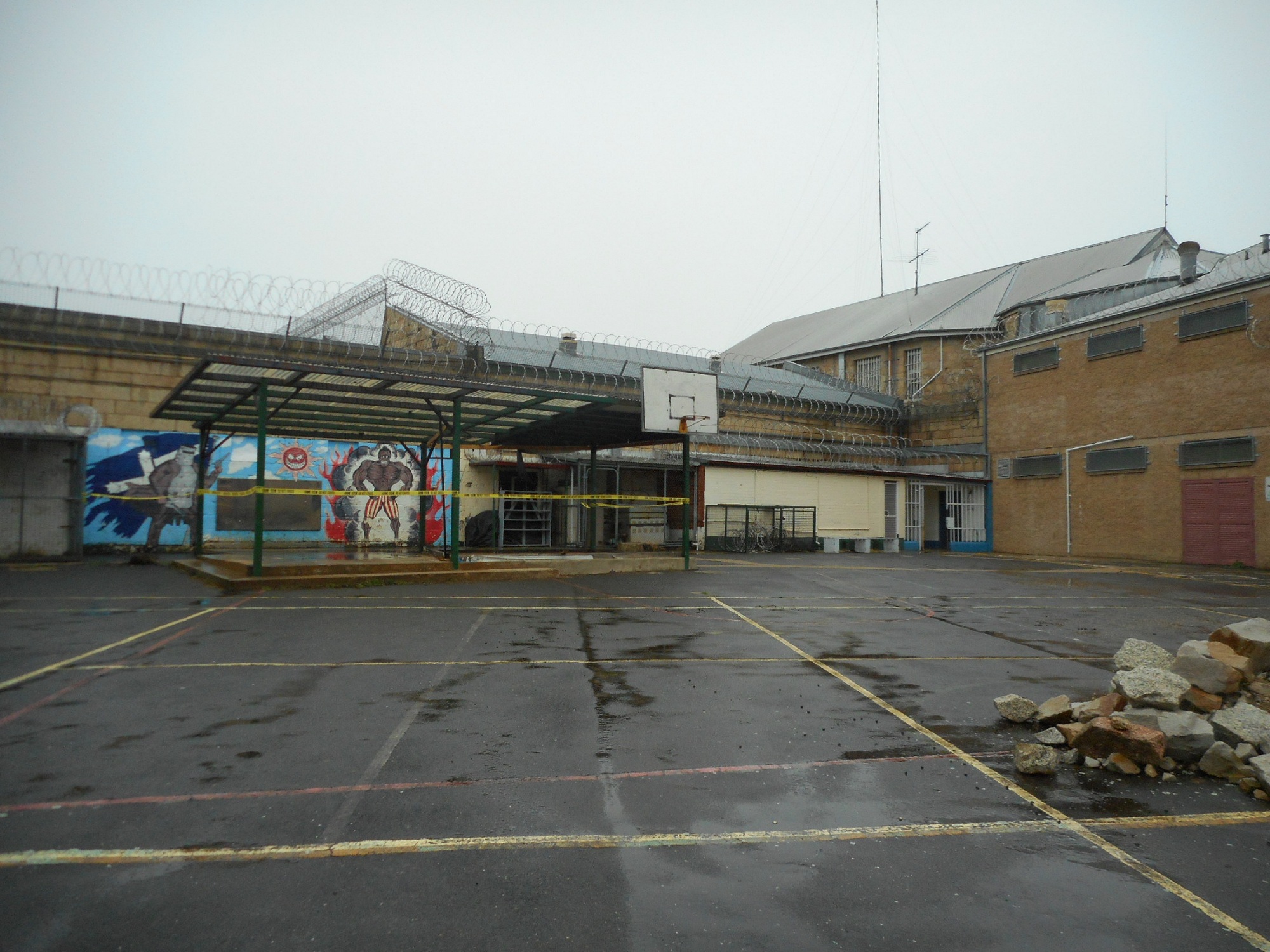
The door back inside is to the right there (white with blue surround). It goes into the main (Y-shaped) building.
Kitchen, Commandant’s House/Canarvon Hotel
From on-site panels:
When the penal settlement closed in 1877, tourists flocked to the area. In 1885 Port Arthur was renamed Carnarvon and the Commandant's House converted into the Carnavon Hotel. Over the next 70 years it was used as a boarnding house and private residence.
When this kitchen was added in 1854, by Commandant James Boyd, it only catered for a family of four or five. When operating as a hotel the kitchen would cater for between 12 and 30 guests. Most meals were plain English fare -- roasts, boiled meat, boiled vegetables and pudding. Meal preparation consumed much time and energy.
There a number of smaller storage rooms in this area. The light wasn't very good for photos, but I've included two them below.
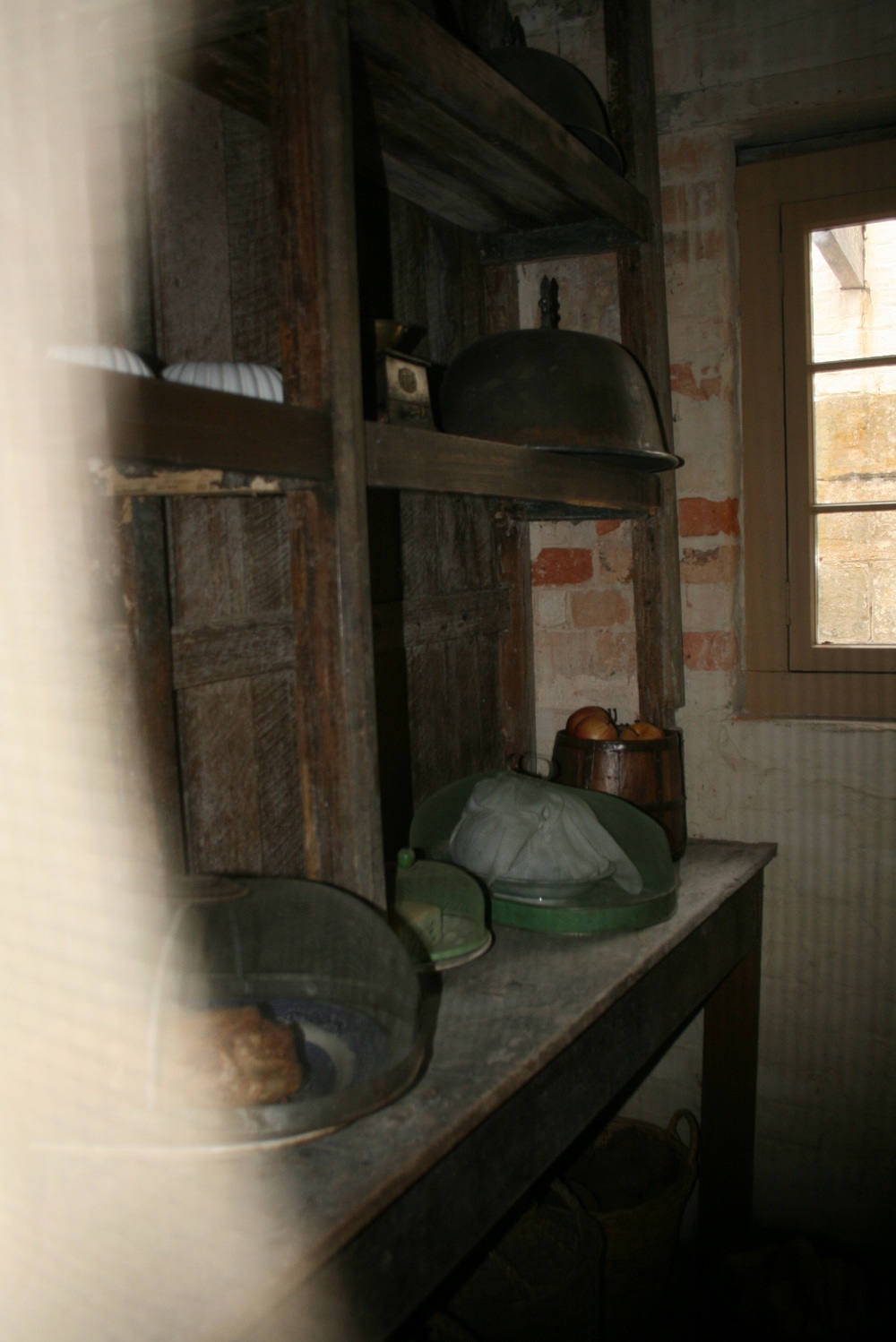
The one below was labelled as "Store/pantry".
Dining & Drawing Rooms, Narryna
Bridge of HMAS Brisbane
This area was dark, so there are two sets of photos, the first withut the flash and the second with. (Or you could head over to the Australian War Memorial website and check out the Google Street Maps version.
From the information panel:
After decades of service with the RAN and having seen action in the both the Vietnam and First Gulf Wars, HMAS Brisbane was decommissioned in 2001. In 2005 it was sunk off the Queensland coat and is now a dive site. Before the sinking, Brisbane's bridge was removed and brought to the Memorial. The bridge appears here in its Gulf War configuration
Type: Charles F. Adams Class guided-missile destroyer
Launched: 5 May 1966
There is also a "key" panel but it didn't photograph very well. However, I can't find it anywhere else so I've put it at the end.
From the entrance, face left and then clockwise/to the right.
From the entrance, face left and then clockwise/to the right.
Bar rooom & cellar
The Deloraine & Districts Folk Museum is housed in the former Family & Commercial Inn. The corner room and adjoining room are presented as rooms of the inn. The cellar is below, viewed from outside.
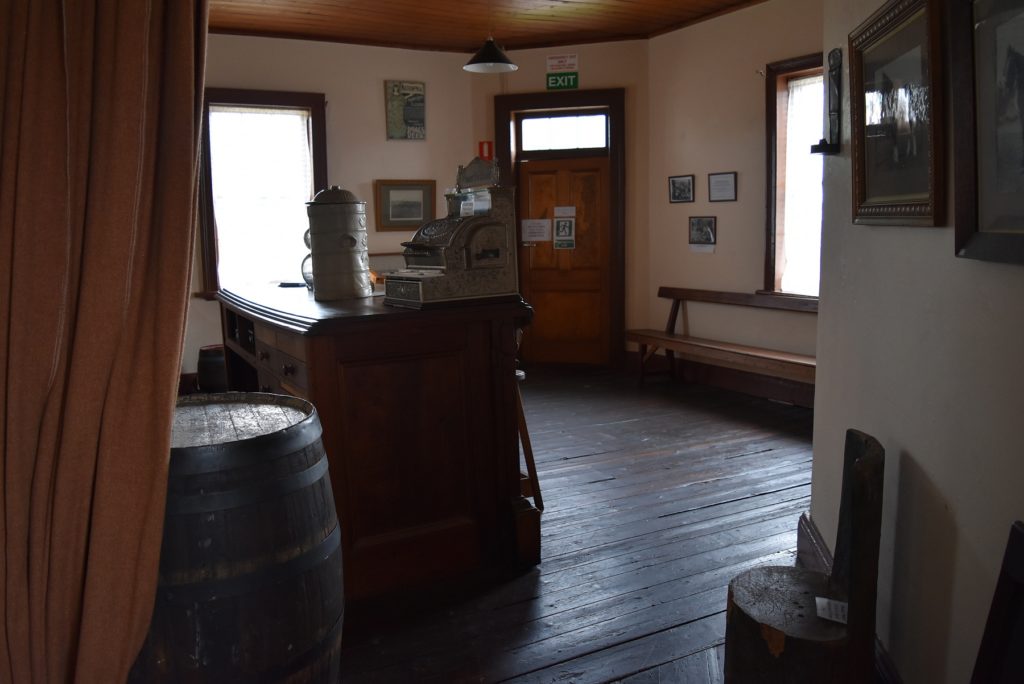
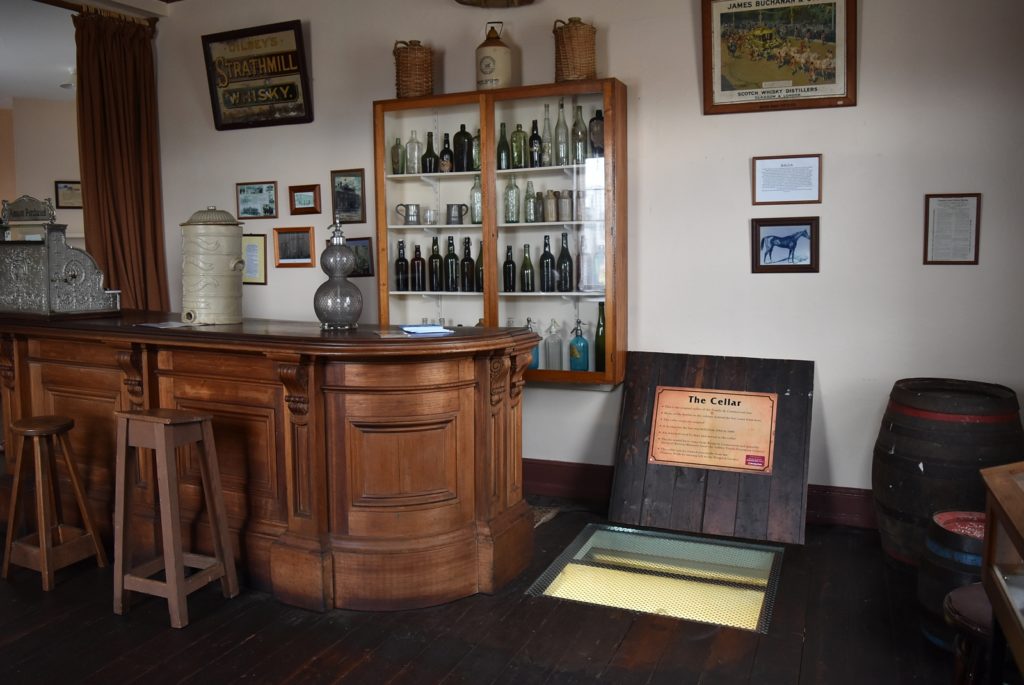
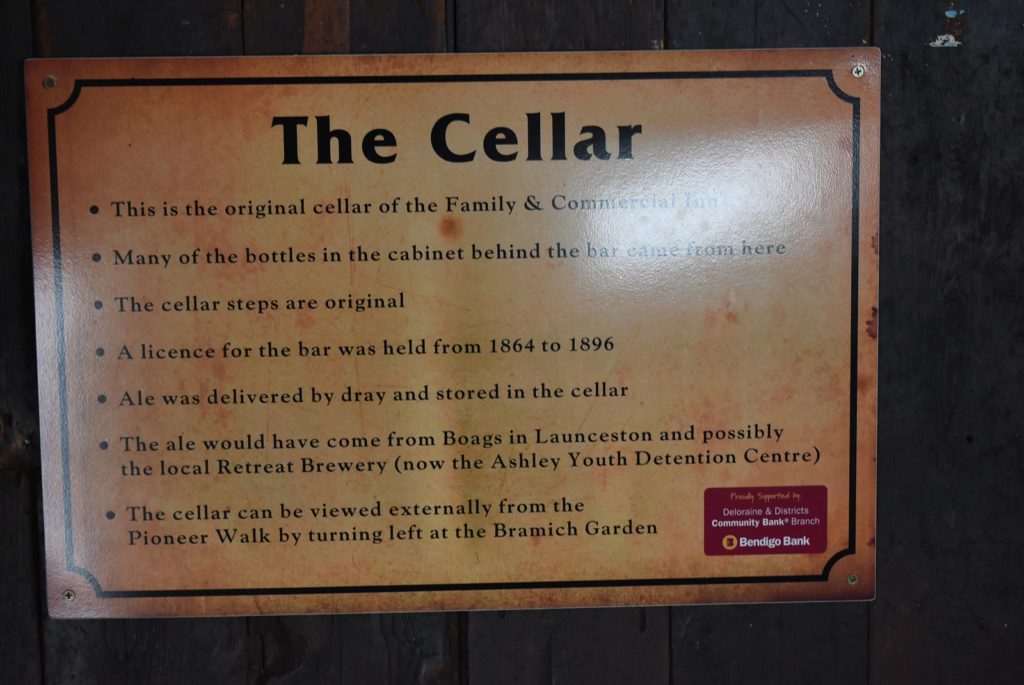
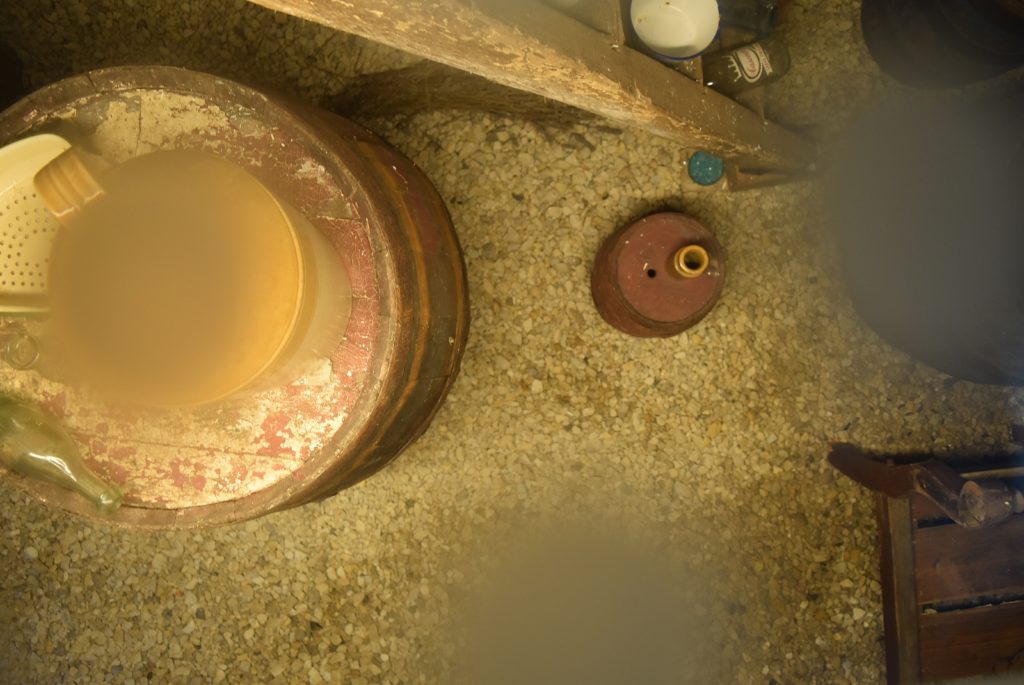

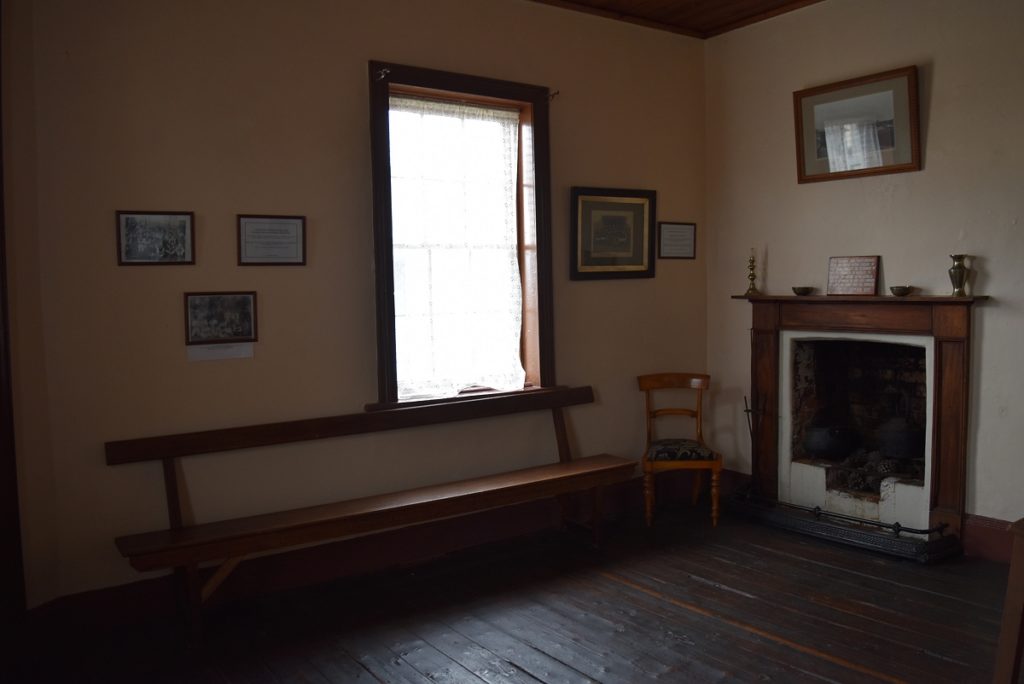
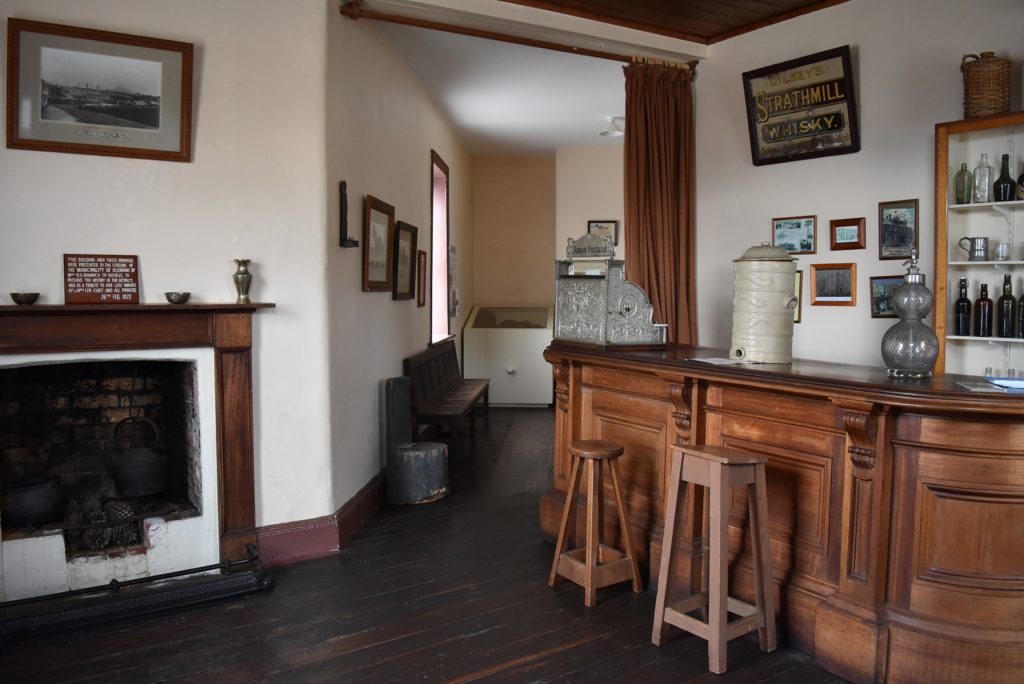
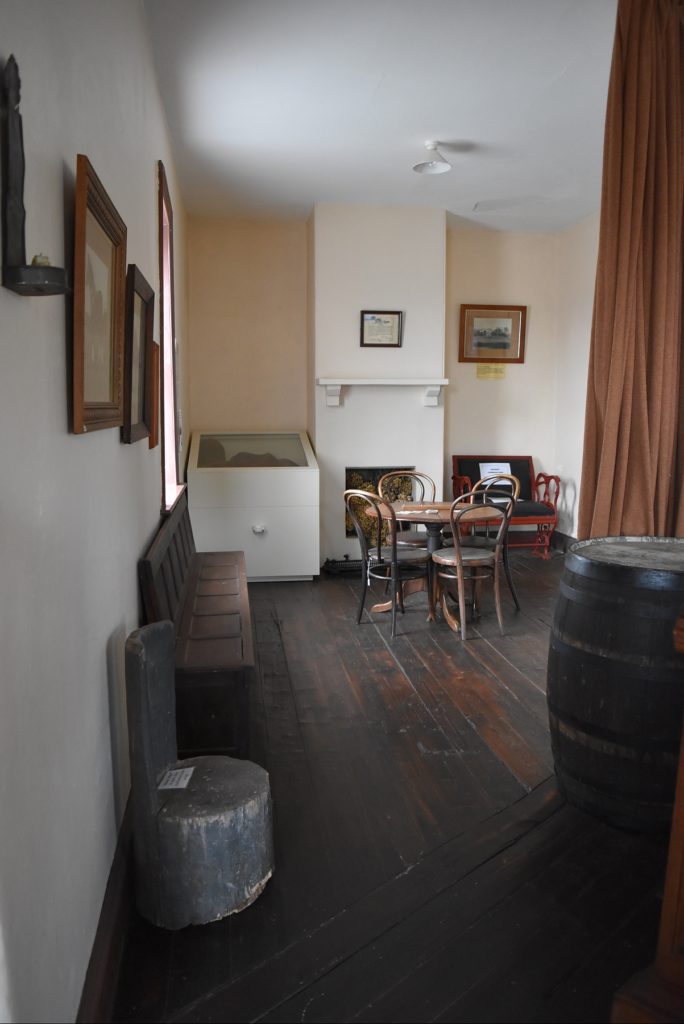
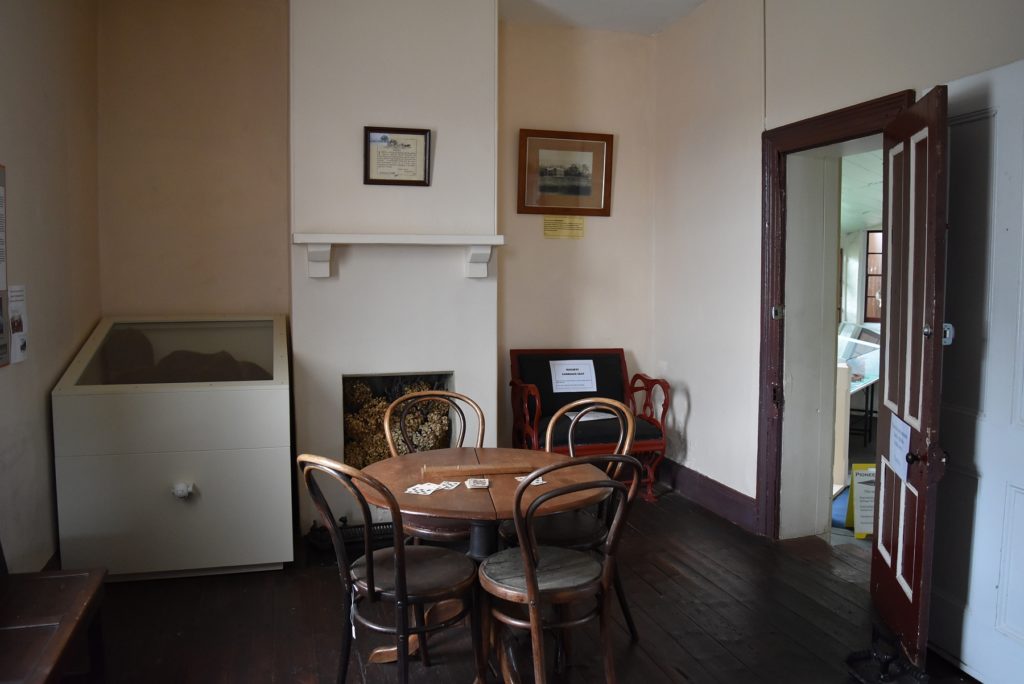
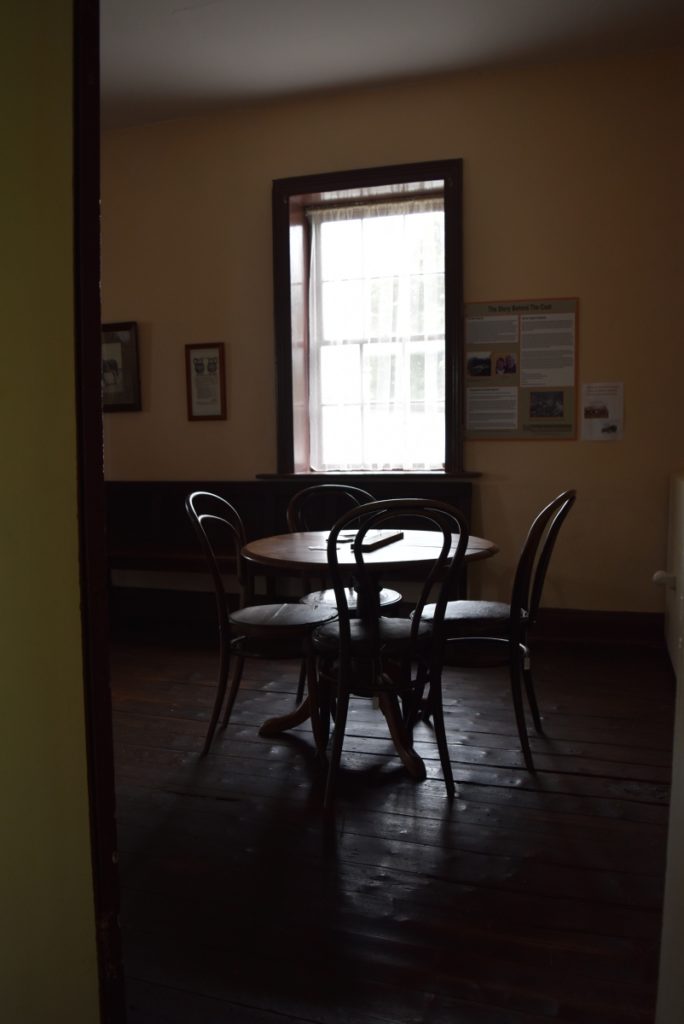
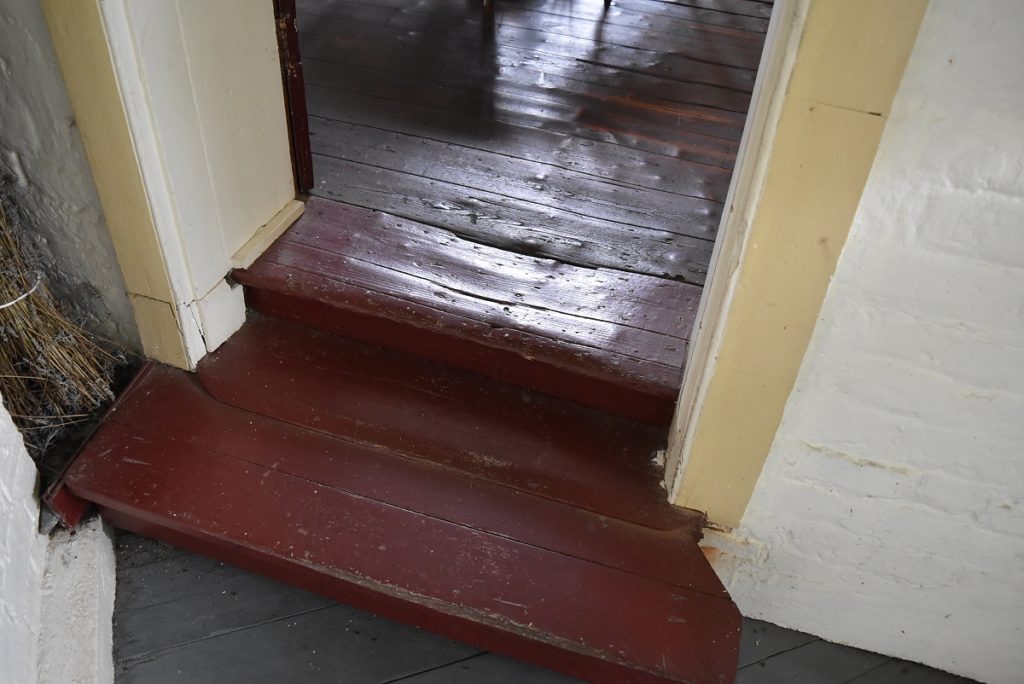
Cellar
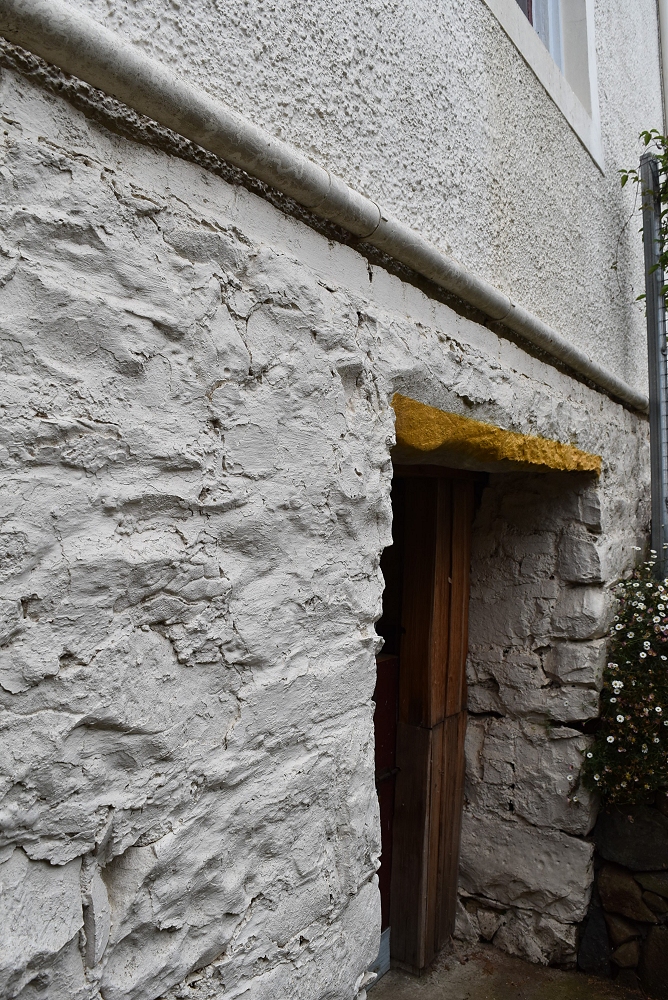
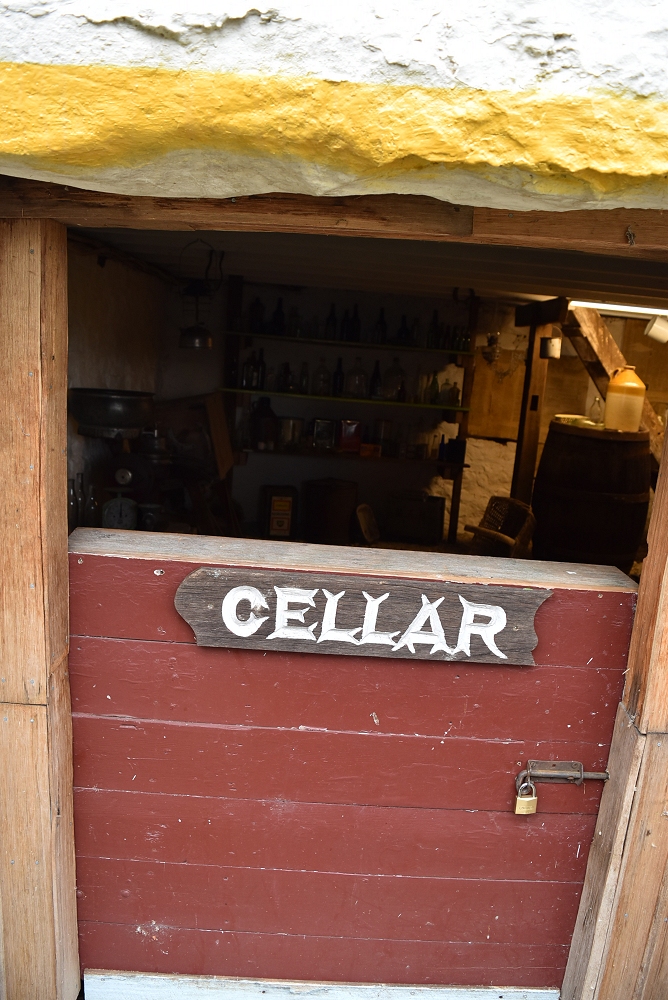

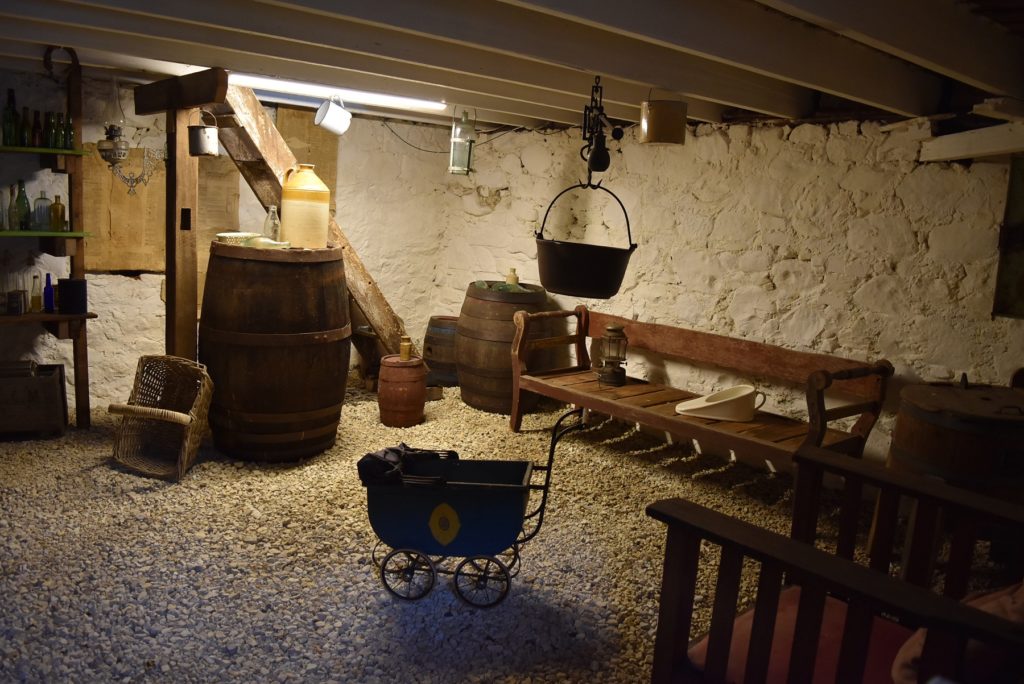
Entrance Hall & Back Hall, Narryna
Entrance hall, looking back towards main entrance. Larger image.
Narryna, Battery Point, Hobart. Other rooms are under the Narryna tag.
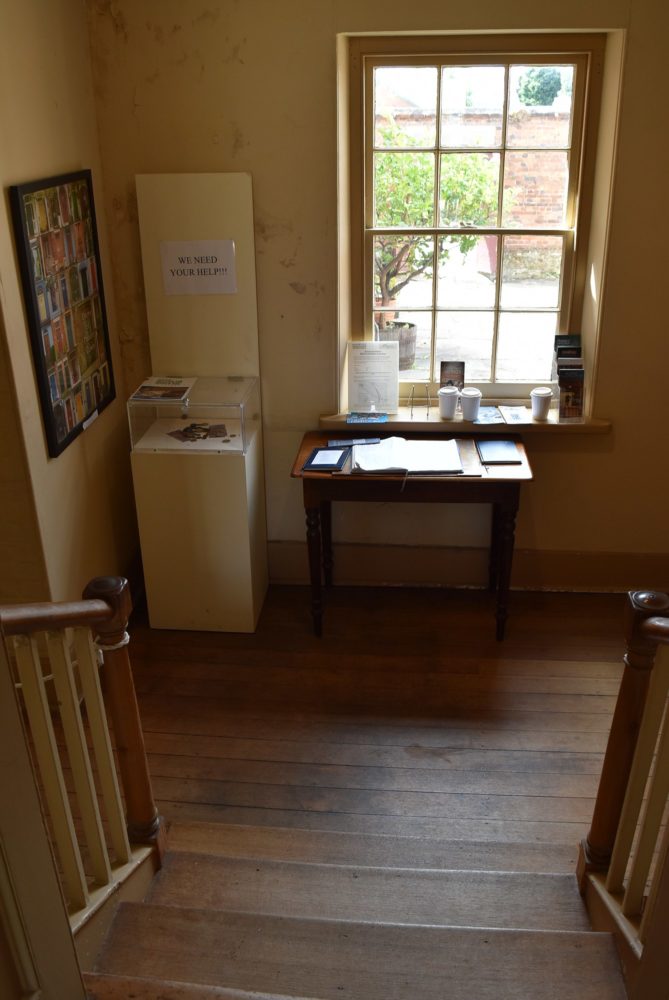
Entrance hall leads through to these steps down to a back hall. To the right is the back door. To the left, the kitchen and back stairs.
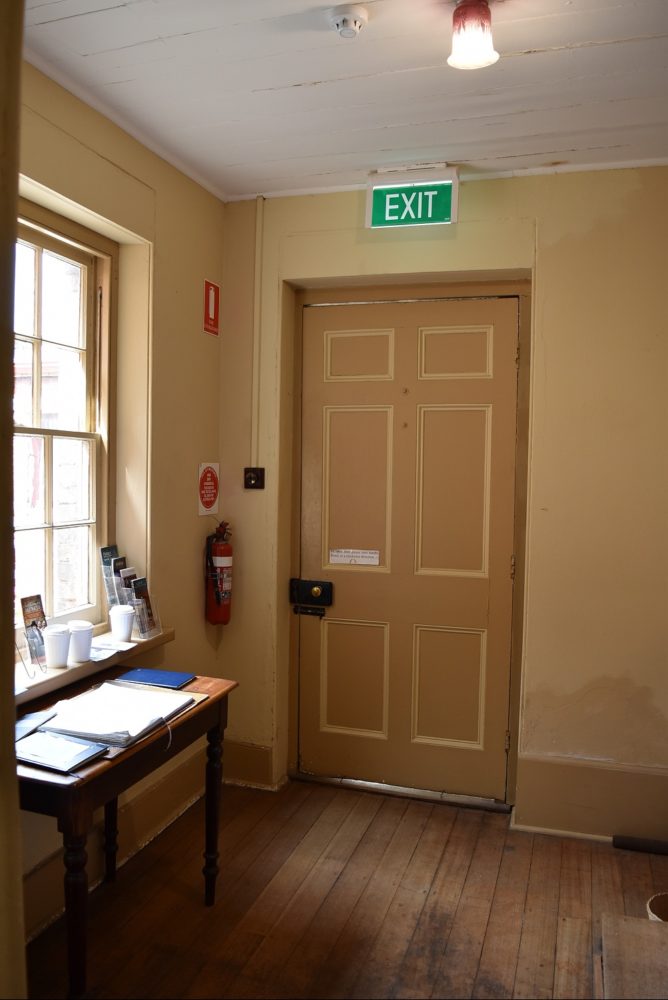
Back door, leading to courtyard.
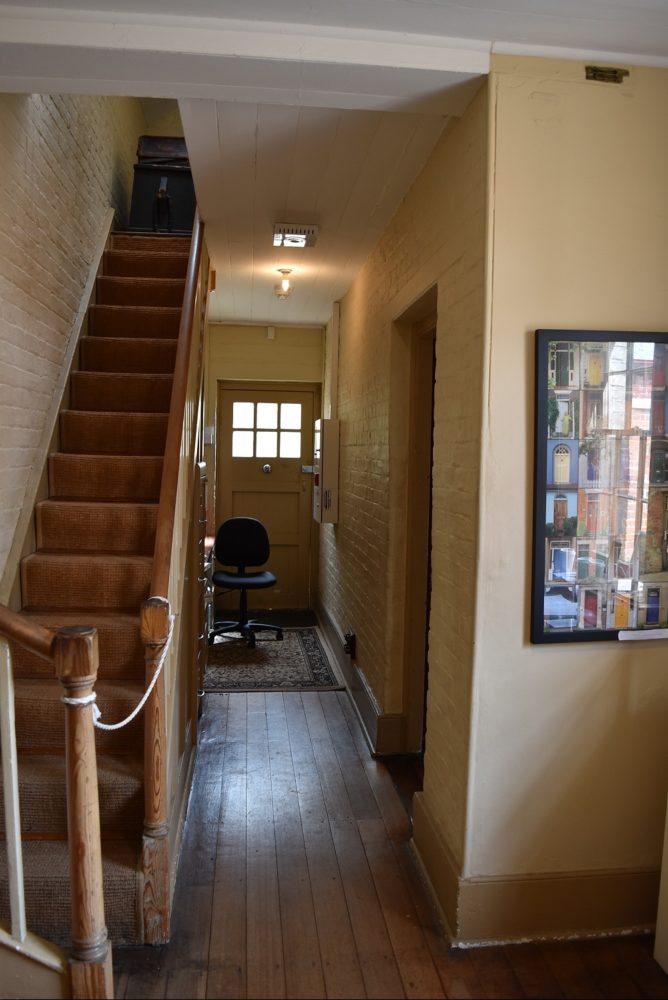
Back stairs and kitchen (through door on right).
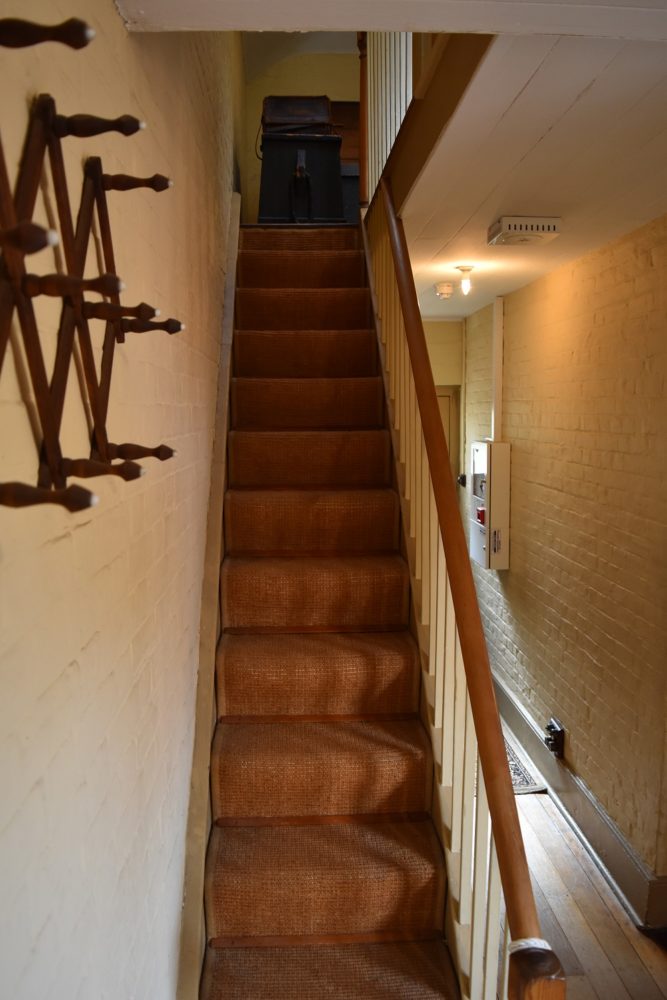
Upstairs to servants quarters and back entrance to bedrooms.
School & shop, Beaconsfield
Opposite the Grubb Shaft Gold Museum (now Beaconsfield Mine & Heritage Centre) there's a small complex of recreated buildings with miner's cottage, school & shop. The school came from nearby Flowery Gully. I can't remember the origin of the others.
The shop is small front building in the above photo. The single-room school is at the back. The grey walkway is where the photos are taken from, through the window.
Schoolroom
Photos are from the left side of the room to the right (teacher's desk, fireplace, organ, door)
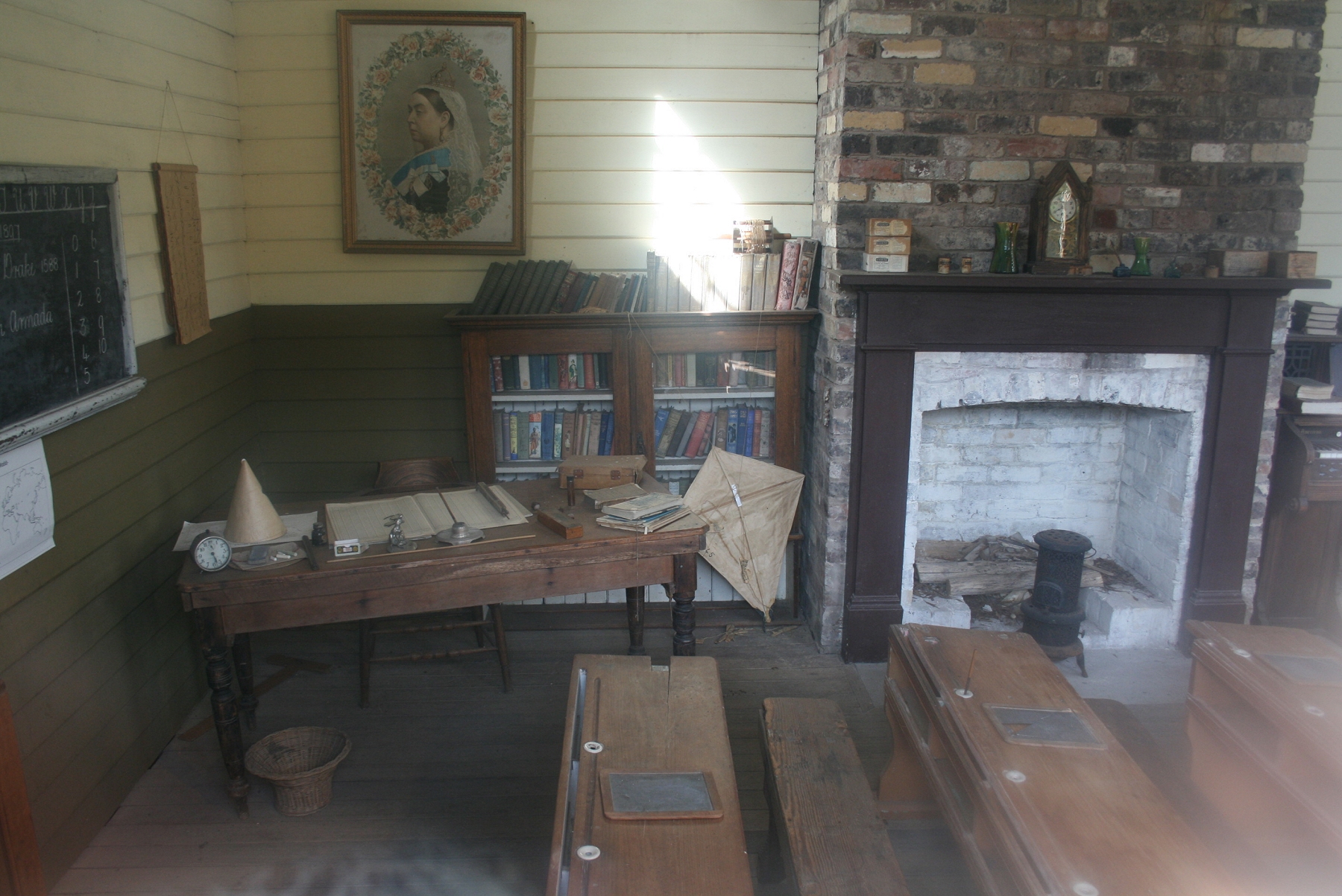
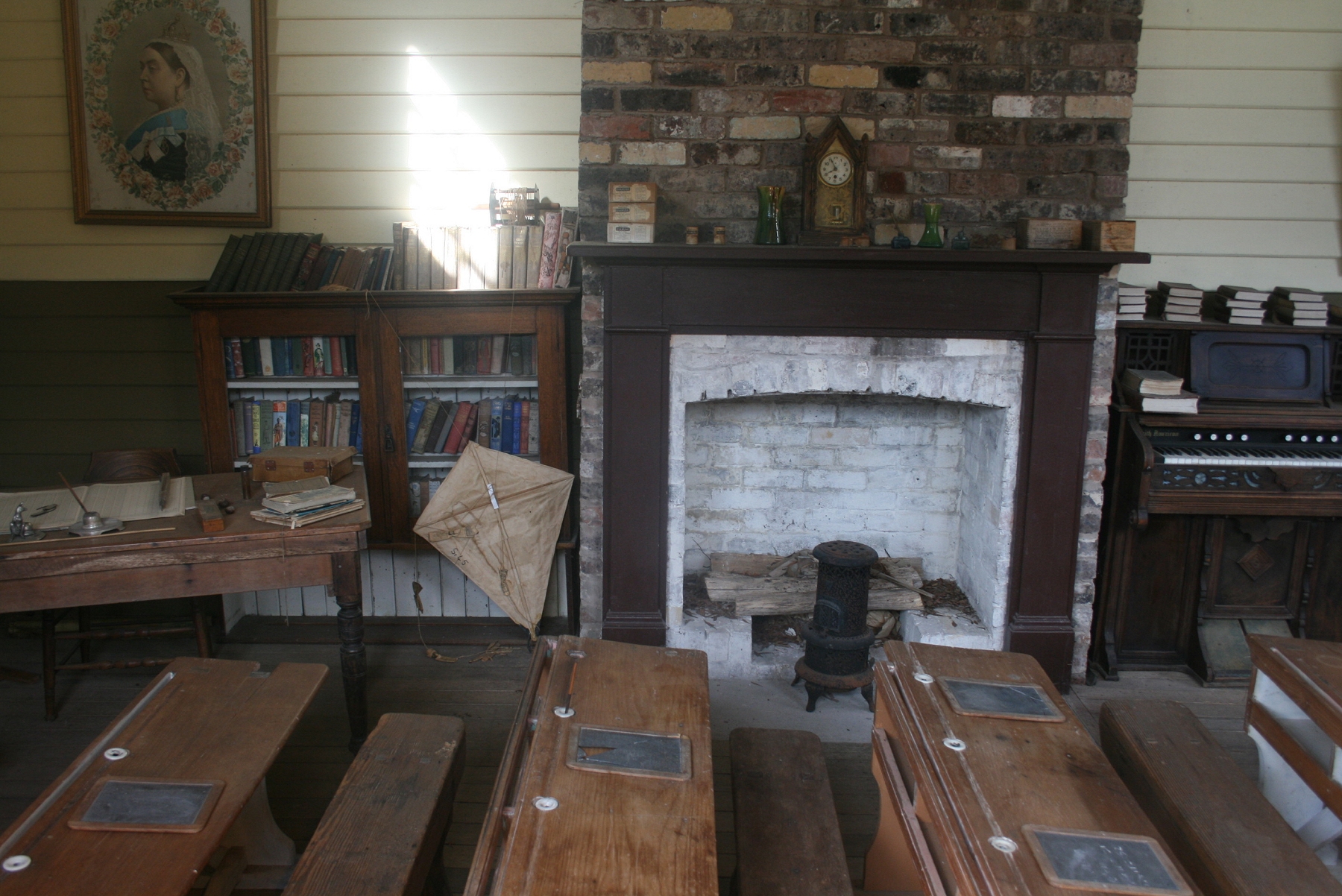
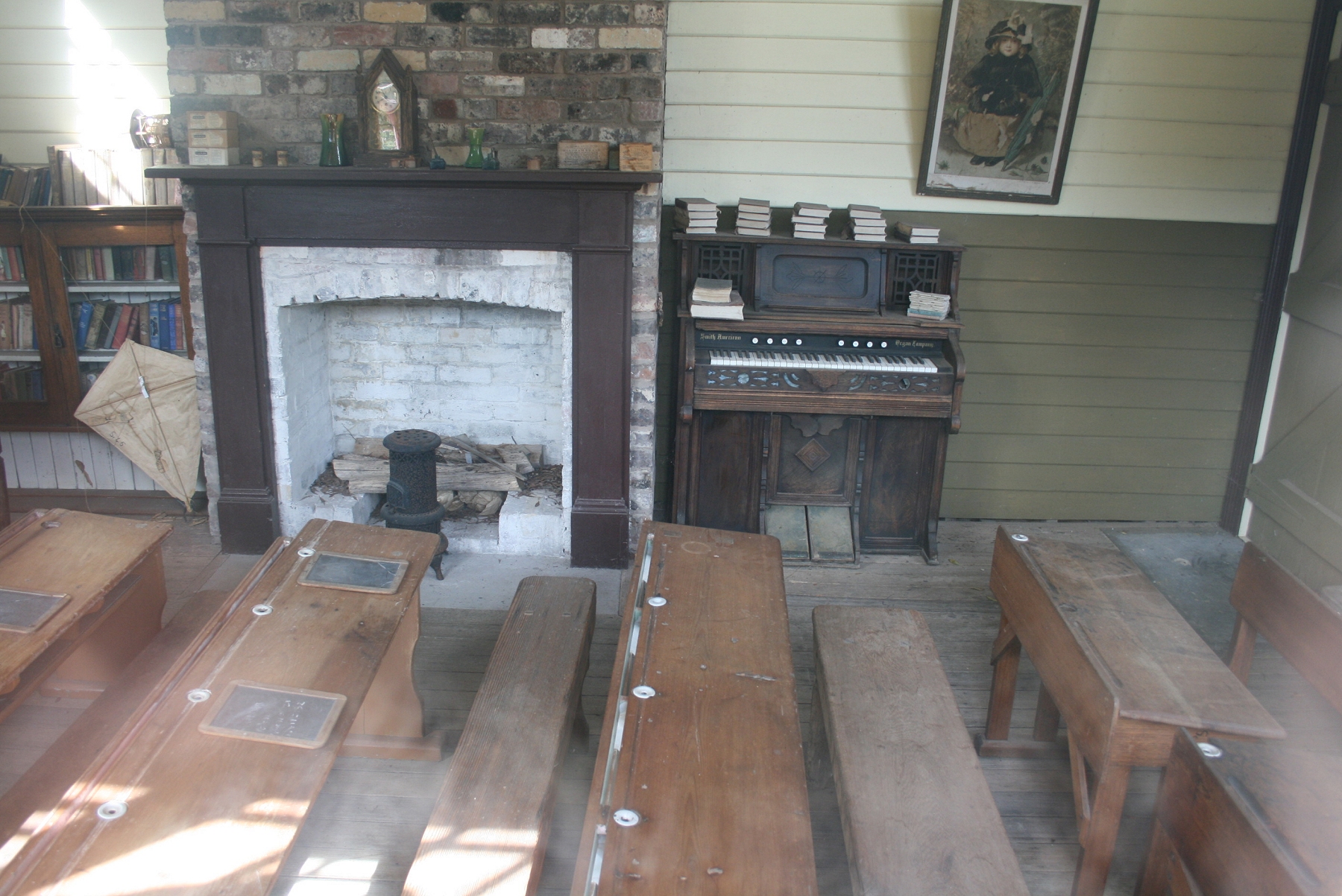
Shop
First photo is through large front window. Second photo is through small side window.
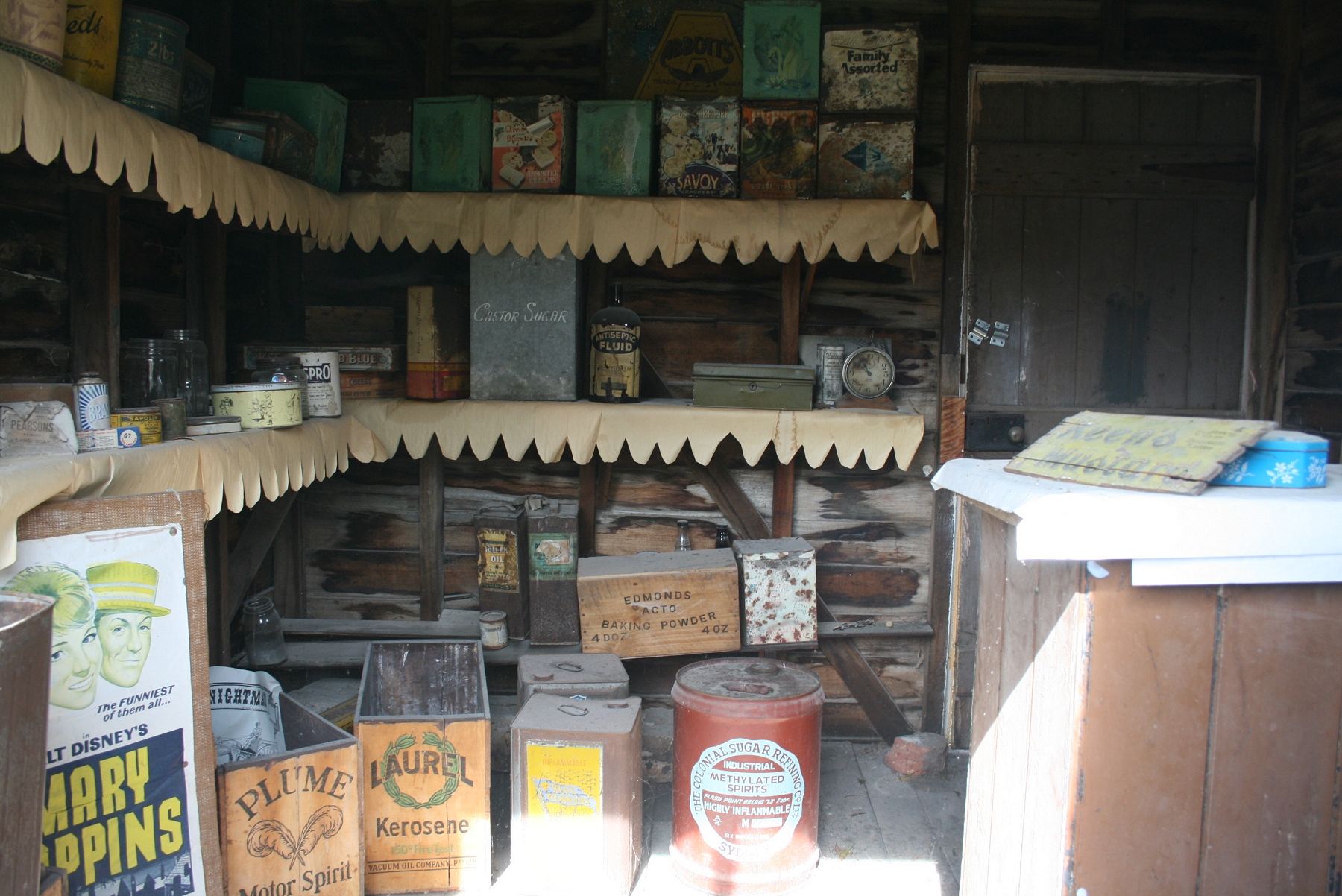
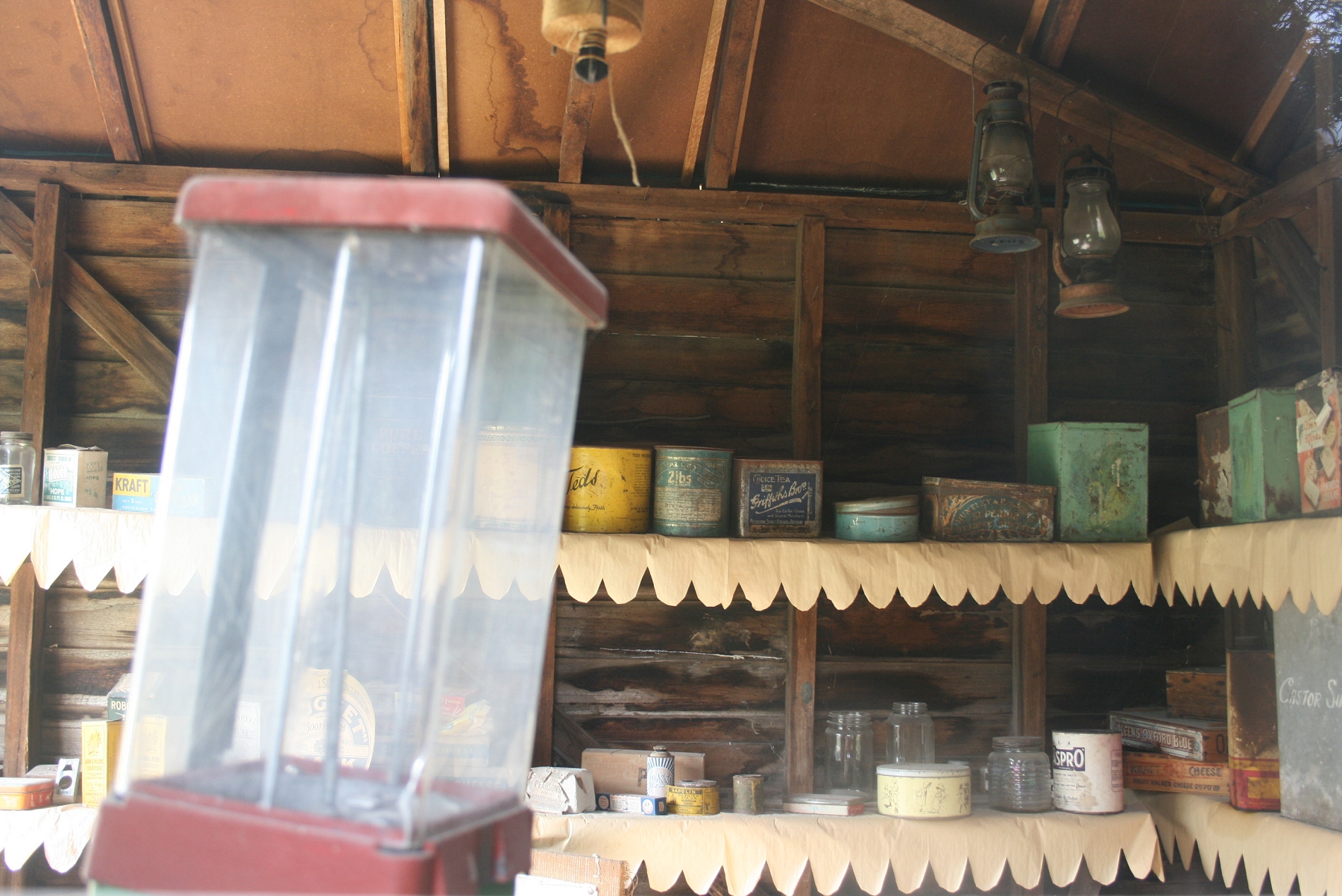
Miner’s Cottage, Beaconsfield
Opposite the Grubb Shaft Gold Museum (now Beaconsfield Mine & Heritage Centre) there's a small complex of recreated buildings with miner's cottage, school & shop. The school came from nearby Flower Gully. I can't remember the origin of the others.
The cottage consists of a single living room at the front (left to right when looking in the windows: fireplace & chair, table, bed) and a bathroom and dining/cooking room at the back. The latter visible through the door of the front room.
